Projects
[
Grants][
Ph.D. Dissertations][
MS Theses][
BS Theses][
Summer Internships]
Grants
Effectiveness of a Virtual Reality Courtroom to Support Survivors of Sexual Violence
The Icelandic Research Fund (2022-2024)
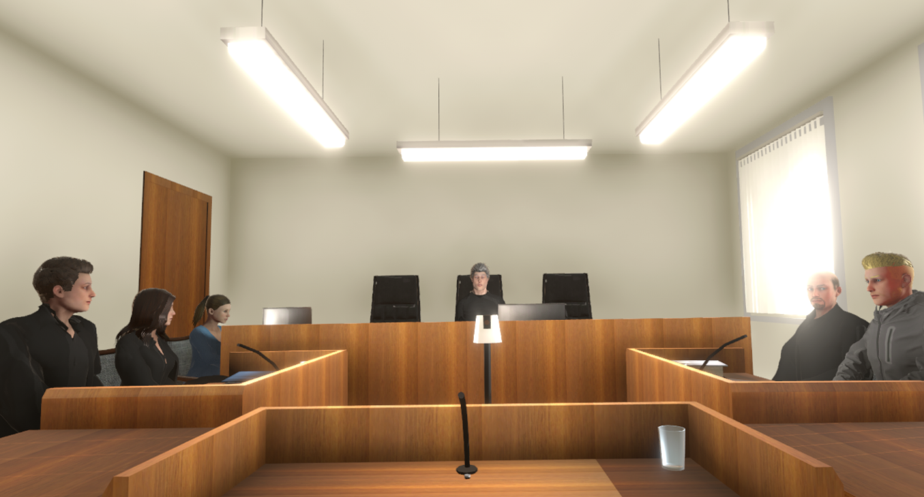 The overall goal of the project is to support survivors of sexual violence (SVS) by using a virtual reality courtroom (VRC). Previous research has shown that some SVS may be reluctant to report their victimization to criminal justice authorities, at least in part because they fear going to court, where they will encounter a process and environment that are foreign to them, they will have to recount their difficult experience and because they will most likely have to face the perpetrator. SVS commonly experience distress when testifying as part of their case in court and such distress can interfere with their memory of the event. We therefore propose using VRC as a method of helping survivors who may be interested in reporting their experience to the criminal justice system but are worried about testifying in court. Lead by Rannveig Sigurvinsdóttir and Bryndís Björk Ásgeirsdóttir, Department of Psychology at RU
The overall goal of the project is to support survivors of sexual violence (SVS) by using a virtual reality courtroom (VRC). Previous research has shown that some SVS may be reluctant to report their victimization to criminal justice authorities, at least in part because they fear going to court, where they will encounter a process and environment that are foreign to them, they will have to recount their difficult experience and because they will most likely have to face the perpetrator. SVS commonly experience distress when testifying as part of their case in court and such distress can interfere with their memory of the event. We therefore propose using VRC as a method of helping survivors who may be interested in reporting their experience to the criminal justice system but are worried about testifying in court. Lead by Rannveig Sigurvinsdóttir and Bryndís Björk Ásgeirsdóttir, Department of Psychology at RU
Spoken Dialogue Framework for Icelandic
Strategic Research and Development Programme for Language Technology (2021-2023)
 The aim of this project is to develop and publish an open source software framework for Spoken Dialogue Systems (SDS) in Icelandic with initial applications to automating telephone answering services and providing information for websites. The main components of an SDS are: 1) Automatic Speech Recognition (ASR), that converts the user’s voice to text; 2) Natural Language Understanding (NLU), that, for example, determines the intent of the user; 3) Dialogue Manager, which determines which action or response to take based on the voice command/query and/or information and policies of the system; 4) Natural Language Generation (NLG), that builds a text feedback; and 5) Text-to-Speech (TTS), that converts the text to voice feedback for the user. These modules will be developed or adapted for Icelandic during the project. Many components of these modules are already in development within the LT Programme for Icelandic, and thus the project will both benefit from and contribute to the LT Programme. To demonstrate the open SDS framework, two real-world use cases will be implemented and tested in collaboration with two partners from industry and public service. The project thus has a strong connection to both research and application development in Language Technology for Icelandic.
The aim of this project is to develop and publish an open source software framework for Spoken Dialogue Systems (SDS) in Icelandic with initial applications to automating telephone answering services and providing information for websites. The main components of an SDS are: 1) Automatic Speech Recognition (ASR), that converts the user’s voice to text; 2) Natural Language Understanding (NLU), that, for example, determines the intent of the user; 3) Dialogue Manager, which determines which action or response to take based on the voice command/query and/or information and policies of the system; 4) Natural Language Generation (NLG), that builds a text feedback; and 5) Text-to-Speech (TTS), that converts the text to voice feedback for the user. These modules will be developed or adapted for Icelandic during the project. Many components of these modules are already in development within the LT Programme for Icelandic, and thus the project will both benefit from and contribute to the LT Programme. To demonstrate the open SDS framework, two real-world use cases will be implemented and tested in collaboration with two partners from industry and public service. The project thus has a strong connection to both research and application development in Language Technology for Icelandic.
A Reliable Real-time Fatigue Risk Management Framework for ATC
The Icelandic Research Fund (2021-2023)
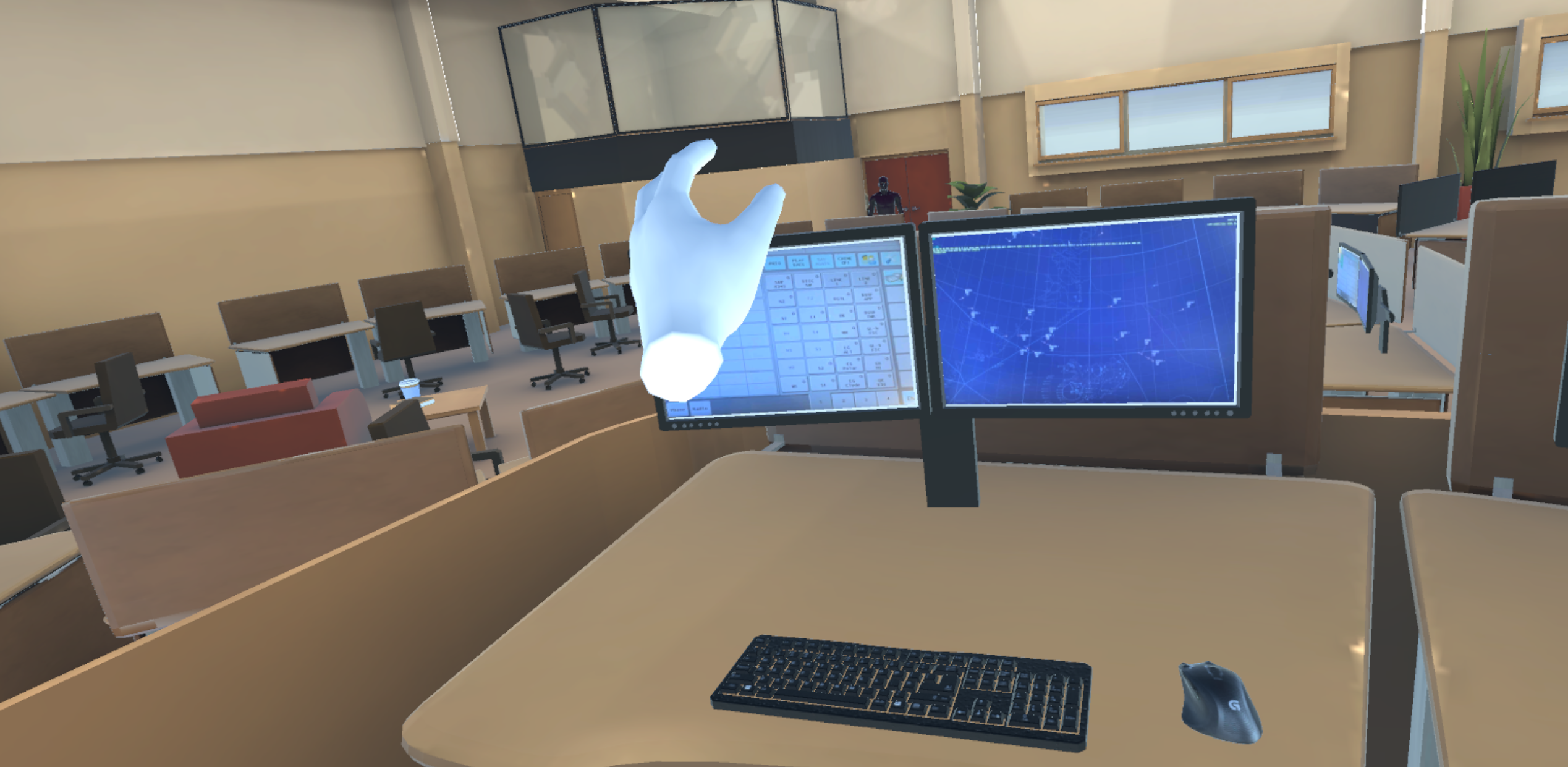 Fatigue as a result of stress, workload and sleep problems, poses a serious risk to air traffic control (ATC) operations. The objective of the project is to develop a reliable fatigue risk management framework (FRMF) for reducing the risk of fatigue induced performance errors. A multidimensional approach is used where fatigue monitoring is tailored to each individual ATC operator and integrated with fatigue intervention methods. The project will go beyond existing projects by classifying bio-signals (symptoms of fatigue) within the context of relevant causal information for each individual such as sleep habits, personality, cognitive capacity and mental health. The FRMF will use the context information for each individual operator for both enhanced online monitoring of fatigue and for properly calibrating fatigue intervention methods. A final prototype of FRMF will be tested in a simulated ATC field environment using virtual reality (VR) technology. A serious limitation to the existing methods is a lack of rigorous empirical testing in the field. VR offers an effective way to conduct in-the-field testing, allowing for environmental control and safe testing.Lead by Kamilla Rún Jóhannsdóttir, Department of Psychology at RU
Fatigue as a result of stress, workload and sleep problems, poses a serious risk to air traffic control (ATC) operations. The objective of the project is to develop a reliable fatigue risk management framework (FRMF) for reducing the risk of fatigue induced performance errors. A multidimensional approach is used where fatigue monitoring is tailored to each individual ATC operator and integrated with fatigue intervention methods. The project will go beyond existing projects by classifying bio-signals (symptoms of fatigue) within the context of relevant causal information for each individual such as sleep habits, personality, cognitive capacity and mental health. The FRMF will use the context information for each individual operator for both enhanced online monitoring of fatigue and for properly calibrating fatigue intervention methods. A final prototype of FRMF will be tested in a simulated ATC field environment using virtual reality (VR) technology. A serious limitation to the existing methods is a lack of rigorous empirical testing in the field. VR offers an effective way to conduct in-the-field testing, allowing for environmental control and safe testing.Lead by Kamilla Rún Jóhannsdóttir, Department of Psychology at RU
Cities that Sustain Us 3
Technical Development Fund: Vöxtur (2020-2021)
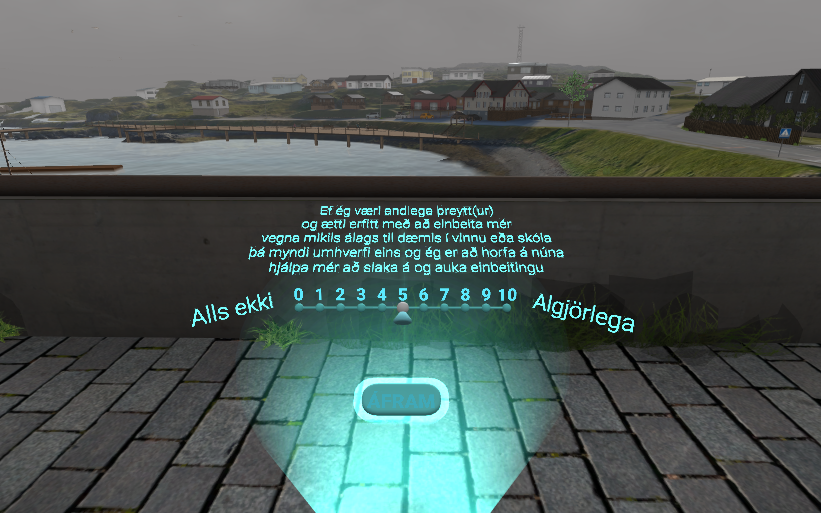 With rapidly increasing urban populations worldwide, questions about how to serve
psychological and social needs in urban design and planning have become increasingly acute. Cities that Sustain Us (CiSuUs) is an ongoing international project that offers a new ideological, methodological and technological approach to encourage psychological and social sustainable urban development. By applying the latest Virtual Reality technology, the project focuses on studying the psychological interaction between people and urban environments, in order to improve the urban quality. The new CiSuUs product offering is in two parts, building on the results of the project so far: 1) A powerful and accessible combination of software and visual display equipment, the VRPsychLab, that helps researchers build, configure and run psychological studies, with capture of affective, cognitive and physiological data using multiple methods; and 2) Consultancy to architects, planners, builders, stakeholders, authorities, and other relevant actors on how to make more psychologically and socially sustainable urban environments, resulting in better-informed decision making, lower risks of design and planning failures, and more efficient use of funds.
With rapidly increasing urban populations worldwide, questions about how to serve
psychological and social needs in urban design and planning have become increasingly acute. Cities that Sustain Us (CiSuUs) is an ongoing international project that offers a new ideological, methodological and technological approach to encourage psychological and social sustainable urban development. By applying the latest Virtual Reality technology, the project focuses on studying the psychological interaction between people and urban environments, in order to improve the urban quality. The new CiSuUs product offering is in two parts, building on the results of the project so far: 1) A powerful and accessible combination of software and visual display equipment, the VRPsychLab, that helps researchers build, configure and run psychological studies, with capture of affective, cognitive and physiological data using multiple methods; and 2) Consultancy to architects, planners, builders, stakeholders, authorities, and other relevant actors on how to make more psychologically and socially sustainable urban environments, resulting in better-informed decision making, lower risks of design and planning failures, and more efficient use of funds.
Character Territoriality: Social Spatial Reasoning for Digital Actors
The Icelandic Research Fund (2017-2019)
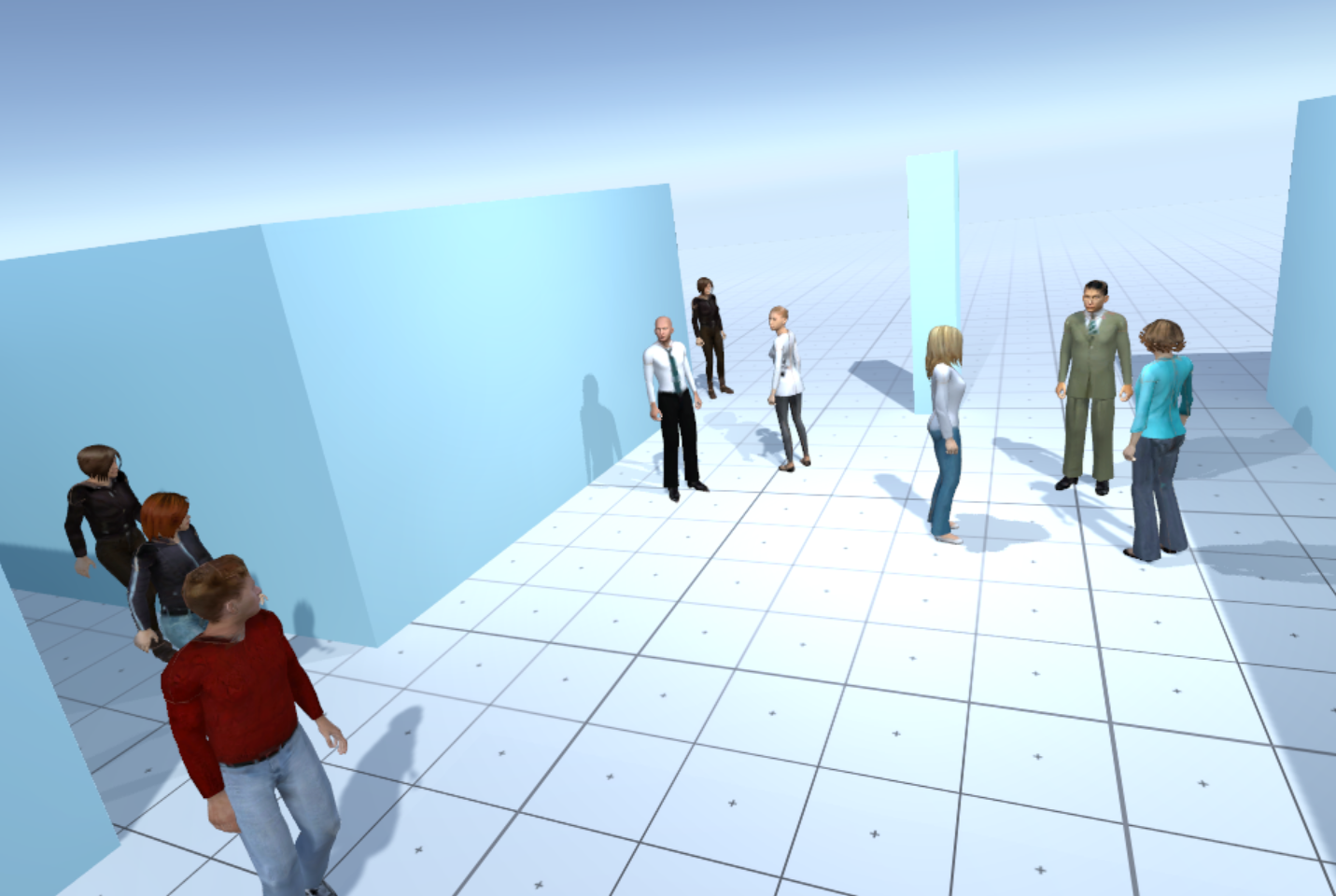 We propose to push the boundaries in modeling and synthesis of social character behavior by enriching the state-of-the-art with socio-territorial reasoning and spatial knowledge. Our approach aims to make digital characters more believable as well as deepen our understanding of human social behavior. As characters become more believable, interaction with them becomes more natural and the stories they populate more effective. Fundamental components for character automation include a navigation system and an animation system. While these components may produce natural movement they ignore social interaction, resulting in motion that is out of place when multiple characters occupy a space. We will wrap these two components in a third one that mimics how people reason about social space. The approach is based on the qualitative representation of space as described by theories of human territories, f-formation and proxemics. The work builds on our successful platform for reactive social intelligence and specifically addresses outstanding challenges: (1) Territorial Motion Interface, (2) Arbitration of Conflicting Socio-Territorial Movement, (3) Synchronization and Temporal Reasoning and (4) Representing and Reasoning about Context. Our methodology includes iterative design, fast prototyping, and subject evaluations of results. TELECOM ParisTech, MIT and Sólfar will be close collaborators, contributing expertise and applying the
results.
We propose to push the boundaries in modeling and synthesis of social character behavior by enriching the state-of-the-art with socio-territorial reasoning and spatial knowledge. Our approach aims to make digital characters more believable as well as deepen our understanding of human social behavior. As characters become more believable, interaction with them becomes more natural and the stories they populate more effective. Fundamental components for character automation include a navigation system and an animation system. While these components may produce natural movement they ignore social interaction, resulting in motion that is out of place when multiple characters occupy a space. We will wrap these two components in a third one that mimics how people reason about social space. The approach is based on the qualitative representation of space as described by theories of human territories, f-formation and proxemics. The work builds on our successful platform for reactive social intelligence and specifically addresses outstanding challenges: (1) Territorial Motion Interface, (2) Arbitration of Conflicting Socio-Territorial Movement, (3) Synchronization and Temporal Reasoning and (4) Representing and Reasoning about Context. Our methodology includes iterative design, fast prototyping, and subject evaluations of results. TELECOM ParisTech, MIT and Sólfar will be close collaborators, contributing expertise and applying the
results.
Cities that Sustain Us 2: Creating Virtual Futures
Technical Development Fund: Applied Research (2017-2019)
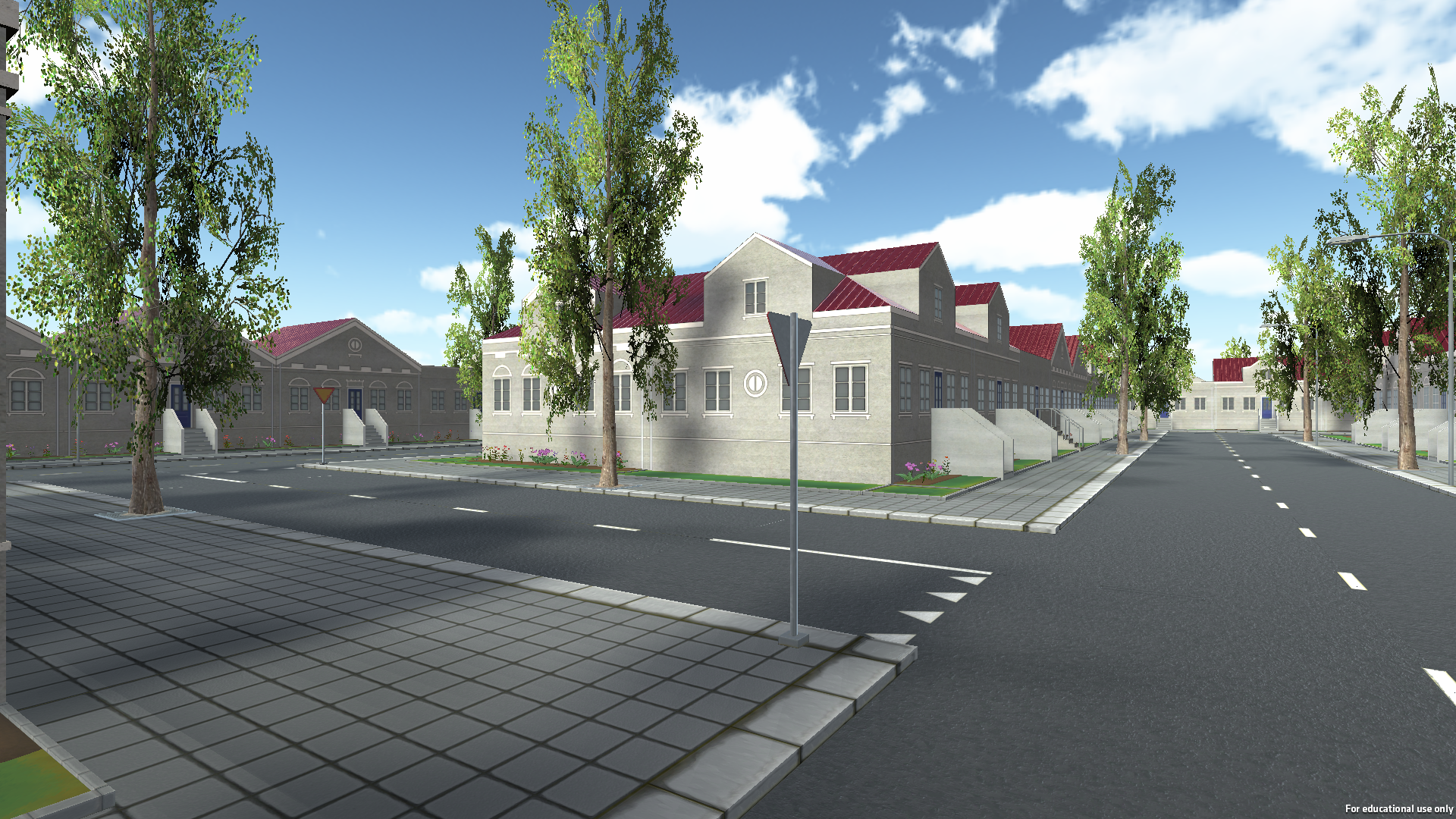 Psychological factors are often neglected in environmental design and planning processes initiating dissatisfying and unsustainable urban development. To encourage more humane and sustainable urban development, better approaches must be implemented. They can build on the vast scientific literature in environmental psychology and new technological solutions. Computer and virtual reality technology, where people can interact directly with a high quality, virtual environment in controlled settings, opens up new opportunities for people-environment studies. However, the level of computer expertise required to build, configure and carry out studies utilizing the technology seems to be an obstacle. In the "Cities that Sustain Us" project we bridged the gap with a powerful software to run VR-based environmental studies. In this project “Cities that Sustain Us 2: Creating Virtual Futures”, we plan further developments of the VR-based approach while applying it to real-world planning projects.
Psychological factors are often neglected in environmental design and planning processes initiating dissatisfying and unsustainable urban development. To encourage more humane and sustainable urban development, better approaches must be implemented. They can build on the vast scientific literature in environmental psychology and new technological solutions. Computer and virtual reality technology, where people can interact directly with a high quality, virtual environment in controlled settings, opens up new opportunities for people-environment studies. However, the level of computer expertise required to build, configure and carry out studies utilizing the technology seems to be an obstacle. In the "Cities that Sustain Us" project we bridged the gap with a powerful software to run VR-based environmental studies. In this project “Cities that Sustain Us 2: Creating Virtual Futures”, we plan further developments of the VR-based approach while applying it to real-world planning projects.
Cities that Sustain Us: Using Virtual Reality to Test the Restorative Potential of Future Urban Environments
The Icelandic Research Fund (2014-2016)
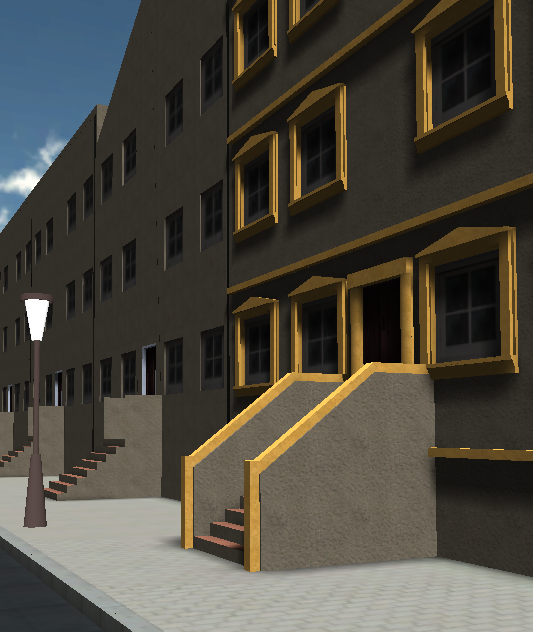 The world’s rapid population growth is concentrating in cities, raising concerns about environmental, economic and social sustainability. The compact city has been proposed as a promising urban form to increase sustainability, but empirical work has not supported the link between urban density and sustainability. A possible explanation might be the common neglect of psychological factors in design and planning processes. The restorative environmental design approach (RED) suggests applying knowledge about basic human needs for restoration, which is the renewal of psychological, physical and social resources that individuals use to meet everyday demands. Guided by RED, virtual reality (VR) where humans can be placed inside high-quality interactive rendering of a configurable urban environment, can be the tool needed to evaluate restorative quality in future designs. The aim of this project is to reinforce the foundation of RED and apply it for future development of an existing low dense neighborhood in Reykjavik using a new instrumented VR laboratory. We propose three studies that answer the following key questions: (1) Are the restorative effects measured in a virtual environment indicative of the restorative effects of a corresponding real environment? (2) Can we estimate the restorative impact of specific environmental design measures? (3) Can we use those design measures to densify an existing urban environment with low density and low restorative potential?
The world’s rapid population growth is concentrating in cities, raising concerns about environmental, economic and social sustainability. The compact city has been proposed as a promising urban form to increase sustainability, but empirical work has not supported the link between urban density and sustainability. A possible explanation might be the common neglect of psychological factors in design and planning processes. The restorative environmental design approach (RED) suggests applying knowledge about basic human needs for restoration, which is the renewal of psychological, physical and social resources that individuals use to meet everyday demands. Guided by RED, virtual reality (VR) where humans can be placed inside high-quality interactive rendering of a configurable urban environment, can be the tool needed to evaluate restorative quality in future designs. The aim of this project is to reinforce the foundation of RED and apply it for future development of an existing low dense neighborhood in Reykjavik using a new instrumented VR laboratory. We propose three studies that answer the following key questions: (1) Are the restorative effects measured in a virtual environment indicative of the restorative effects of a corresponding real environment? (2) Can we estimate the restorative impact of specific environmental design measures? (3) Can we use those design measures to densify an existing urban environment with low density and low restorative potential?
Icelandic Language and Culture Training in Virtual Reykjavík
The Icelandic Research Fund (2013-2015)
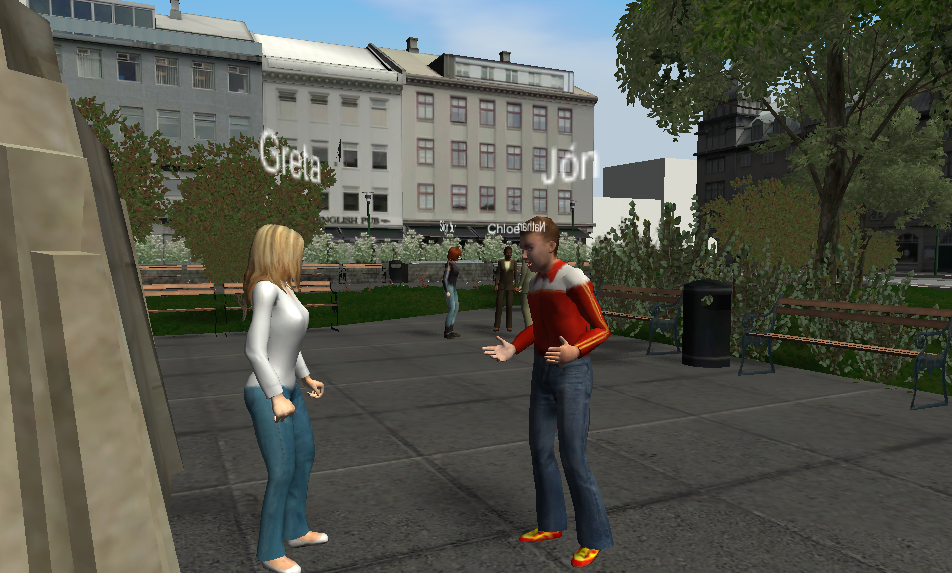 The objective of this project is to simultaneously advance the state of the art in technology for virtual language training environments and bring the latest
methods of language and culture learning to the instruction of Icelandic. We propose a new technology that builds on advanced systems for spoken language training being developed at Alelo Inc, a collaborating company in the US, but adds the results of CADIA’s recent Icelandic Research Fund Grant of Excellence project “Humanoid Agents in Social Game Environments” (2008-2010) to produce far more realistic interactions with people in the virtual environment. The method we propose for learning Icelandic, is to acquire basic communication skills in interactive lessons but immediately put them to use in a 3D game that puts you on a street corner in Reykjavík. The learner becomes an antagonist in a story that can only be completed by speaking with the various people around you in the simulated environment. We will evaluate the effectiveness of this method and report to the research community as well as the language teaching community in Iceland. In addition to these main goals, the project will incorporate and continue to improve the latest work on Icelandic speech recognition and will also incorporate and add to an ongoing effort to create a virtual Reykjavík. This project is very interdisciplinary in nature and is a collaboration between Reykjavík University and the University of Iceland.
The objective of this project is to simultaneously advance the state of the art in technology for virtual language training environments and bring the latest
methods of language and culture learning to the instruction of Icelandic. We propose a new technology that builds on advanced systems for spoken language training being developed at Alelo Inc, a collaborating company in the US, but adds the results of CADIA’s recent Icelandic Research Fund Grant of Excellence project “Humanoid Agents in Social Game Environments” (2008-2010) to produce far more realistic interactions with people in the virtual environment. The method we propose for learning Icelandic, is to acquire basic communication skills in interactive lessons but immediately put them to use in a 3D game that puts you on a street corner in Reykjavík. The learner becomes an antagonist in a story that can only be completed by speaking with the various people around you in the simulated environment. We will evaluate the effectiveness of this method and report to the research community as well as the language teaching community in Iceland. In addition to these main goals, the project will incorporate and continue to improve the latest work on Icelandic speech recognition and will also incorporate and add to an ongoing effort to create a virtual Reykjavík. This project is very interdisciplinary in nature and is a collaboration between Reykjavík University and the University of Iceland.
Social Engine for Games: Automating Social Behavior for Player Avatars and NPCs
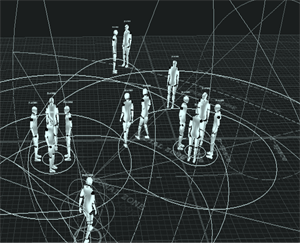 In most social virtual environments such as Second Life or World of Warcraft, where users are represented by graphical avatars, the expression of communicative intent and social behavior relies on explicit user input such as by picking "wave" from a menu or inserting emoticons into chat text. This approach is fine for deliberate acts, but to portray continuous and relevant social presence through appropriate nonverbal behavior, it is impossible to rely on user micro-management. In the same way that avatars autonomously animate walk cycles and physical collisions when told to traverse virtual terrain, they need to automate spontaneous social cues such as gaze and posture to reveal the nature of their social situation. We are building tools that explore the automation of social behavior in avatars and agents based on theories of social interaction. For example, we built CADIA Populus as a tool that models territorial group dynamics as a set of social norms that shape appropriate reactive behavior. The Impulsion Engine is a tool developed further in collaboration with the Icelandic Institute for Intelligent Machines and now, Claudio Pedica, maintains The Impulsion Project which aims at getting the tools into the popular Unity 3D game development environment.
In most social virtual environments such as Second Life or World of Warcraft, where users are represented by graphical avatars, the expression of communicative intent and social behavior relies on explicit user input such as by picking "wave" from a menu or inserting emoticons into chat text. This approach is fine for deliberate acts, but to portray continuous and relevant social presence through appropriate nonverbal behavior, it is impossible to rely on user micro-management. In the same way that avatars autonomously animate walk cycles and physical collisions when told to traverse virtual terrain, they need to automate spontaneous social cues such as gaze and posture to reveal the nature of their social situation. We are building tools that explore the automation of social behavior in avatars and agents based on theories of social interaction. For example, we built CADIA Populus as a tool that models territorial group dynamics as a set of social norms that shape appropriate reactive behavior. The Impulsion Engine is a tool developed further in collaboration with the Icelandic Institute for Intelligent Machines and now, Claudio Pedica, maintains The Impulsion Project which aims at getting the tools into the popular Unity 3D game development environment.
Ph.D. Dissertations
Agora: Unified Framework for Crowd Simulation Research
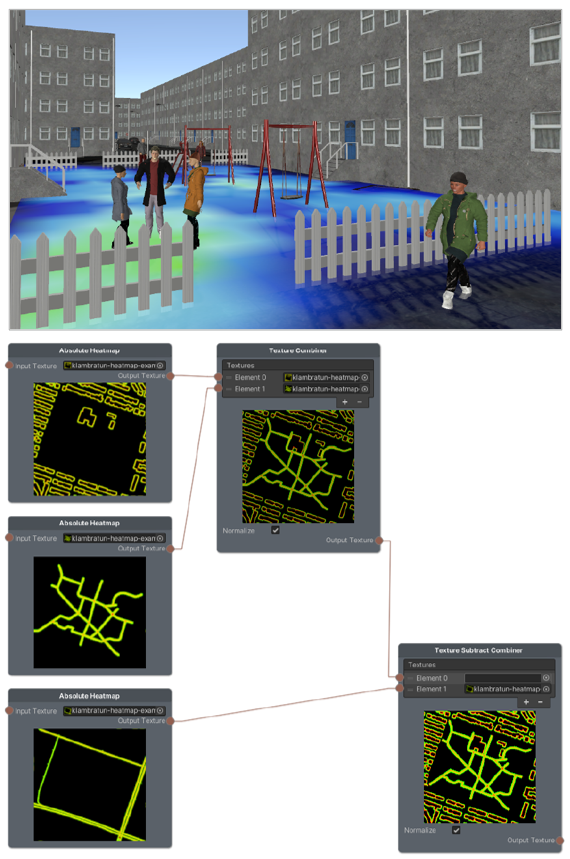 PhD Project of Michelangelo Diamanti (Graduated Spring 2023)
PhD Project of Michelangelo Diamanti (Graduated Spring 2023)
Crowd simulation focuses on modeling the movements and behaviors of large groups of people. This area of study has become increasingly important because of its several applications in various fields such as urban planning, safety, and entertainment. In each of these domains, the presence of virtual agents exhibiting realistic behavior greatly enhances the quality of the simulations. However, the inherently multifaceted and intricate nature of human behavior presents a unique challenge, necessitating the effective combination of multiple behavior models.
This thesis introduces a novel theoretical framework for modeling human behavior in crowd simulations, addressing the unresolved issue of combining a plethora of behavior models, often developed in isolation. The proposed framework decomposes human behavior into fundamental driving stimuli, which are then represented graphically through the heatmap paradigm. Subsequently, the agent behavior is influenced by the heatmaps, which guide them toward attractive areas and steer them away from repulsive locations based on the encoded stimuli. A key advantage of this approach lies in the ability to combine heatmaps using well-defined color operations, effectively integrating different aspects of human behavior. Furthermore, the heatmap paradigm facilitates objective comparison of simulation output with real-world data, employing image similarity metrics to evaluate model accuracy.
To realize this framework, the thesis presents a modular software architecture designed to support various tasks involved in crowd simulation, emphasizing the separation of concerns for each task. This architecture comprises a collection of abstract modules, which are subsequently implemented using appropriate software components to realize the underlying features, resulting in the Agora framework. To assess the ability of Agora to support the various tasks involved in crowd simulation, two case studies are implemented and analyzed. The first case study simulates tourists visiting Þingvellir national park in Iceland, examining how their behavior is influenced by the visibility of the surrounding environment. The second case study employs Agora to model the thermal and density comfort levels of virtual pedestrians in an urban setting.
The results demonstrate that Agora successfully supports the development, combination, and evaluation of crowd simulation models against real-world data. The authoring process, assisted by Agora, is significantly more streamlined compared to its native counterpart. The integration of multiple models is achieved by combining the heatmaps, resulting in plausible behavior, and the model assessment is made convenient through the evaluator within the framework. The thesis concludes by discussing the implications of these findings for the field of crowd simulation, highlighting the contributions and potential future directions of the Agora framework.
First Impressions in Human-Agent Virtual Encounters
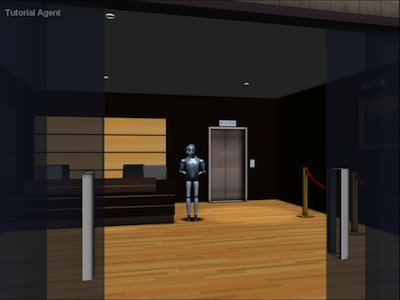 PhD Project of Angelo Cafaro (Graduated Spring 2014)
PhD Project of Angelo Cafaro (Graduated Spring 2014)
Relational Agents (RAs) are anthropomorphic virtual characters able to engage in multimodal face-to-face dialogue with users in real-time. RAs are also capable of establishing and maintaining a long-term relationship with the user, which has been shown to improve task outcomes in application domains such as coaching, counseling, psychotherapy and healthcare. For these applications, it is crucial that users do not outright reject the agent, therefore first impressions are important. Our goal is to develop new methods for building effective RAs capable of managing their first impressions on users. We focus on the nonverbal behavior required for exhibiting a consistent personality and clear interpersonal attitude towards the user at the beginning of an encounter. The project has humanistic and computational components. The analysis and modeling of nonverbal communicative behavior is drawn from existing literature in sociology and psychology, as well as from new data gathered from controlled user studies. The computational component implements those models in virtual agents, resulting in believable and effective social behaviors. Results undergo a thorough user evaluation. This is a collaboration with the Relational Agents Group at Northeastern University.
MSc Thesis Projects
Subtle Social Maneuvering for MetaHumans
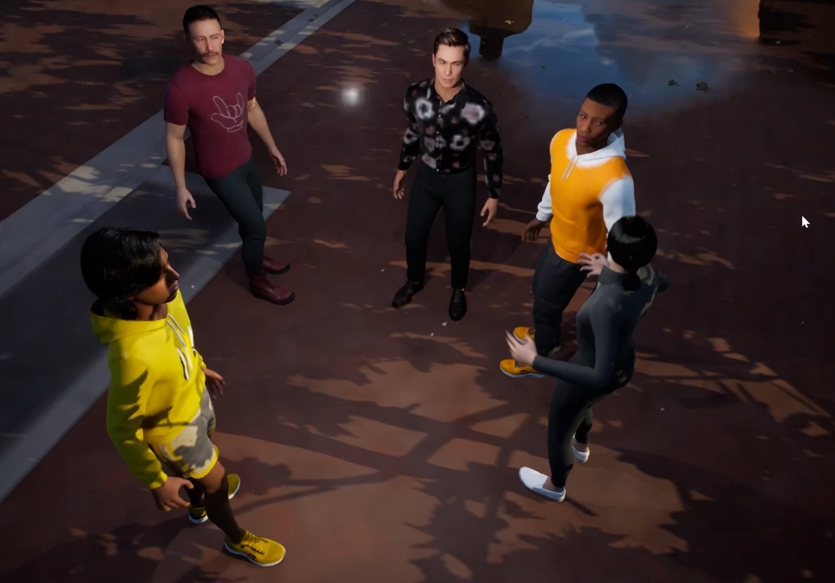 M. Sc. Thesis of Kjartan Már Andersen (Graduated Fall 2025 - 30 ECTS
M. Sc. Thesis of Kjartan Már Andersen (Graduated Fall 2025 - 30 ECTS
Recent advances in computer graphics have made it possible for virtual environments to feature realistic lighting and 3D models. Such 3D models can be achieved using the MetaHuman framework, which allows for creating photorealistic virtual characters. With these advances the focus starts to shift for better character locomotion and AI behavior. The characters must be able to showcase behavior that are closer to that of a human being. If the characters does not exhibit human like behavior than a user observing the character might feel at unease with the character, a phenomenon known as the uncanny valley. This thesis presents a system for virtual agents capable of performing realistic non-verbal social maneuvers in a virtual environment. Built on the MetaHuman framework in the Unreal Engine, the system integrates high fidelity character models with independently controlled body regions including gaze, head, chest, and a novel feet orientation subsystem allowing agents to express nuanced social behaviors such as low- and high-commitment interactions. A behavior component coordinates these body motions according to social dynamics, while a group conversation system manages turn-taking and multi-agent coordination within conversation circles. The design is grounded in established social theories by Scheflen and Kendon, particularly concerning interpersonal spacing, body regions, and Fformations. Evaluations demonstrate that the system not only supports believable agent behavior but is also flexible and easily configurable, enabling rapid adjustments to orientation speed, target selection, and social engagement parameters. This work contributes to the development of socially intelligent virtual agents for applications in games, virtual reality, and interactive simulations, bridging the gap between theoretical social behavior and practical, real-time implementation.
Deep Reinforcement Learning for Physics-based Animation of Human Motion
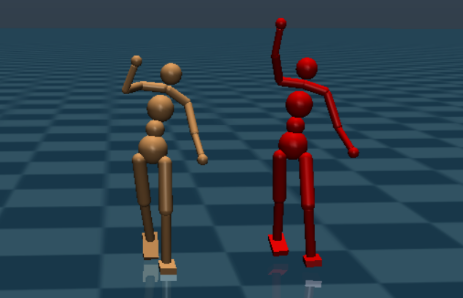 M. Sc. Thesis of Saul Omar Vilchez Sullca (Graduated Fall 2024 - 60 ECTS)
M. Sc. Thesis of Saul Omar Vilchez Sullca (Graduated Fall 2024 - 60 ECTS)
In recent years, advancements in 3D technology and artificial intelligence have significantly enhanced the capabilities of virtual humans. As a result, virtual humans are increasingly used across various virtual environments. However, to create a truly dynamic and realistic experience, it is essential to incorporate physics-based animation a technique that utilizes the laws of physics to govern character movement. This thesis explores the methods used to animate a 3D humanoid through physics and investigates how integrating a few new techniques can elevate the current state of the art. The work focuses on motion mimicking techniques, primarily employing deep reinforcement learning, a method that is increasingly applied for robots and virtual humans. Additionally, the aim is to simulate social scenarios, examining how motion mimicking can facilitate social task completion, such as approaching another human. Numerical results demonstrate that our methods perform comparably to other current state-of-the-art approaches. In fact, task completion results show improvement over the state of the art. Finally, a human subject survey indicated that the proposed methods can achieve realistic animation of high quality. In conclusion, deep reinforcement learning methods are capable of achieving good physics-based animation results; however, the results depend on choosing the right methods for each type of problem to get good results.
Video Game Control using EEG Motor Imagery
 M. Sc. Thesis of Francesco Moschella (Graduated Fall 2024 - 30 ECTS)
M. Sc. Thesis of Francesco Moschella (Graduated Fall 2024 - 30 ECTS)
Nowadays, enhancing the quality of life for individuals with reduced mobility or physical disabilities is a crucial challenge. In recent years, new technologies and techniques, such as Human-Computer Interfaces and, more specifically, Brain-Computer Interfaces have emerged as viable solutions. The research has focused on developing applications and devices that allow people to complete everyday tasks autonomously or with minimal need for external caregivers. This thesis focuses on brain-computer interfaces and tries to solve one major problem of these kinds of technologies: the time gap between the user action intention and the actual application of it. We present a quasi-real-time ElectroEncephaloGraphy Motor Imagery classification system, a pipeline to integrate the classification system and seamlessly control external devices or applications, and a data augmentation system that allows rapid and efficient testing. We will also present a virtual environment that we used to test the pipeline. We tested the system with an EEG cap and volunteers to verify the network and the pipeline. We found the network to be accurate and resource-efficient, and the pipeline fast and flawless, with an average of 650~ms between the user movement intention and the application in the virtual environment. This is an improvement over the average values found during the literature review, which report the need for an EEG recording between 4 and 8 seconds that has to be processed, classified, and sent to the controlled device.
Virtual Humans Making First Contact: Teaching Socially Appropriate Approaching Behavior Using Deep Reinforcement Learning
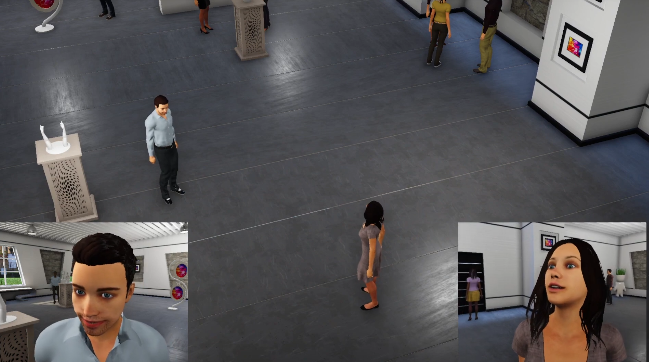 M. Sc. Thesis of Anna Franziska Horne (Graduated Spring 2023 - 30 ECTS)
M. Sc. Thesis of Anna Franziska Horne (Graduated Spring 2023 - 30 ECTS)
Socially appropriate behavior of humans in public places is governed by various factors and rules. While these aspects have been previously well-explored for virtual humans engaged in focused interactions (e.g. conversations), the same is not true for unfocused interactions (e.g. merely being present in the same social situation), and for the shift from unfocused to focused interactions (e.g. approaching someone for a conversation). The goal of this thesis is to teach virtual humans a sense of appropriate social behavior when approaching a stranger for a conversation in a public place, using deep reinforcement learning. To that end, a model of a socially appropriate approaching behavior is devised, based on empirical studies and previous research. Using deep reinforcement learning in Unity and experimenting with different reward functions, virtual humans (agents) are trained to approach another virtual human (target), while adhering to this model as much as possible. The results are assessed numerically, as well as visually. Finally, a perceptual study compares the best-performing well-trained agent with a baseline agent. The results show that statistically, the well-trained agent causes significantly fewer social offenses (i.e. violates the rules of the model less often) than the baseline agent. The results of the perceptual study also show that participants find the behavior of the well-trained agent overall significantly more socially appropriate than the behavior of the baseline agent. In conclusion, using deep reinforcement learning to teach an agent appropriate social behavior could prove to be a valid alternative to crafting and implementing rule-based behaviors.
Learning the Txalaparta: Intimate Musical Collaboration with a Deep Learning Model
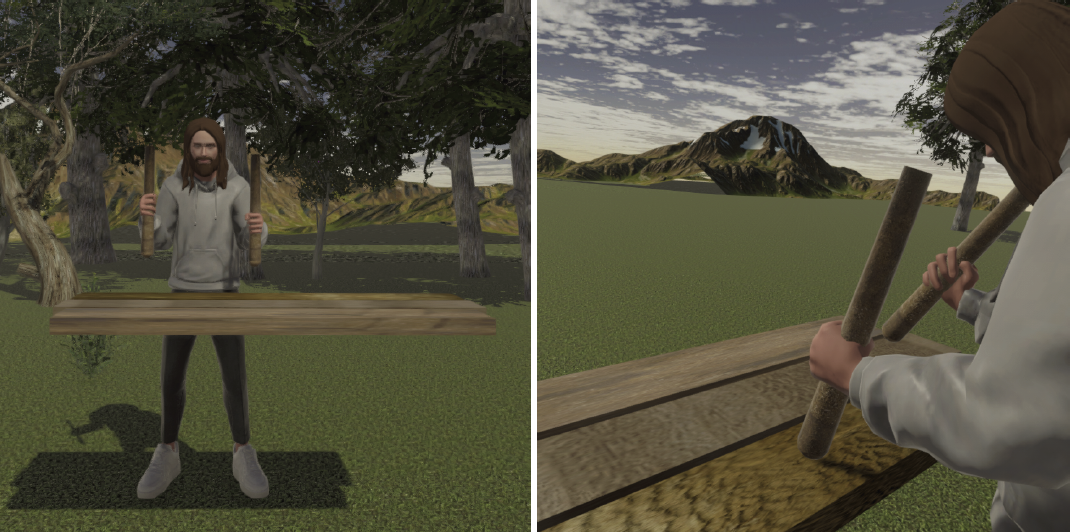 M. Sc. Thesis of Karl Jóhann Jóhansson (Graduated Spring 2023 - 30 ECTS)
M. Sc. Thesis of Karl Jóhann Jóhansson (Graduated Spring 2023 - 30 ECTS)
Recent advancements in deep learning have created many opportunities in the field of music. This project explores training deep learning models to play a percussion instrument collaboratively with a human player. The aim is to create a system that convincingly responds to the human player's performance. Music generation is more commonly handled offline than in a performance environment, where the model's response must feel instantaneous, organic, and sensible in response to the user's input. Two deep learning models were trained on high-quality data abstracted from a collaborative percussion instrument, the txalaparta. The thesis explores the design and implementation of the system, including the choice of deep learning models, data collection, and training procedures. The research demonstrates the potential of deep learning in creating intelligent musical systems that can collaborate with human performers. The thesis concludes with reflections on the future of collaborative music-making with intelligent systems and what elements such a system must possess to be useful.
Software Service Oriented Framework for Multilingual Conversational Agents
 M. Sc. Thesis of Elías Ingi Björgvinsson (Graduated Spring 2022 - 30 ECTS)
M. Sc. Thesis of Elías Ingi Björgvinsson (Graduated Spring 2022 - 30 ECTS)
This year marks the end of the three-year Language Technology Programme for Icelandic (Máltaekniáætlun), and various language technology tools for Icelandic have already emerged. For example, the language technology startup Tiro has created automatic speech recognition for Icelandic, and it has a development server running text-to-speech web services. RESTful APIs have become increasingly popular as a solution in software development, as modular application architectures usurp monolithic application architectures. Aside from the fact that the overall speed of the Internet is improving, the use of RESTful APIs is a realistic option even in the most demanding situations in terms of an application's responsiveness. An architecture for an Embodied Conversation Agent that relies on such services may be possible, but response times must be within a certain range in order to maintain a natural flow of conversation. The objective of this project is to investigate the possibilities in this context. Is it possible to create an Embodied Conversational Agent that uses web services for the full natural language technology pipeline including speech recognition, natural language understanding, natural language generation, and text-to-speech? The goal is to design a modular system that meets all the basic Embodied Conversational Agent (ECA) system requirements, but also extends those requirements by supporting the switching of languages on the fly. This is something that the modular service-based approach makes possible. The evaluation is carried out by timing turn-taking events and system events in order to identify system bottlenecks, and comparing the times to what humans can normally handle in conversations face-to-face. Implications of the findings for the development of multilingual conversational agents are discussed, especially with regard to how to make the most of the products and services coming out of the Icelandic Language Technology Programme.
The Use of VR During Testing of Fatigue in Air Traffic Controllers
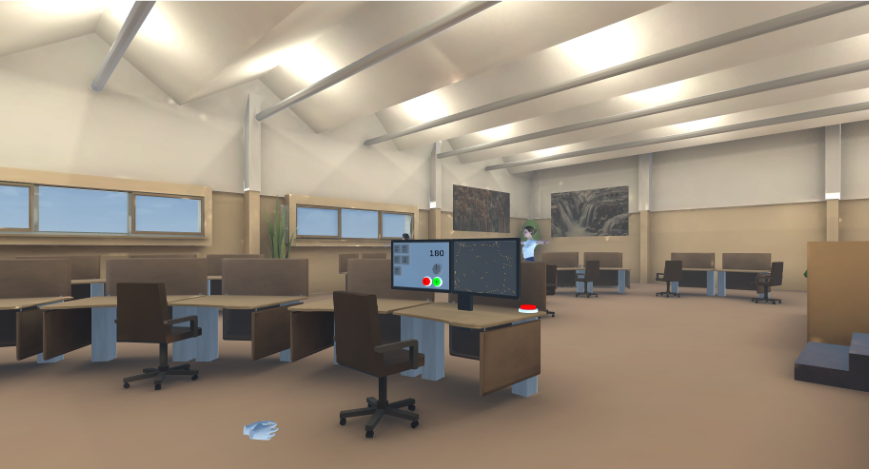 M. Sc. Thesis of Emil Þór Emilsson (Graduated Spring 2022 - 60 ECTS)
M. Sc. Thesis of Emil Þór Emilsson (Graduated Spring 2022 - 60 ECTS)
Air traffic control (ATC) aims to transport aeroplanes safely and efficiently through the airspace. This job requires the workers to stay alert and be constantly monitoring the traffic to avoid catastrophic incidents. It is therefore very important to track and manage fatigue among air traffic control workers during their shifts. It is also important to ensure optimal working conditions. However, it is difficult to conduct studies in a live air traffic control environment due to the sensitive work that takes place there around the clock. That is why a simulation of the complete working environment of the air traffic controllers in virtual reality (VR) can come in very handy. This thesis contributes to the project "A Reliable Real-time Fatigue Risk Management Framework in ATC" by constructing such a simulated environment, which will get used to test fatigue management strategies and how external factors in the work environment may affect the workers. Attention to detail is very important when modeling the virtual ATC center. Lighting, textures and sound were key elements to make the environment come to life. Various tools exist for the development of interactive applications and games in VR but the approach taken here was to implement all interactivity from scratch to gain deeper understanding of the fundamental VR paradigms and their implementation. This thesis work was done in collaboration with the ISAVA air navigation service, therefore it was possible to acquire valuable real-world reference data and gain direct inspiration from the air traffic controllers themselves. An interactive task was created inside the virtual control center as a tool for collecting data on the impact of the environment on people’s ability to carry out difficult work that required full attention. In the task, users navigate aeroplanes, represented by icons on a virtual screen, through a course where the goal is to safely navigate the planes from start to finish, by communicating with their crew. A short pre-pilot was run with experienced air traffic controllers to test and evaluate the system, including conducting a survey that will become a part of the main study. The principal contribution in this thesis work is the virtual air traffic control center, which is an essential component for the full project, an interactive virtual workstation which runs the task that users perform inside the virtual environment and finally a study script which includes an online survey and corresponding testing workflow from start to finish. Based on the feedback from the experts, overall the virtual ATC control center achieved a level of realism and usability that exceeded expectations with minimal simulator sickness symptoms. It represents a new state of the art in tools for conducting psychological studies in sensitive work environments.
Evaluating Input Methods in VR for Special Education Teachers
 M. Sc. Thesis of Valentin Aurel Antoni (Co-Supervision - Graduated from TU Munchen Fall 2021 - 30 ECTS)
M. Sc. Thesis of Valentin Aurel Antoni (Co-Supervision - Graduated from TU Munchen Fall 2021 - 30 ECTS)
The aim of this thesis is to develop a virtual reality trainer for the training of special educators, in order for them to acquire new skills in specific teaching techniques. All aspects of this work were conducted in collaboration with Reykjavik University, where a similar trainer was already designed in 2017. After conducting a pre-study involving expert interviews, the goal is to improve on the existing trainer by adding new interaction modalities, such as voice input and virtual touch. In addition to that, the state of the art is pushed even further by introducing augmented virtuality through physical objects in a second version of this trainer. For this, an approach for tracking 3D-printed objects is implemented, to map their position from the real world to the augmented virtual world.
An Interactive Visualization of a Multi-Agent System in VR
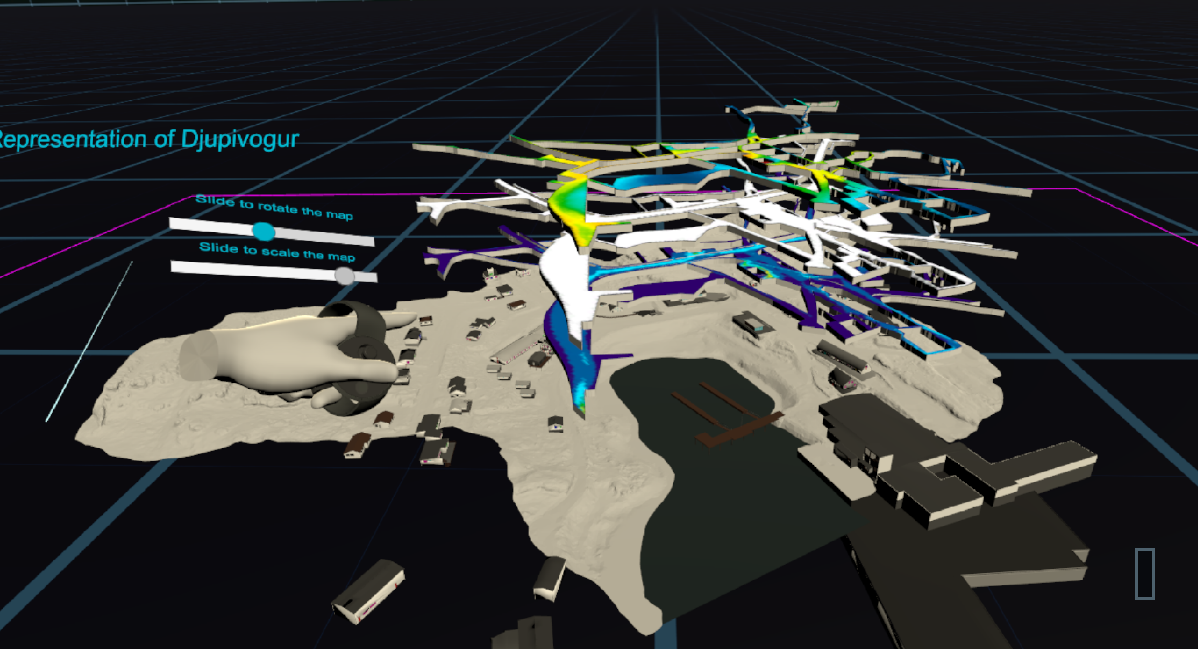 M. Sc. Thesis of Dario Rizzo (Graduated Winter 2020 - 30 ECTS)
M. Sc. Thesis of Dario Rizzo (Graduated Winter 2020 - 30 ECTS)
Explores the Virtual Reality visualization and interaction paradigm for studying data gathered during runs of multi-agent social simulations, produced as part of the Character Territoriality research project. The data consists of multiple layers of two dimensional maps that superimpose on a representation of the environment the agents populate. Examples of layers include navigation meshes, visibilty calculations and heatmaps of agent density. Researchers get to manipulate and combine the layers in three dimensions and view them from any angle. A couple of working prototypes were built and usability studies performed.
Toolkit for Social Experiments in VR
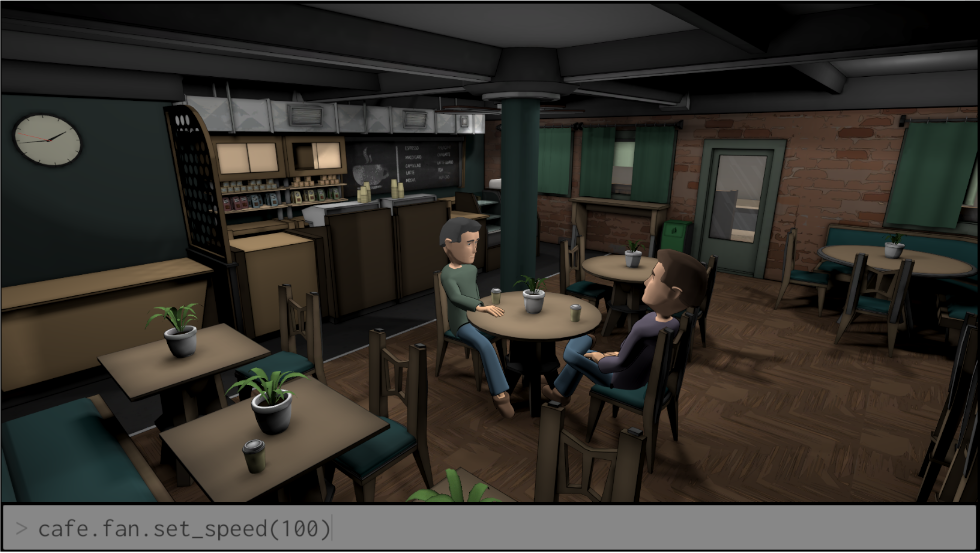 M.Sc. Thesis of Unnar Kristjánsson (Graduated Spring 2019 - 60 ECTS)
M.Sc. Thesis of Unnar Kristjánsson (Graduated Spring 2019 - 60 ECTS)
Researchers tend to develop their own applications when it comes to running social behaviour studies in Virtual Reality. These applications are often single use and become obsolete between different projects of studies, despite projects often sharing similar goals or needs. This thesis argues that given a set of principles influenced by modular design patterns found in embedded systems architecture, reusable toolkit applications could be constructed that serve as a shared foundation for social experiments in VR. What follows is a partial implementation of those principles, and an example study enabled by said implementation. Conclusions suggest that despite need for refinements, particularly to the implementation presented which only partially satisfies those principles, the principles indicate some merit as to their utility for building a reusable software toolkit for social experiments in VR.
Procedural City Generator for Research in the Field of Restorative Environmental Design
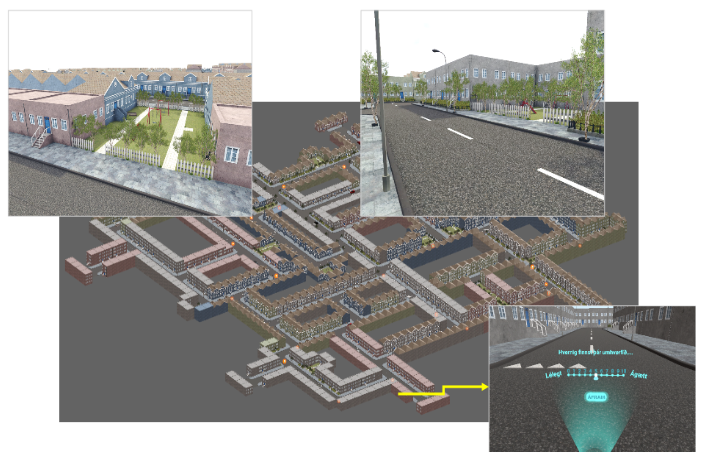 M.Sc. Thesis of Hörður Már Hafsteinsson (Graduated Spring 2019 - 60 ECTS)
M.Sc. Thesis of Hörður Már Hafsteinsson (Graduated Spring 2019 - 60 ECTS)
Imagine a future where the urban city environment has been designed and planned to sustain its inhabitants on a psychological level and thus promoting their health and well being. The emerging data-driven methodology of Restorative Environmental Design (RED) has been proposed as a promising answer to bringing in the social and psychological factors that may have been neglected in the planning of compact urban areas in the past. A restorative environment is an environment that helps us renew the physical, psychological and social resources that diminish in meeting everyday demands. If we are unable to restore those lost resources over a prolonged period of time, there can be negative consequences to our health and well being. RED attempts to measure how different environments affect people using controlled studies, where participants are exposed to environmental stimuli. In the past, the stimuli in these studies has mainly consisted of static images and computer generated 3D worlds on a display. However, with recent innovations in virtual reality (VR) these studies can now immerse participants to a much greater degree than previously possible. This raises the need for a specialized tool for creating a variety of urban city environments, compatible with VR presentation, as well as a method for collecting survey data on restoration from study participants. The Cities that Sustain Us research project, dedicated to advancing RED through the use of VR, started developing such tools, but early versions relied too heavily on manual construction. This thesis presents a new application where a new procedural approach automates the construction of large VR-ready cities, where a number of attributes can be controlled, as simple as editing a few layout bitmaps. Data gathering locations can be added to these cities, where study participants interact with restoration data surveys using a VR interface. The application also includes an interactive tutorial environment where participants are instructed on how to move through the cities and interact with the survey interface. Even if these VR environments are both large and complex, they perform very well, and user testing results indicate that reliable restoration data can be gathered from study participants.
Virtual Reality Game for Social Cue Detection Training
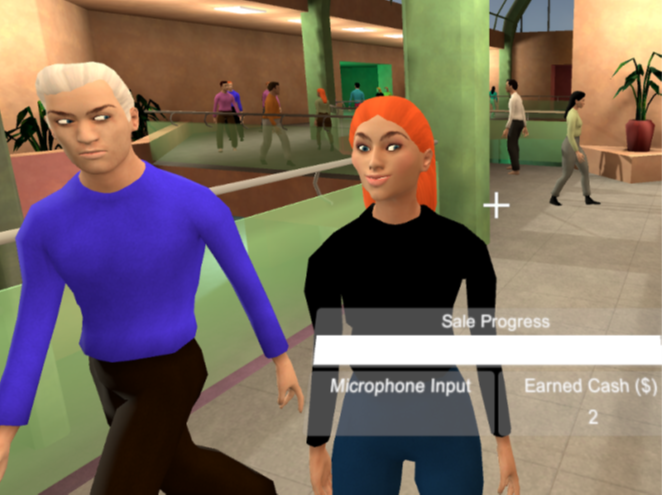 M.Sc. Thesis of Ari Þórðarson (Graduated Spring 2018 - 30 ECTS)
M.Sc. Thesis of Ari Þórðarson (Graduated Spring 2018 - 30 ECTS)
The ability to recognize social cues and knowing how to approach people can be important in many social situations. Not everyone develops this ability to the level required by certain jobs or even for carrying out daily societal functions. For instance, some people with autism spectrum disorder have difficulty recognizing facial expressions. Training for this typically requires actual situations, which may put a limit on the amount and kind of training people may get. A simulated environment specifically created for this purpose could mitigate some of these limitations. This thesis presents a prototype virtual reality game intended for training people in detecting social cues and how to initiate contact with strangers. The goal is to provide training professionals with a proof of concept tool that brings together a number of advanced technologies into a single system for further development. The goal of a participant in the game is to sell something to virtual humans walking around in a public place. Only some of the virtual humans are interested in buying and that can be seen in their nonverbal behavior. The behavior of the characters is based on research on nonverbal communication. In particular, behavior correlated with rapport such as smiling, nodding and direct body orientation as well as behavior shown when trying to avoid interaction. The result is a fully functional prototype where the user can interact with virtual humans and complete a sales task using both voice and head gaze as input. The system demonstrates basic functionality and concept of a final system, opening up potential for further development of character behavior, virtual human appearance, and interaction naturalness.
Non-verbal Behavior of a VR Agent Playing a Board Game
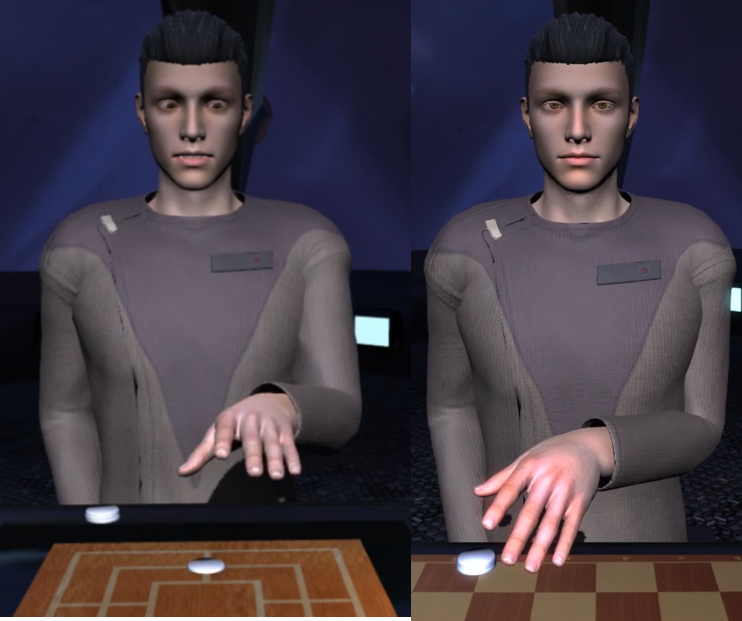 M.Sc. Thesis of Guðrún Inga Baldursdóttir (Graduated Spring 2018 - 30 ECTS)
M.Sc. Thesis of Guðrún Inga Baldursdóttir (Graduated Spring 2018 - 30 ECTS)
Imagine a scenario where you are playing a board-game within a virtual environment. Inthis environment, you are playing against another player. This player can converse with you,show emotions and give you the feeling of playing against a real person. This project buildson a final project done by three Bachelor students at Reykjavik University called the VirtualGeneral Game Playing Agent. In their project a user can play against a virtual player thatmakes his moves based, among other things, his personality and shows non-verbal behavioursuch as looking at the user and showing impatience. The focus of this project is to increasethe believability of the agent, by improving its non-verbal expression capabilities duringa board-game. This was done by collecting and analysing real human behaviour data aswell as adding options for complex expressions by incorporating a morphable 3D charactermodel. To collect data, volunteers were recorded while they were playing a board-game. Therecordings were then annotated in regards to behaviour type such as eye gaze and actionssuch as hand movement in relation to the board-game. A tool was created to analyse the data,summarizing both how often each behaviour occurs and how long it lasts as well as analysingco-occurrence of annotation belonging to separate types (co-occurrence of behaviour withaction). Finally, a data-driven module was created and added to the agent. The data moduleuses the analysed data when generating and selecting behaviour. At the moment it only usesthe module to generate and select gaze behaviour when making a move. The results showedthat out of 12 distinct behaviours evaluated the mean duration of each behaviour of the newagent was closer to the real data in 7 of them and the existing agent in 5. With this work, weare closer to our scenario even though much work is still to be done.
Territoriality and Visible Social Commitment for Virtual Agents
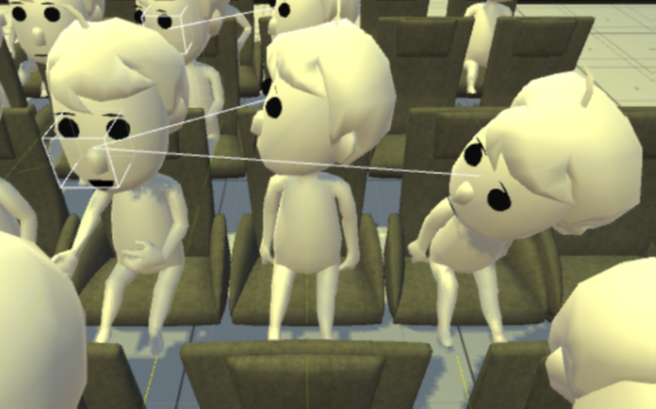 M.Sc. Thesis of Marco Massetti, Joy Rossi and Leonardo Veroli (Graduated Fall 2017 - 30 ECTS)
M.Sc. Thesis of Marco Massetti, Joy Rossi and Leonardo Veroli (Graduated Fall 2017 - 30 ECTS)
Technology is changing faster day by day: The digital market is filled with new devices and machines with ever greater computing powers, supporting interaction scenarios unthinkable until few years ago. As part of this trend, we are moving towards a new world, a virtual one: There are many applications that immerse users in this new reality through compelling sensory experiences that hint at amazing future possibilities. Thanks to the growing availability and popularity of virtual reality, recreating believable social situations, with all its peculiarities, in high-fidelity becomes a relevant challenge. In particular when it comes to autonomous virtual agents, we would like to implement behaviours that are closer to those of human beings. This perspective leads us to address the problem of human territoriality, a term associated with non-verbal communication that refers to how people use space to establish and manage relationships with others. In order to achieve this, we created a simulation of situations that highlight how virtual non-verbal behaviour can be influenced by the level of social commitment of the agents involved. The simulation is firmly based on social theory, in particular human territorial management. The agents have the ability to move around in the simulated virtual environment and interact with each other and the objects around them, demonstrating how they can understand and be aware of their surroundings. The simulation, implemented within the Unity 3D game engine, can be applied in games and other virtual environments that involve any virtual agents, immediately giving them greater social credibility and familiarity than can be achieved through conventional methods.
Comparison of Errorless Learning and Response Cost to Simple Trial and Error Learning in an Automated Learning Environment
 M.Sc. Thesis of Brynjar Ólafsson (Graduated Spring 2017 - 60 ECTS)
M.Sc. Thesis of Brynjar Ólafsson (Graduated Spring 2017 - 60 ECTS)
Feedback is an important part of the learning cycle. Computers make immediate (corrective)feedback possible which increases the number of learning opportunities. Relatively little research has been done on feedback in automated learning environments. We believe that it is important to know what type of feedback is best to use, the timing of the feedback and how much feedback should be given. In this project we will be looking into the different types of feedback and if there is any difference in performance and enjoyment when learning with them. This project compared three different methods of feedback: Error less Learning,Response Cost and Trial and Error, in an automated learning environment based on DiscreteTrial Training. 24 nine year old children from two classes were randomly distributed to the three different feedback conditions. A comparison of how fast the participants learned to recognize and discriminate between three similar bacteria showed that the Response Cost condition was significantly slower that the other two conditions. A comparison of how enjoyable each feedback condition was showed little to no difference. This can be an important finding since many educational computer games use Response Cost as a feedback method for teaching.
Implementation of End-to-End Incident Management Processes in a Unified Incident Management System
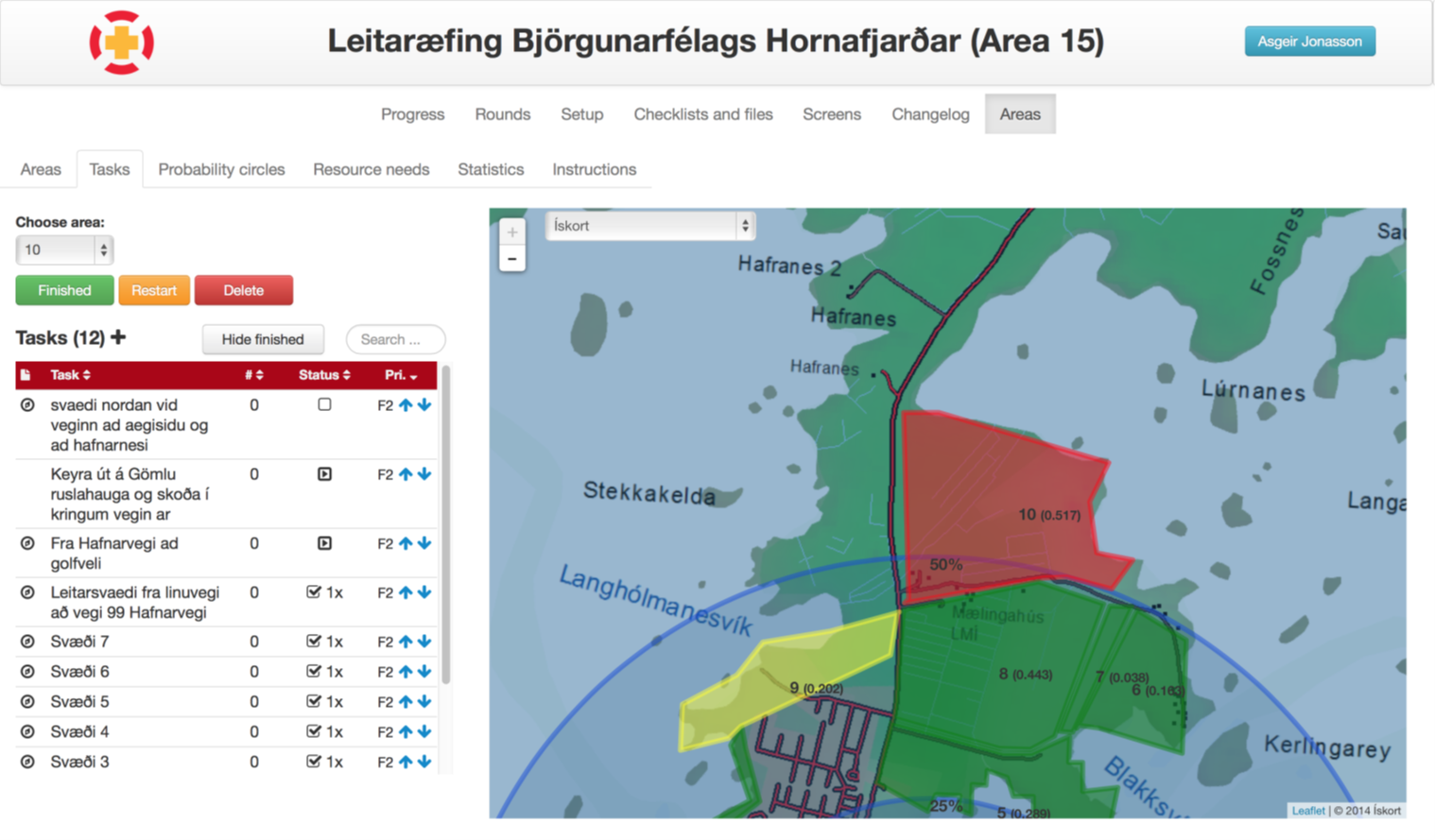 M.Sc. Thesis Project of Ásgeir Jónasson (Graduated Spring 2015 - 30 ECTS)
M.Sc. Thesis Project of Ásgeir Jónasson (Graduated Spring 2015 - 30 ECTS)
Information technology plays a key role during large scale search and rescue operations, such as those carried out by the Icelandic Association for Search and Rescue (ICE-SAR). Systems used by incident managers must support their processes and actions, and enable fast and efficient information gathering and distribution.In this project, two novel additions to the incident management system used by ICE-SAR and the Civil Protection in Iceland, were developed.The first is a new system called Preparedness, which aids in the collaborative creation and management of preparedness plans. Through integration with an incident management system, Preparedness furthermore allows incident managers to initiate a preparedness plan within the same system as is used to carry it out, increasing speed and accuracy in the plan’s execution.The second is a search area and evacuation management component, an addition to ICE-SAR’s and the Civil Protection’s incident management system.Creating and managing search areas and evacuation zones is now, for the first time, possible from within the system. This allows for a connection between areas, and the tasks, groups and individuals within the incident management system. This enables a plethora of new features around search area and evacuation management to be implemented.These two additions bring an already successful incident management system to a new level, and make it a complete solution for incident management.
Social Navigation in Unity 3D
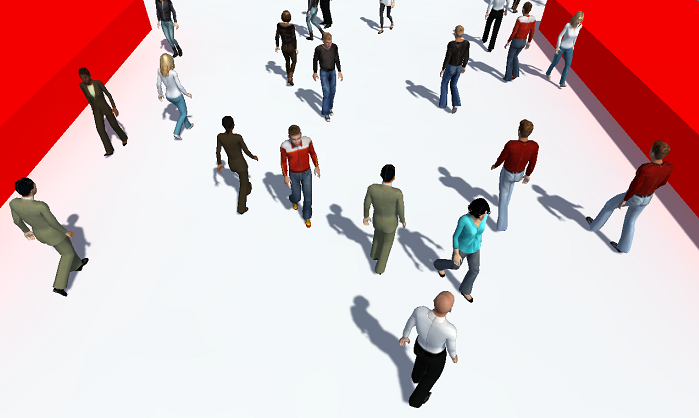 M.Sc. Thesis Project of Karl Valdimar Kristinsson (Graduated Spring 2015 - 30 ECTS)
M.Sc. Thesis Project of Karl Valdimar Kristinsson (Graduated Spring 2015 - 30 ECTS)
Virtual environments such as those experienced in games are increasingly more common. Often these environments are populated by virtual characters that serve various purposes. In almost all instances they bring the environment to life, giving the user a deeper experience. These characters spend a lot of time moving around, either to achieve some goals or to simply give the environment an authentic feel of an active crowd. To maintain the illusion of life, how a character navigates an environment, full of static and dynamic obstacles, needs to reflect human intelligence or at least meet people's expectations of human-like behavior. With many different navigation techniques available this project focused on implementing one that produces socially believable behavior. The chosen approach, a velocity-based method, aims to have characters make small adjustments long in advance before colliding with obstacles. This method was implemented within the Unity 3D game engine and extended to support more dynamic testing and use. The method was furthermore integrated into CADIA's existing social simulation platform. Several social scenarios were used to stress test the implementation, resulting in a thorough review of strengths and weaknesses, compared to Unity's own default navigation system. The results demonstrate the superiority of the method in several important scenarios but also point out an important weakness that emerges in very dense crowds.
When Strangers Meet: Collective Construction of Procedural Conversation in Embodied Conversational Agents
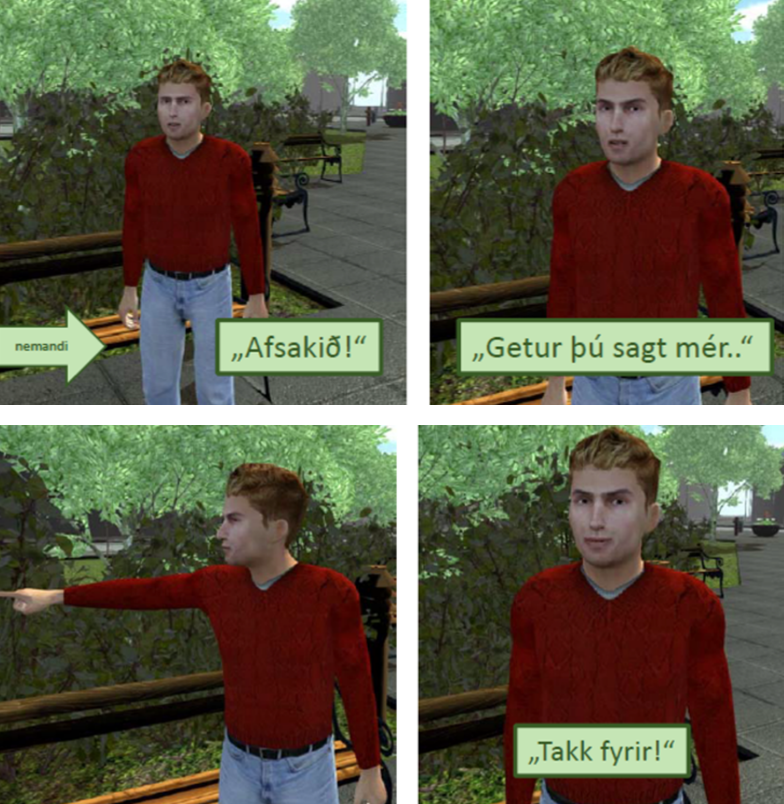 M.A. in Language Technology Thesis Project of Stefán Ólafsson (Jointly with University of Iceland) (Graduated Spring 2015 - 30 ECTS)
M.A. in Language Technology Thesis Project of Stefán Ólafsson (Jointly with University of Iceland) (Graduated Spring 2015 - 30 ECTS)
This thesis presents an application that adopts a novel method for software agents in an Icelandic language and culture training application to engage in conversation with human users and other agents. The approach allows the agents to procedurally select purpose specific conversation sections, within which they collectively construct discourse models that give rise to conversational behaviors. The theoretical foundations that make this possible are introduced, beginning with research that informs how humans conduct themselves during conversation, followed by the computational modelling of such interactions. This includes research conducted in the fields of discourse and conversation analysis, and observations from video recordings of how conversation between strangers in Icelandic unfolds. The computational modelling of communicative functions is achieved using parts of the Function Markup Language (FML) standard proposal and realized in a language learning virtual environment, involving use of Icelandic language technology. The general approach that was taken to the construction of the application is expounded, with an overview of the major components, followed by a sample run. A detailed outline of the implementation is followed by a discussion on its current capabilities is presented, as well as future work and a user study assessment proposal.
Observation of Multiple Features for Recognition of Daily Activities
 M.Sc. Thesis Project of Francesco Lilli (Graduated Spring 2012 - 30 ECTS)
M.Sc. Thesis Project of Francesco Lilli (Graduated Spring 2012 - 30 ECTS)
We present a research study on the simultaneous observation of several features as a means for the recognition of human activities; in particular we refer to high-level daily activities performed in a home environment. We abstract from techniques and modalities for observations retrieval, assuming each feature to be easy to track from the domain environment. No mechanisms for further probabilistic recognition of lower-level activities should be used: we recognize activities directly from information extracted from the features. In our work we introduce the concept of “observational channels”, each channel representing an abstract feature, as organized sources of information from the environment. We refer to real-world scenarios in which by definition not all information is accessible, meaning that we deal with partial knowledge: only information from plausible sources should be considered. In our study we use several Hidden Markov Models, a standard tool being widely used in such applications, for a feature-based recognition; we compare the recognition rates resulting from partial or total observation of available features. In our setting we focus on a typical domain from daily life, proving that the use of multiple features could be beneficial for the recognition; however the observation of certain combinations of features tend to be confusing for recognizers, which in some cases do not offer a minimally acceptable recognition rate. We conclude with a discussion about the results we obtained, possible improvements and refinements to the approach, and future works.
Integrating Semantic Networks and Object-Oriented Model to Represent and Mange Context
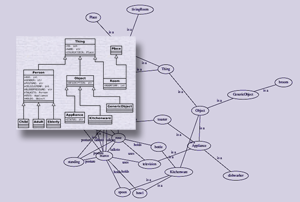 M.Sc. Thesis Project of David Sorrentino (Graduated Spring 2012 - 30 ECTS)
M.Sc. Thesis Project of David Sorrentino (Graduated Spring 2012 - 30 ECTS)
In few years context-aware computing will pervade almost every aspect of our lives. One of the crucial issues related to this field is to have a proper and convenient model to represent and manage the context. Existing representation models like ontologies constitute a well researched and mature solution. However, they are not made to represent continuously changing data; moreover, building and maintaining them is a highly error-prone and time consuming process, and it can become a tedious and non-scalable task if it is done manually. This thesis proposes a model to represent and manage contextual information of different types, generated by a variety of heterogeneous sources and with different levels of granularity. The model is derived from the integration of Semantic Networks with the Object Oriented software development model and has been implemented by exploiting the use of scripting languages and their properties, such as dynamic typing, meta-programming, and introspection. A context-aware infrastructure (CAFE) based on this model is presented and, by showing an illustrative contextual scenario implemented in CAFE, it is demonstrated that the proposed model guarantees high readability, flexibility, scalability, general-purpose, and modularity.
An Early Warning System for Ambient Assisted Living
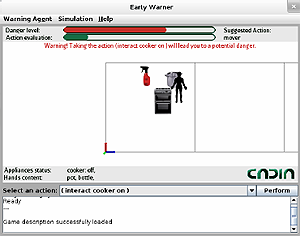 M.Sc. Thesis Project of Andrea Monacchi (Graduated Spring 2012 - 30 ECTS)
M.Sc. Thesis Project of Andrea Monacchi (Graduated Spring 2012 - 30 ECTS)
Daily-life activities at home can generate dangers that may lead to accidents. Risky situations may be difficult to notice by people with a cognitive or physical impairment. Therefore, recognizing dangers is very important so as to assist users in preventing accidents, and ensure their health, safety and wellbeing. The present thesis aims to design a system that, given a representation of the environment as input, learns how to evaluate states according to their danger level, and is able to alert and prevent users from getting too close to a potential danger. We explore the search space for dislosing dangers and finding a safe path leading to the goal. The project led to the implementation of a working prototype, which is able to suggest the best action to perform, and reports the level of danger and an estimation of the last performed action. Also, it is able to warn the user when the level of danger exceeds a given threshold. We offer a general solution, as the system is able to play arbitrary games described with the Game Description Language, and performs on-line planning by means of the Q(lambda) algorithm. For this purpose, we implemented a Java library for implementing TD-learning agents. In addition, we defined the concept of sphere of protection and we disclose dangers by using a variant of breadth-first search. Finally, we exploited virtual environments as a general testbed for simulating effects of warning notifications and we showed how the system can be used to perform informal user testing, thus for evaluating the effects of warning notifications on actual users.
Integrating social awareness and story using compositional behavior hierarchies
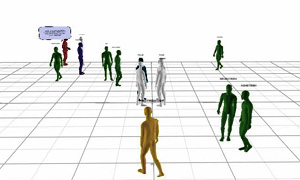 M.Sc. Thesis Project of Alfredo Conte (Graduated from University of Camerino Spring 2012 - 30 ECTS)
M.Sc. Thesis Project of Alfredo Conte (Graduated from University of Camerino Spring 2012 - 30 ECTS)
Entertainment, education and training increasingly take place within virtual environments populated by virtual characters. For the environments to have full impact, the behavior of the characters need to be consistent, both with regards to the unfolding story and with regards to social norms. My study is about the simulation of human behaviors in order to make virtual characters believable in virtual social environments. In particular during my research, I will show several social phases related to \non-verbal behaviors” during an initial meeting between persons and an ongoing conversation. I will also display emotional states such as anxiety and worry. In other words, my thesis is about the realization of both emotional and social behaviors in a virtual environment. The idea is to realize a realistic scene in a bar with people inside. They will undergo different moods when a particular social event occurs. The work uses Impulsion, an artiffcial intelligence engine for virtual characters and particularly suitable for simulating social intelligence. This framework already manages important aspects of behaviors, such as the social perception of other agents (Non Player Character), locomotion, collision path to avoid obstacles (and other agents) and a flexible behavior engine based on continuous steering of body joints. The purpose of this research is to study particular social situations and automatically generate realistic behavior in reaction to other agents. In order to simulate credible behavior, it is important to collect real data on how people respond socially and emotionally to others and how people try to establish and avoid social interaction according to their internal state. It is also important to research how it is possible to represent this behavior in a virtual environment. Ultimately we want to see how well these simulated behaviors reect reality, and see how well human users respond to a running demo.
Automated Culture Training System
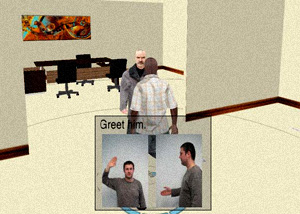 M.Sc. Thesis Project of Lorenzo Scagnetti (Graduated Winter 2011/12 - 30 ECTS)
M.Sc. Thesis Project of Lorenzo Scagnetti (Graduated Winter 2011/12 - 30 ECTS)
It is increasingly common that we engage in face-to-face conversations with people of different cultures as part of our daily lives. The results of such cross-cultural communication is sometimes affected by misunderstandings that arise from culturally different interpretations of the same message. This thesis focuses on the different interpretations of non-verbal behaviors, gestures in particular. The Automated Culture Training (ACT) system addresses the problem of misunderstanding in cross-cultural communication by providing an interactive 3D training environment, where people can quickly pick up cultural knowledge and apply it in a series of simulated social settings. Each lesson involves an interaction between the learner and an automatic character of a given culture. During the interaction, the learner chooses what gesture to use at any given moment, and the character gives immediate positive or negative feedback. The contribution of this thesis is a modular technical framework for the ACT system based on a clear abstraction between communicative behavior (the visible action) and the communicative function (the interpretation). Furthermore, the framework keeps a clear saparation between data and its processing, for example by treating the cultural description and the description of each exercise purely as input data. The automatic character incorporates a complete perception-action loop, which allows it to dynamically react to learner input. The result is a fully functional prototype that demonstrates best-practice engineering principles and is ready for further development of content and testing with users.
Multimodal conversational analysis of institutionalized political TV interview: Comparison of Icelandic and Greek corpus
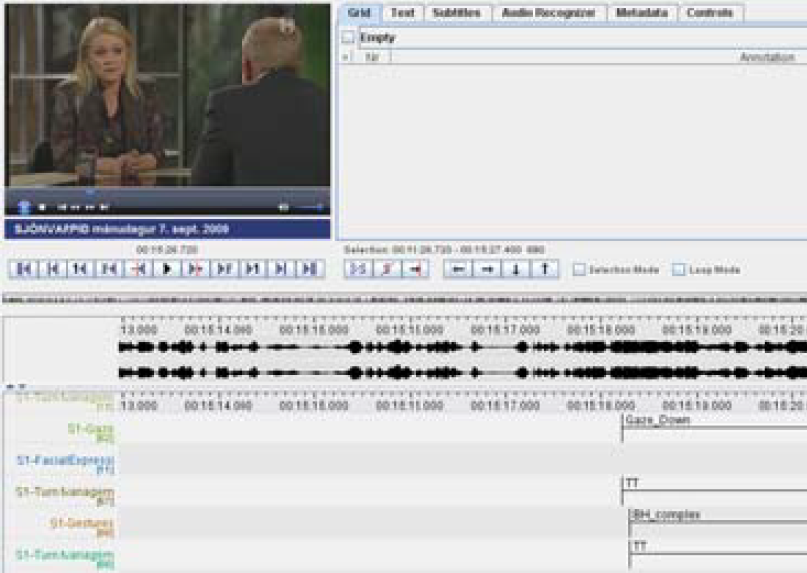 M.Sc. Thesis Project of Sigrún María Ammendrup (Graduated Summer 2011 - 30 ECTS)
M.Sc. Thesis Project of Sigrún María Ammendrup (Graduated Summer 2011 - 30 ECTS)
This research presents a multimodal non-verbal conversation analysis performed on a typical institutionalized political TV interview. The focus is on facial, hand, and body gestures and their role in carrying out communicative functions such as feedback and how speakers know when it is their turn to speak. What we wanted to know is what non-verbal gesturers speakers of institutionalized interviews use and also, importantly how these gestures compare between cultures. This work is based on previous studies done in Greece and similar investigations in Europe for comparison between different cultures.
Dynamic Planning For Agents in Games using Social Norms and Emotions
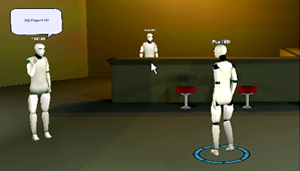 M.Sc. Thesis of Palli Thráinsson (Graduated Spring 2011 - 60 ECTS)
M.Sc. Thesis of Palli Thráinsson (Graduated Spring 2011 - 60 ECTS)
As environments in games have become more and more realistic graphically, a new big challenge has emerged for gaming companies. Both the computer controlled agents and player controlled avatars now also need to act in a believable manner so that the illusion of reality created by exquisite graphics and physics is not broken. There is a requirement for agents to react to the environment around them as well as to act in a certain manner when introduced to social situations. For agents to be life-like they need to have basic human traits like emotions and the ability to make decisions. In this thesis we describe a way of tackling this challenge using a three pronged solution. We have incorporated a social norms model into the agents using social rules. These rules tell the agents how to act when engaged in social situations. Secondly we added an emotional model which affects the agents' emotional state and gives them the ability to vary their responses to situations in the environment. Both these models reside in an appraisal module that is based on emotional appraisal theory. The appraisal module will appraise how events triggered in the environment affect the agents both emotionally and socially and will give the agent instructions on how he might cope with that situation. To complete the cycle a planner will make the decisions on what can be done, what should be done and how it should be done. The resulting system provides the illusion that the agents are human-like individuals that can act differently to similar situations depending on what they think is important to them at that time.
Social Path Following
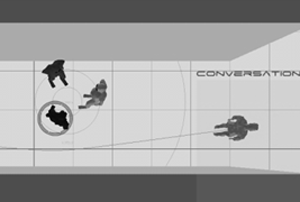 M.Sc. Thesis Project of Carmine Oliva (Graduated Spring 2011 - 30 ECTS)
M.Sc. Thesis Project of Carmine Oliva (Graduated Spring 2011 - 30 ECTS)
Path planning consists of finding a route from one location point to another. It is also known as motion planning or navigation problem and it is common in several fields in Computer Science and commercial games since it has to be solved in real time, under constraints of memory and CPU resources. Abstracting the problem, path planning is divided in two main sub-problems: path finding, used to find a simplified route composed of connected segments and path following to make the locomotion along the route as realistic as possible. The path following should avoid contact between objects through the collision avoidance; together, they represent the main topic of our studies. We work on a virtual environment populated by agents and avatars that are engaged in social situations and show autonomous believable social behaviors. In this context, natural and fluid paths are the keys to providing a high level of presence and realism. Building on several theories about human territories, social forces and body language, we are extending the state of the art of path following; each agent is now able to avoid static and dynamic obstacles along its path, to predict future interaction patterns of others and accordingly to apply corrections to its movement. We model spontaneous form of non-verbal negotiation that humans engage in every day during their locomotion. Their behavior is also slightly affected by stochastic factors that appear under the form of little changes on velocity and/or orientation, called distortions. Our approach is able to solve path following and collision avoidance in many types of situations, finding a good balance between realism and performance. To test this, we implemented several scenarios of completely different simulations. Moreover, creating a specific profile for each agent, our system can also show how different stereotypes of people act in those situations and compare them with expected results.
Automating the Idle Gaze of Virtual Humans in Waiting Situations
 M.Sc. Thesis Project of Raffaele Gaito (Graduated Spring from Salerno University 2010 - 30 ECTS)
M.Sc. Thesis Project of Raffaele Gaito (Graduated Spring from Salerno University 2010 - 30 ECTS)
Every avatar and agent in a social game environment needs to show social intelligence by reacting spontaneously to the social environment and situation. This work focuses on one specific behavior in a specific situation: gaze behavior of people waiting for a bus. This work makes use of field studies of subjects that are idling alone at a bus stop to minimize the external factors influencing the behavior. “Alone” here refers to people surrounded by other persons but not in communications with them. Data collected during field studies was used to derive computational models that then were added to automated reactive behavior in the CADIA Populus social simulation environment.
Spontaneous Avatar Behaviour for Social Territoriality
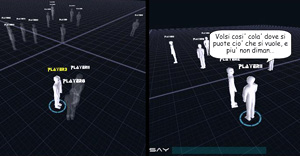 M.Sc. Thesis of Claudio Pedica (Graduated Spring 2009 - 60 ECTS)
M.Sc. Thesis of Claudio Pedica (Graduated Spring 2009 - 60 ECTS)
Avatars and agents in a realistic virtual environment must exhibit a certain degree of presence and awareness of the surrounding, reacting consistently to unexpected contingencies and contextual social situations. Unconscious reactions serve as evidence of life, and can also signal social availability and spatial awareness to others. These behaviours get lost when avatar motion requires explicit user control. This thesis presents new AI technology for generating believable social behaviour in avatars. The focus is on human territorial behaviours during social interactions, such as during conversations, gatherings and when standing in line. Driven by theories on human face-to-face interaction and territoriality, we combine principles from the field of crowd simulators with a steering behaviours architecture to define a reactive framework which supports avatar group dynamics during social interaction.
Simulating the Idle Gaze Behavior of Pedestrians in Motion
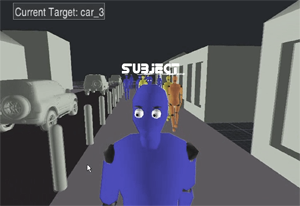 M.Sc. Thesis Project of Angelo Cafaro, (Graduated from Salerno University Spring 2009 - 30 ECTS)
M.Sc. Thesis Project of Angelo Cafaro, (Graduated from Salerno University Spring 2009 - 30 ECTS)
Gaze patterns are one of the most expressive aspects of human outward behavior, giving clues to personality, emotion and inner thoughts. Multimodal communication and, generally, natural social behaviors are one of the main branches that Sociology deals with. “Virtualization” of some aspects of life through realistic looking interactive environments is one of the most fervent activity that Computer Science deals with. When games wish to use avatars to represent players in virtual environments, all the animated behaviors that normally support and exhibit social interaction become important. Since player cannot be tasked with micro-management of behavior, the avatars themselves have to exhibit a certain level of social intelligence. The purpose of this avatar AI is infact twofold: to give players helpful cues about the social situation and to ensure that the whole scene appears believable and consistent with the level of game world realism.The goal of this thesis is to automate the production of naturally looking idle-gaze behavior in avatars, using data from targeted video studies. The focus is on people walking alone down a shopping street.
BSc Thesis Projects
(2024) VíkingAR : rebuilding an augmented reality experience
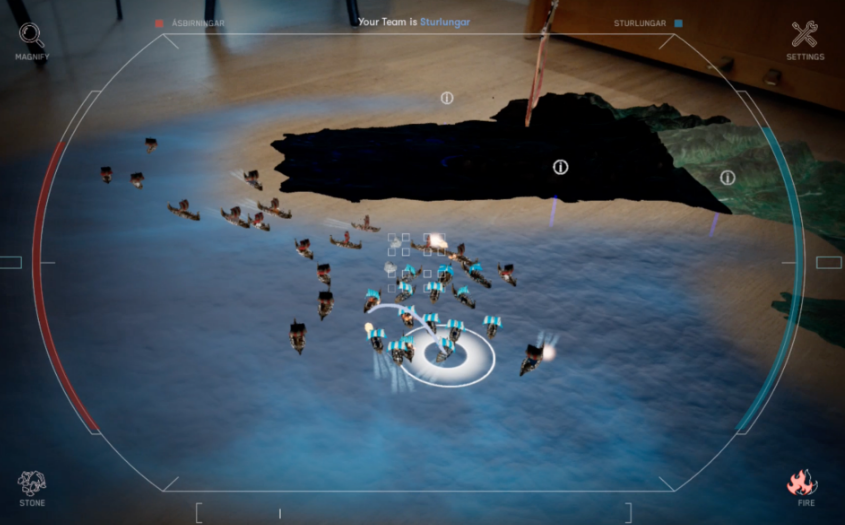 Elvar Þór Sævarsson, Helgi Steinarr Júlíusson, Ingólfur Sigurbjörnsson, Ríkharður Aron Eiríksson
Elvar Þór Sævarsson, Helgi Steinarr Júlíusson, Ingólfur Sigurbjörnsson, Ríkharður Aron Eiríksson
(2023) How can virtual reality benefit the lives of persons with MND?
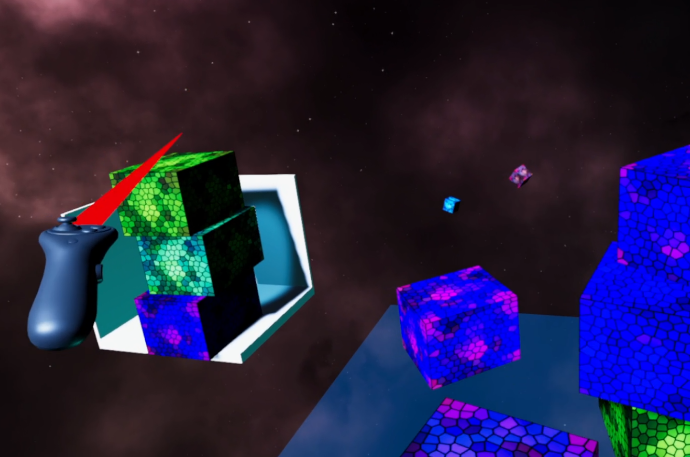 Elísabet Líf Birgisdóttir, Emil Trausti Smyrilsson
Elísabet Líf Birgisdóttir, Emil Trausti Smyrilsson
(2022) VR for Social Anxiety Therapy
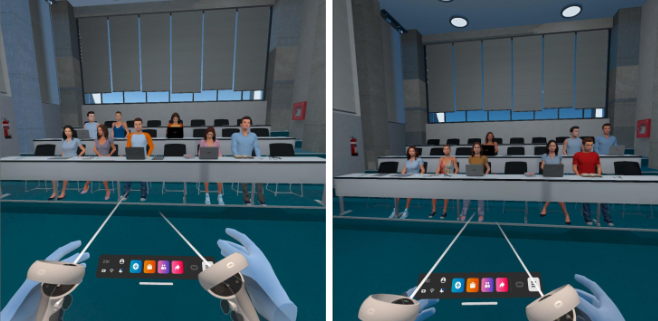 Marteinn Guðmundsson, Valgerður Ásgeirsdóttir, Magnús Konráð Sigurðsson, Logi Eyjólfsson, Katrín Viktoría Hjartardóttir
Marteinn Guðmundsson, Valgerður Ásgeirsdóttir, Magnús Konráð Sigurðsson, Logi Eyjólfsson, Katrín Viktoría Hjartardóttir
(2022) VR for Social Training
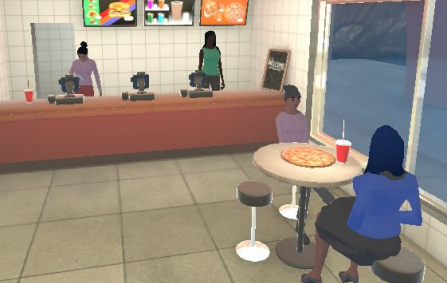 Daníel Örn Sigurðsson, Garpur Hnefill Emilíuson
Daníel Örn Sigurðsson, Garpur Hnefill Emilíuson
(2022) Digital Storytelling: Impact of Environmental Factors on Augmented Reality
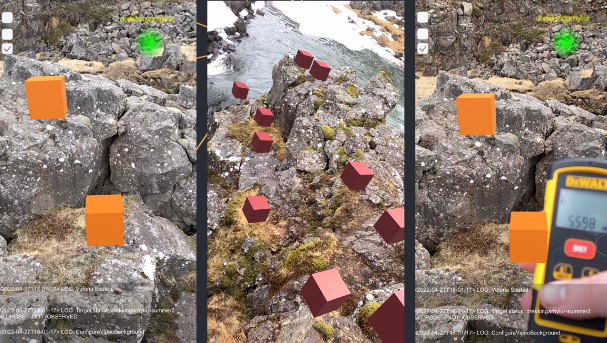 Elísa Eik Guðjónsdóttir, Emil Örn Kristjánsson, Ríkharður Friðgeirsson
Elísa Eik Guðjónsdóttir, Emil Örn Kristjánsson, Ríkharður Friðgeirsson
(2022) Experiencing City Planning in VR on the Web
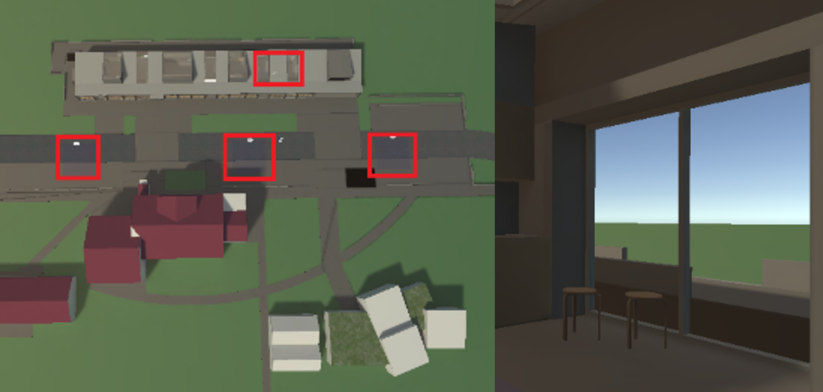 Andrés Pétursson, Arnar Páll Sigurðsson, Sævar Ingólfsson, Pálmi Chanachai Rúnarsson
Andrés Pétursson, Arnar Páll Sigurðsson, Sævar Ingólfsson, Pálmi Chanachai Rúnarsson
(2022) AI for an Open World Game
 Erla Óskarsdóttir, Hrafnkell Þorri Þrastarson
Erla Óskarsdóttir, Hrafnkell Þorri Þrastarson
(2021) Deeper: Adventures in Procedural Game Development in Rust
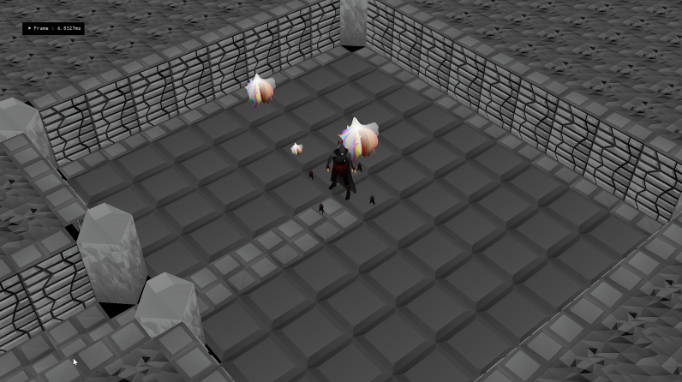 Arnaldur Bjarnason, Jökull Máni Reynisson
Arnaldur Bjarnason, Jökull Máni Reynisson
(2020) A.R.I.A. Augmented Reality Interactive Agent
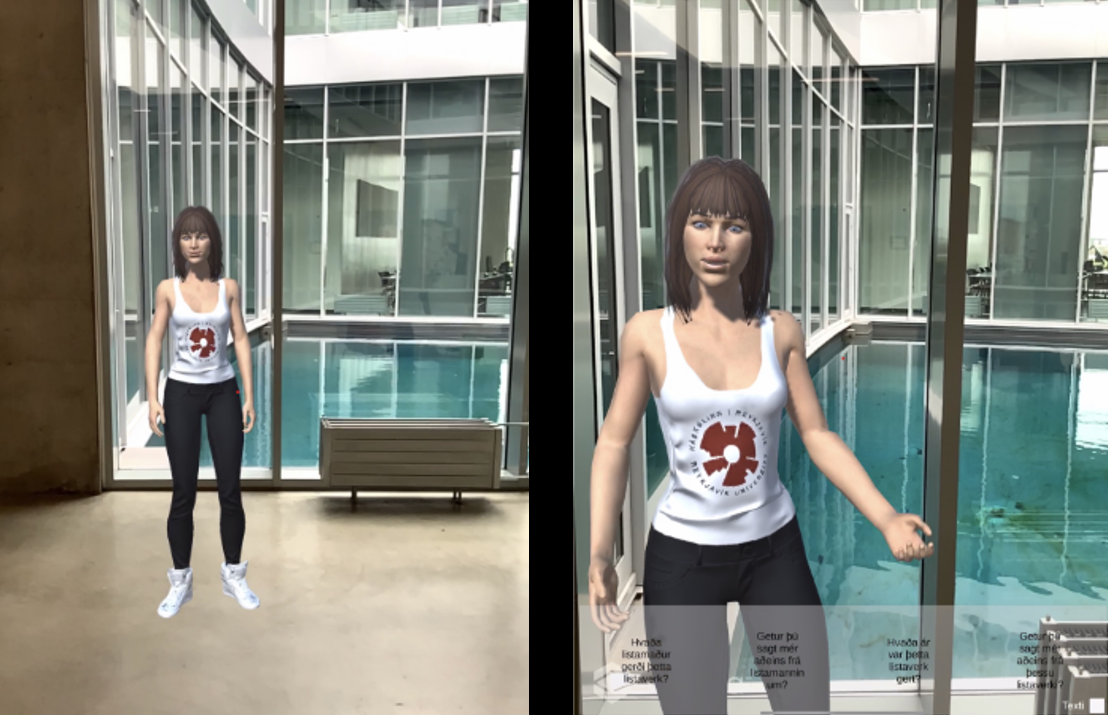 Anna Lára Sigurðardóttir, Birgitta Rún Friðriksdóttir, Bryja Dagmar Jakobsdóttir
Anna Lára Sigurðardóttir, Birgitta Rún Friðriksdóttir, Bryja Dagmar Jakobsdóttir
(2020) Interactive VR Education: Acidification of the Oceans
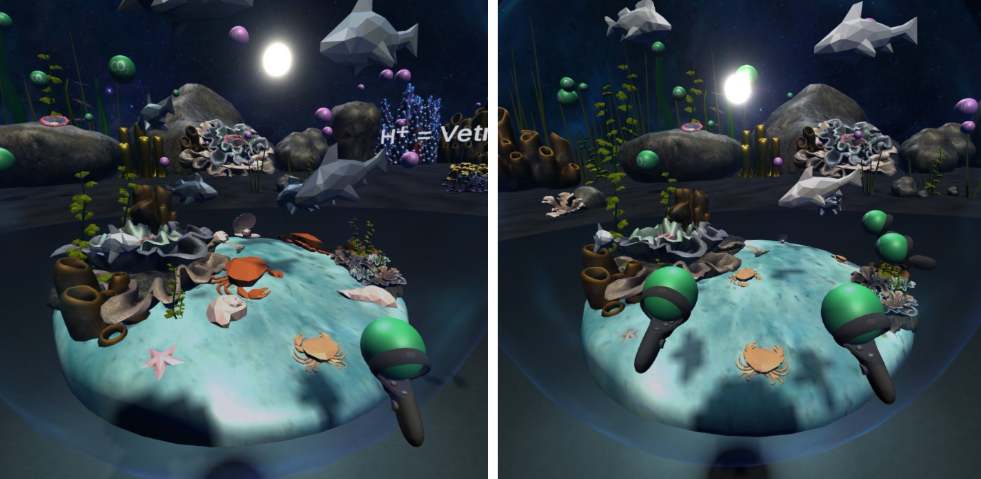 Guðrún Margrét Ívansdóttir, Laufey Inga Stefánsdóttir, Sjöfn Óskarsdóttir
Guðrún Margrét Ívansdóttir, Laufey Inga Stefánsdóttir, Sjöfn Óskarsdóttir
(2020) Cabin Crew VR
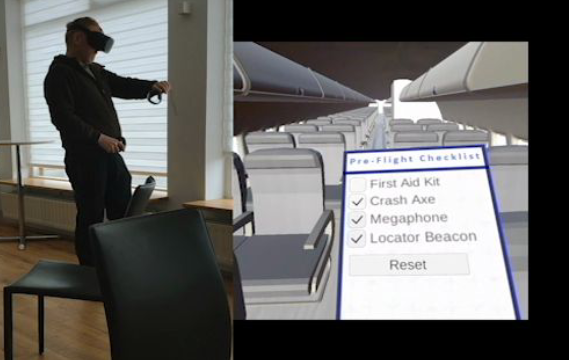 Andri Sæmundsson, Hartmann Ingvarsson, Njáll Mýrdal Árnason
Andri Sæmundsson, Hartmann Ingvarsson, Njáll Mýrdal Árnason
(2019) Virtual Courtroom
 Edit Ómarsdóttir, Hafdís Sæland, Helga Margrét Ólafsdóttir
Edit Ómarsdóttir, Hafdís Sæland, Helga Margrét Ólafsdóttir
(2018) VR Turn Taking
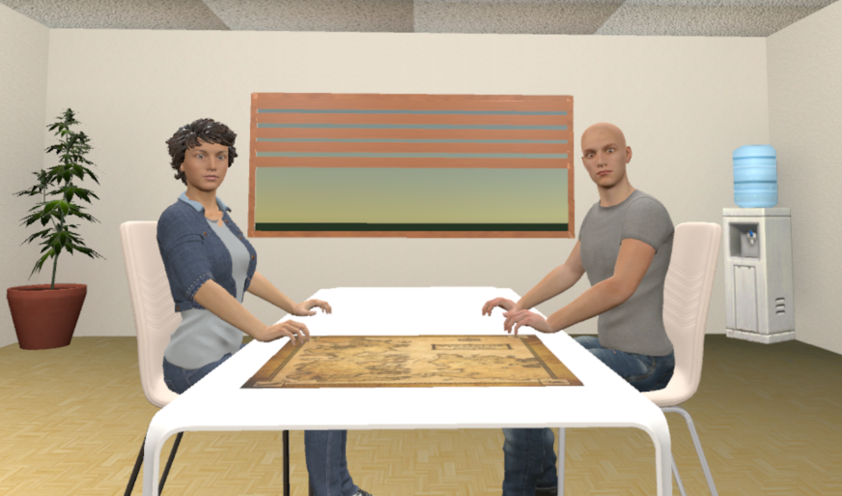 Aníta Sól Jónsdóttir, Árni Wing Ho Yu, Kristinn Jóhannsson, Tryggvi Bragason
Aníta Sól Jónsdóttir, Árni Wing Ho Yu, Kristinn Jóhannsson, Tryggvi Bragason
(2017) Virtual Reality RPG Spoken Dialog System
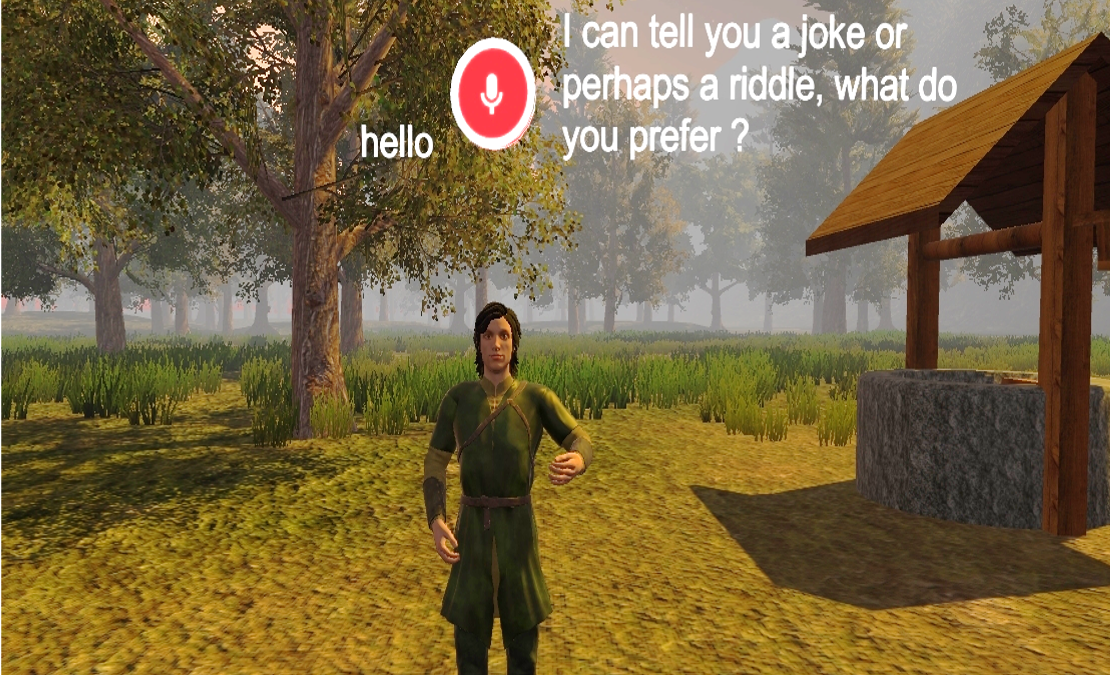 Einir Einisson, Gísli Böðvar Guðmundsson, Steingrímur Arnar Jónsson
Einir Einisson, Gísli Böðvar Guðmundsson, Steingrímur Arnar Jónsson
(2016) The SomaVR Project: VR Body Tracking with HTC Vive and Microsoft Kinect
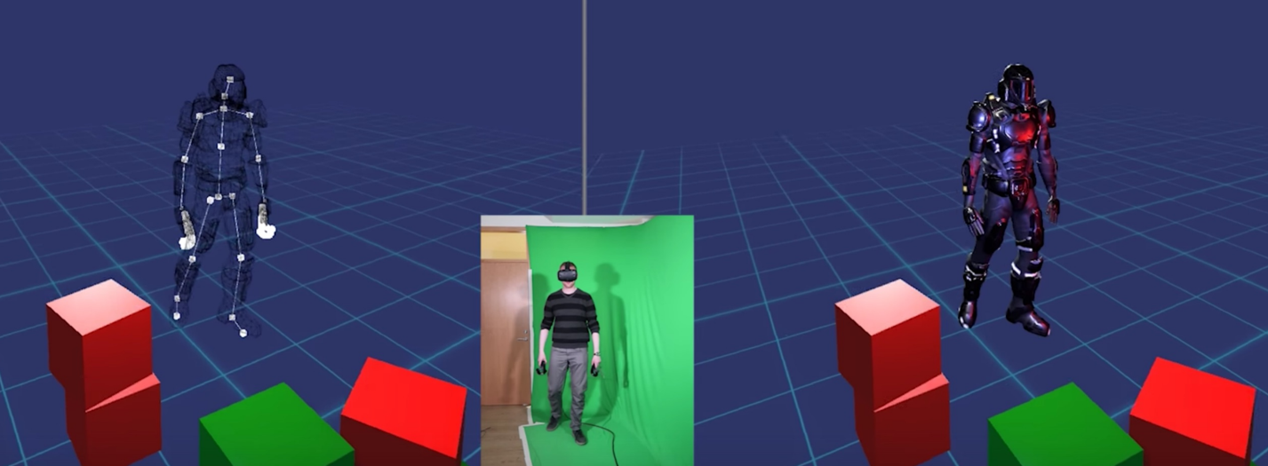 Daníel Arnar Sigurðsson, Friðrik Aðalsteinn Friðriksson and Halldór Snær Kristjánsson
Daníel Arnar Sigurðsson, Friðrik Aðalsteinn Friðriksson and Halldór Snær Kristjánsson
(2016) Virtual General Game Playing Agent
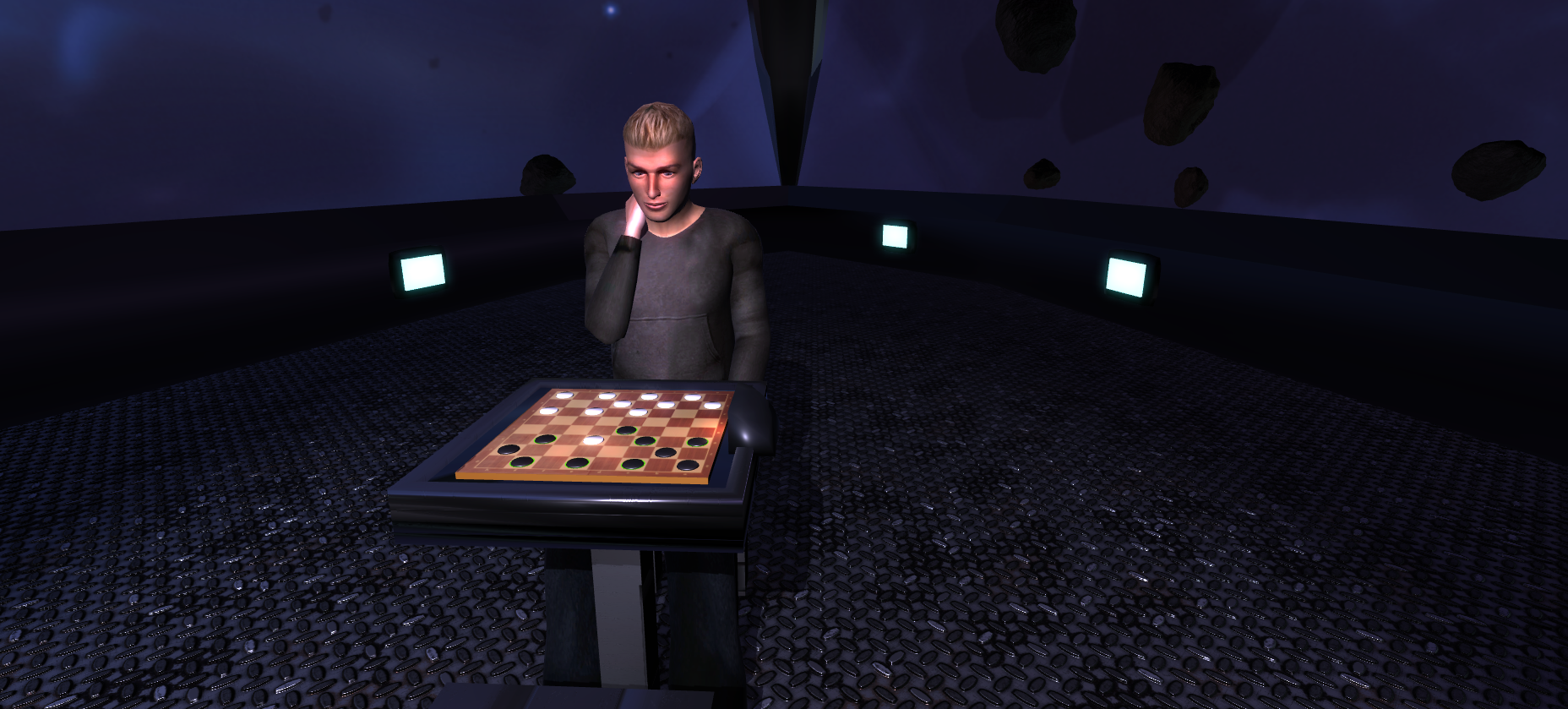 Hafdís Erla Helgadóttir, Svanhvít Jónsdóttir and Andri Sigurðsson
Hafdís Erla Helgadóttir, Svanhvít Jónsdóttir and Andri Sigurðsson
(2016) The Design and Development of a VR System for Social Phobia Therapy
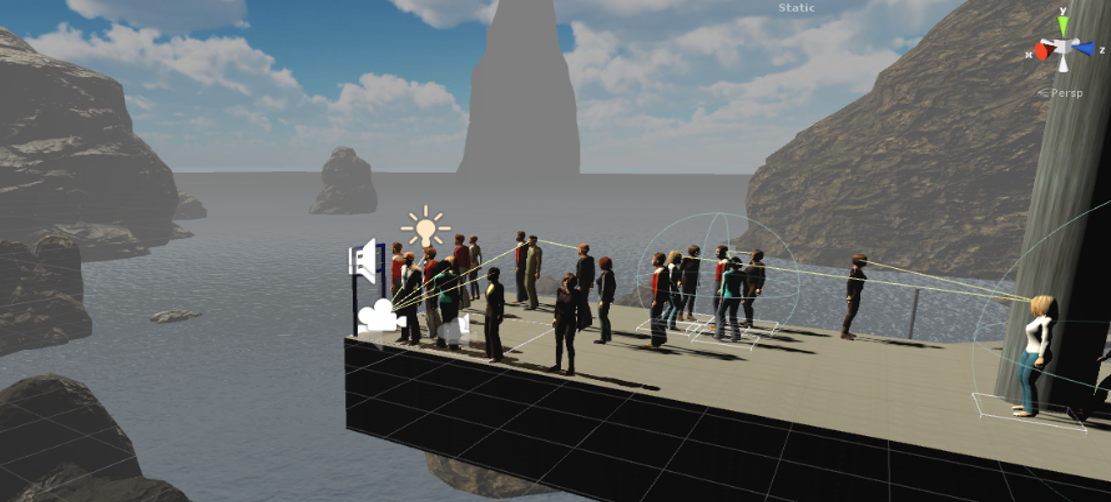 Ragnar Vilhjálmsson
Ragnar Vilhjálmsson
(2015) Visual Evaluation of User Reaction in VR
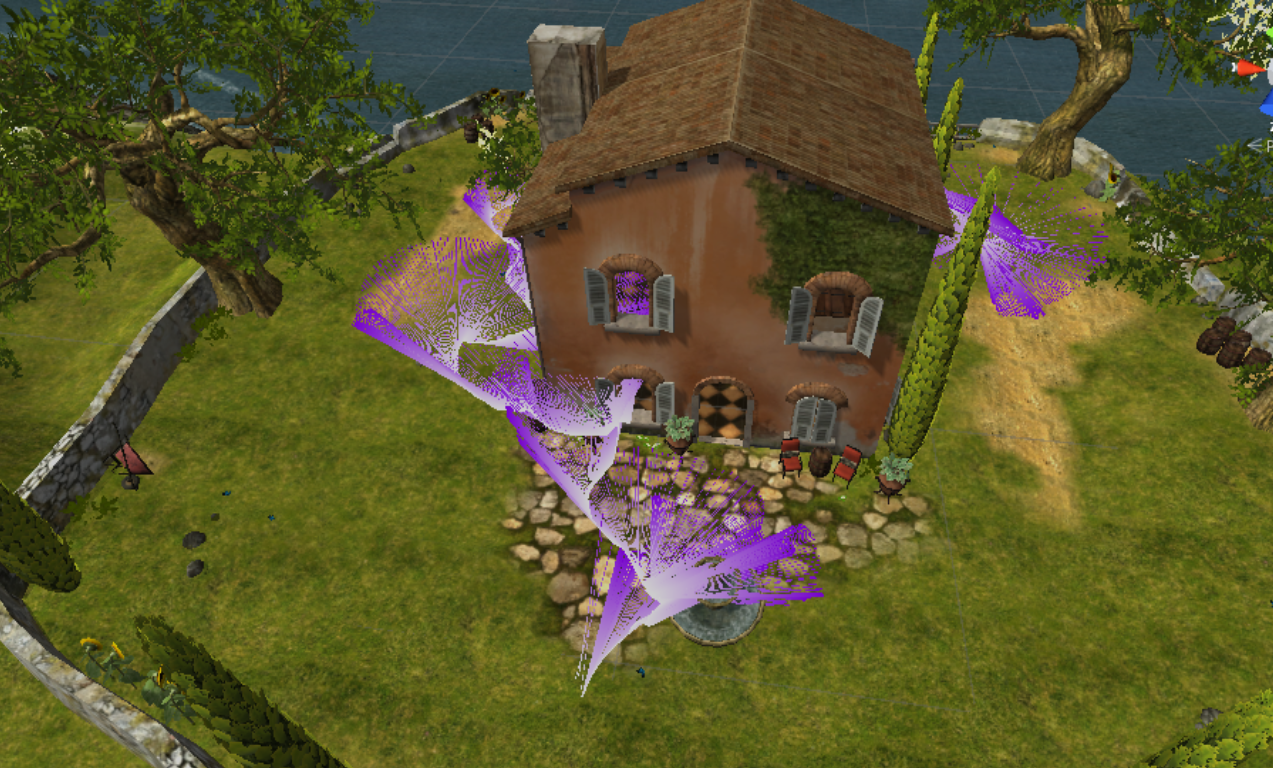 Páll Arinbjarnar
Páll Arinbjarnar
(2015) Social Questing in Deckbattana: Progression by Means of Character Interaction and Traversal of Social Space
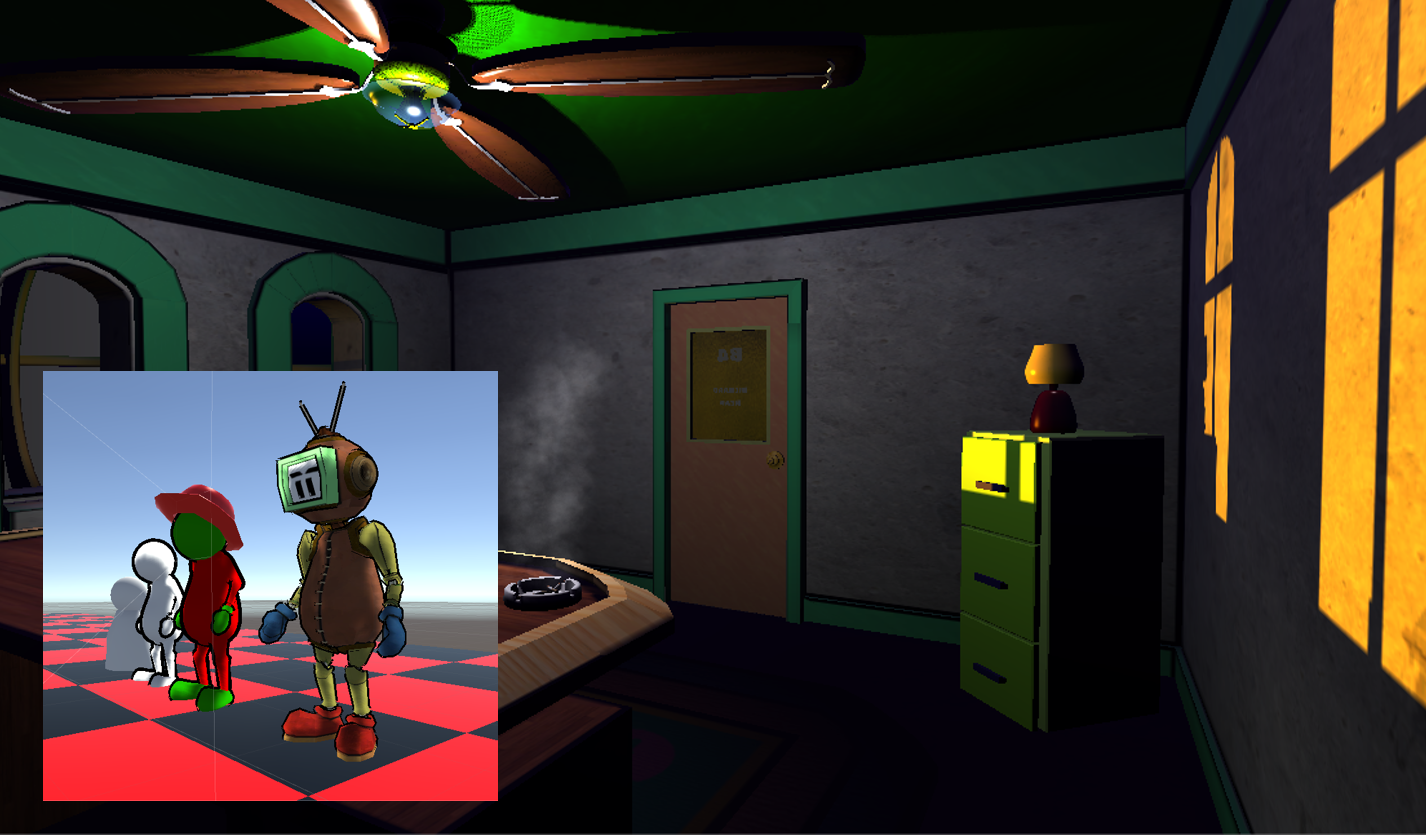 Unnar Kristjánsson
Unnar Kristjánsson
(2012) Generating Drama and Conflict in Games
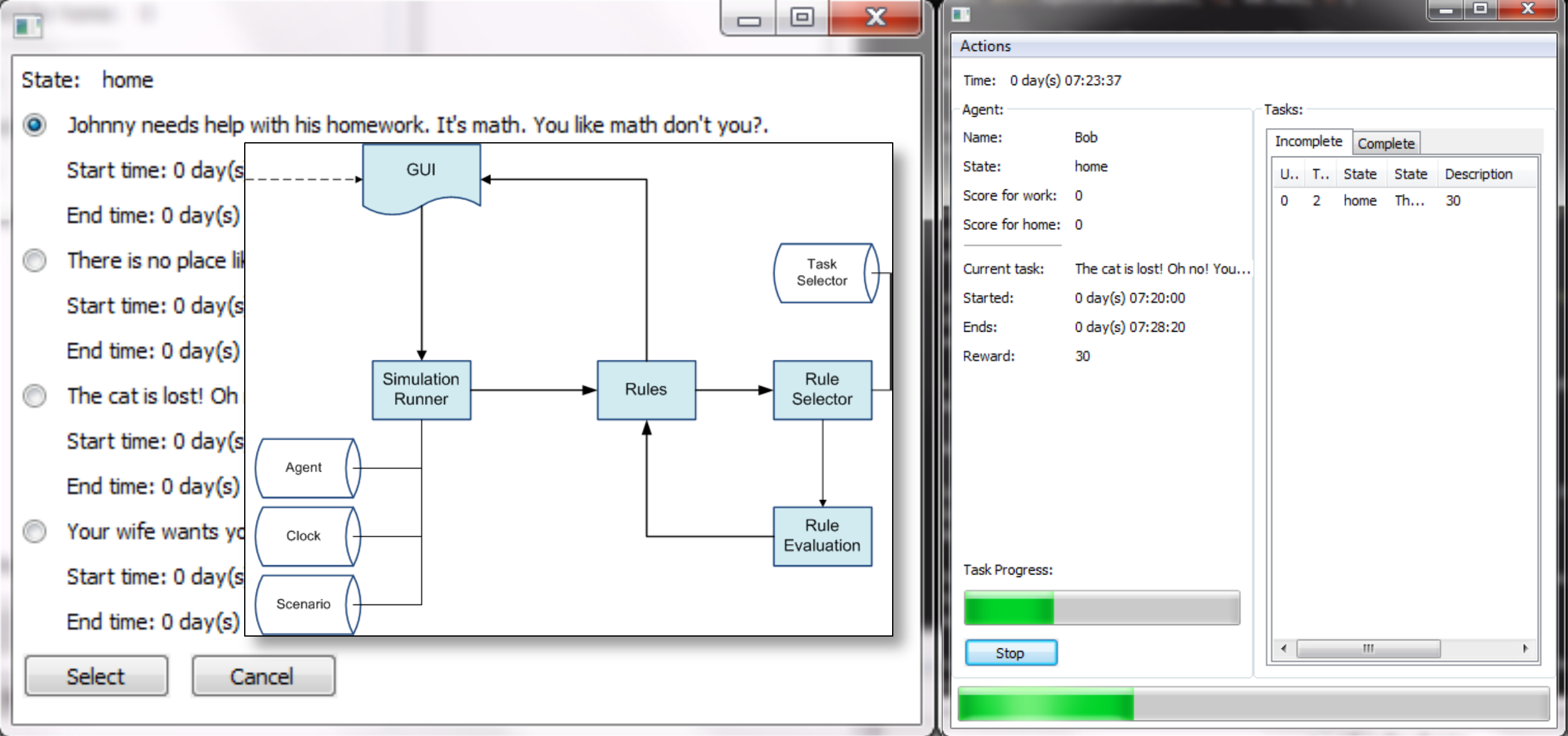 Elín Carstensdóttir
Elín Carstensdóttir
(2010) Fatafrík: An avatar based personal fitting room
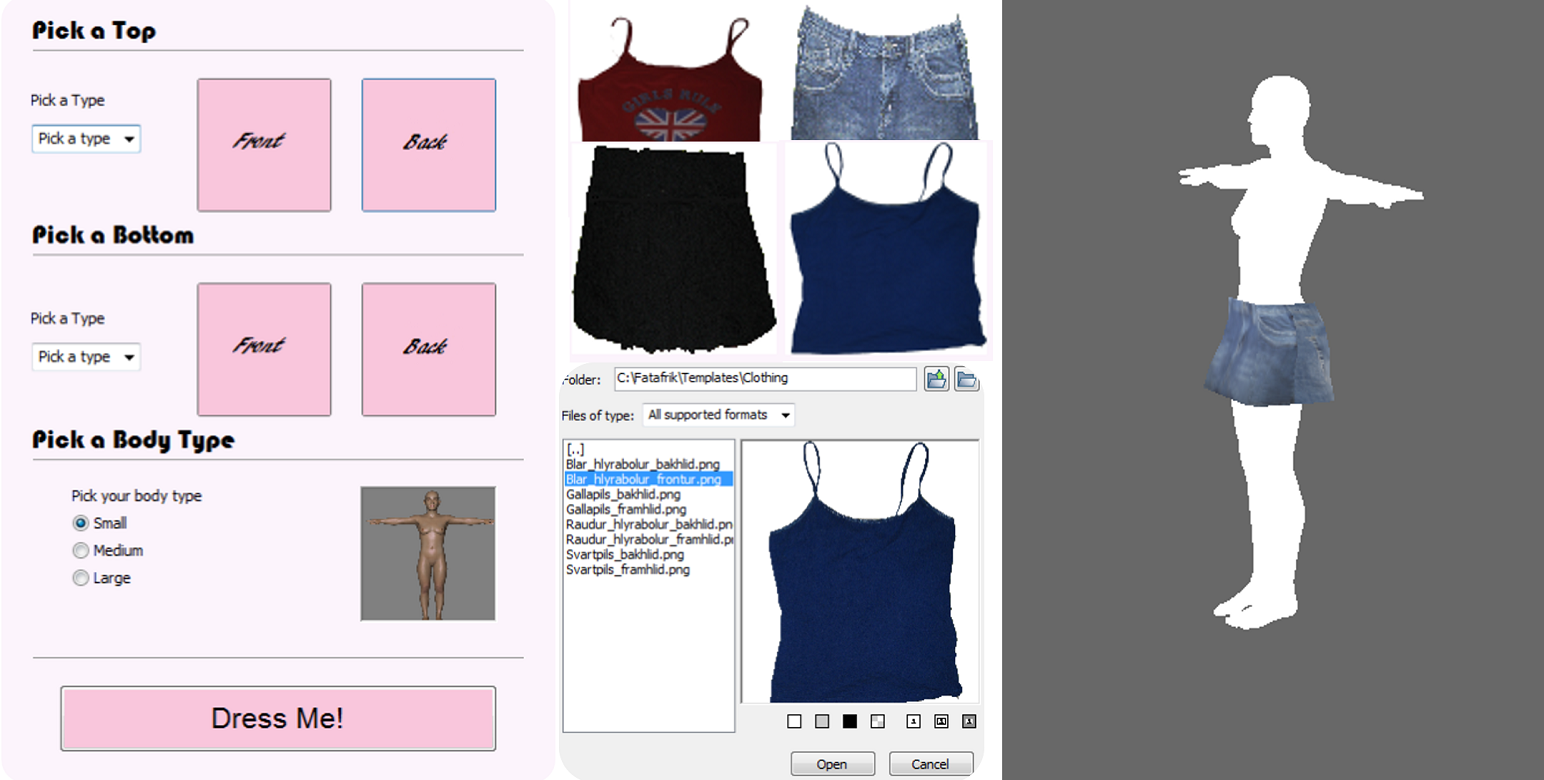 Hildur Sif Thorarensen
Hildur Sif Thorarensen
(2010) An Auditory Sensory Mechanism for Dynamic Virtual Environments
 Giuseppe Esposito
Giuseppe Esposito
(2009) OpenBEAT: Text to Animated Speech Behavior
 Eiríkur Ari Pétursson, Guðleifur Kristjánsson and Árni Hermann Reynisson
Eiríkur Ari Pétursson, Guðleifur Kristjánsson and Árni Hermann Reynisson
(2009) Modelling Rain in Virtual Environments
 Elvar Örn Unnþórsson
Elvar Örn Unnþórsson
(2008) BML Realizer: An Open Source BML Animation Toolkit
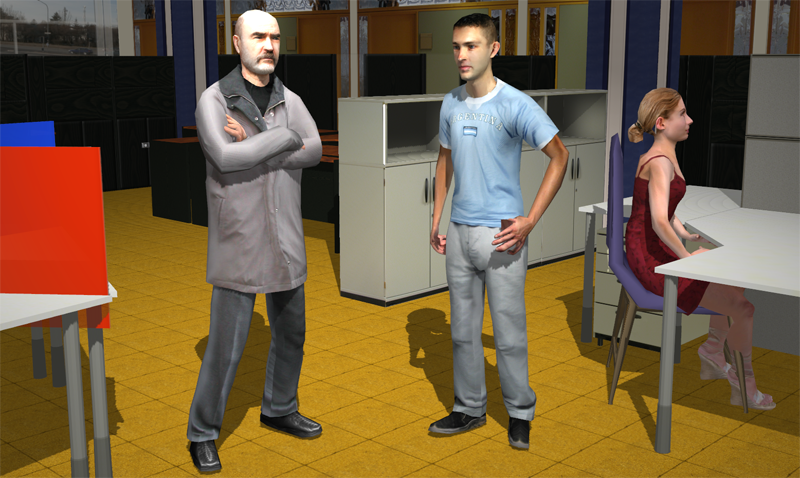 Bjarni Þór Árnason and Ægir Þorsteinsson
Bjarni Þór Árnason and Ægir Þorsteinsson
(2008) Procedural Approach to Tactile Social Interaction: Handshake
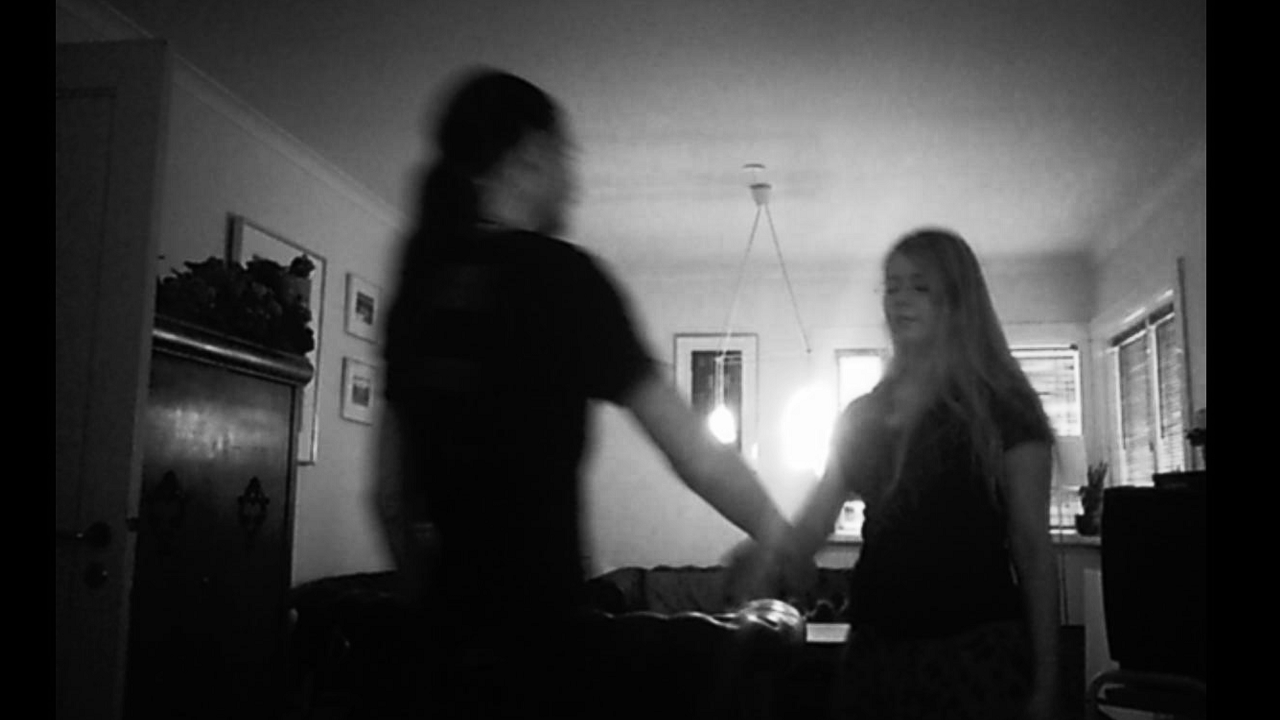 Óskar V. Guðjónsson
Óskar V. Guðjónsson
Student Summer Internship Grants (Student Innovation Fund)
(2024) Physics-Based AI for Social Animation
Saul Vílchez
(2024) Mixing Tangible and Digital Experience
Kristján Tjörvi Kristjánsson, Þór Breki Þorgrímsson (with Envalys)
(2023) Better Icelandic speech synthesis: Prosody roadmap
Magnús Freyr Morthens
(2022) A Living House and Environmentally Friendly Material Choices (with Brynja Hönnun)
Pálmi Chanachai Rúnarsson, Perla Gísladóttir
(2022) Mixed and Virtual Reality at The National University Hospital of Iceland (with Medagogic)
Daníel Örn Sigurðsson, Garpur Hnefill Emelíuson
(2022) The Sturlunga Saga in Our Hands (with 1238)
(2021) Virtual Pedestrians for Urban Planning Studies
Hrafnkell Þorri Þrastarson, Jóhann Kristinn Indriðason
(2021) Supporting Videonference with Automated Nonverbal Behavior
Jóhann Ingi Skúlason, Jón Skeggi Helgason
(2021) Segmentation of Satellite Imagery (with Envalys)
Elías Friðberg Guðjohnsen, Emil Þór Emilsson
(2020) Interactive Virtual Student with Programmable Behavioral Problems for Teacher Training in VR (with Berglind Sveinbjörnsdóttir)
Iyo Bisseck, Lára Borg Bolladóttir, Brynja Dagmar Jakobsdóttir, Tinna Þuríður Sigurðardóttir
(2020) Data-enhanced Experience of Dailighting in Space and Over Time (with Oculight Analytics)
Safa Jemai
(2020) The Impact of Learning about Ocean Acidification through Co-presence and Participation in VR (with Gagarin)
Guðrún Margrét Ívansdóttir, Laufey Inga Stefánsdóttir, Sjöfn Óskarsdóttir
(2020) Improving the User Experience of Remote Communication by Placing the Users in a Three Dimensional Virtual Space
Jóhann Ingi Skúlason, Jón Skeggi Helgason
(2020) Virtual Multilingual Conversational Agent
Elías Ingi Björgvinsson
(2020) Teaching and Training Aircraft Mechanics using Augmented Reality
Andri Sæmundsson, Hartmann Ingvarsson, Njáll Mýrdal Árnason
(2019) Simulating the Flow and Experience of Tourists for Planning Better Tourist Infrastructure
Sofia Basílio Valente Da Silva, Hallgrímur Snær Andrésson
(2019) Personal Product Showcase in Virtual Reality
Tryggvi Bragason
(2018) VR for Training Social Skills for Children Diagnosed with Autism (with Berglind Sveinbjörnsdóttir)
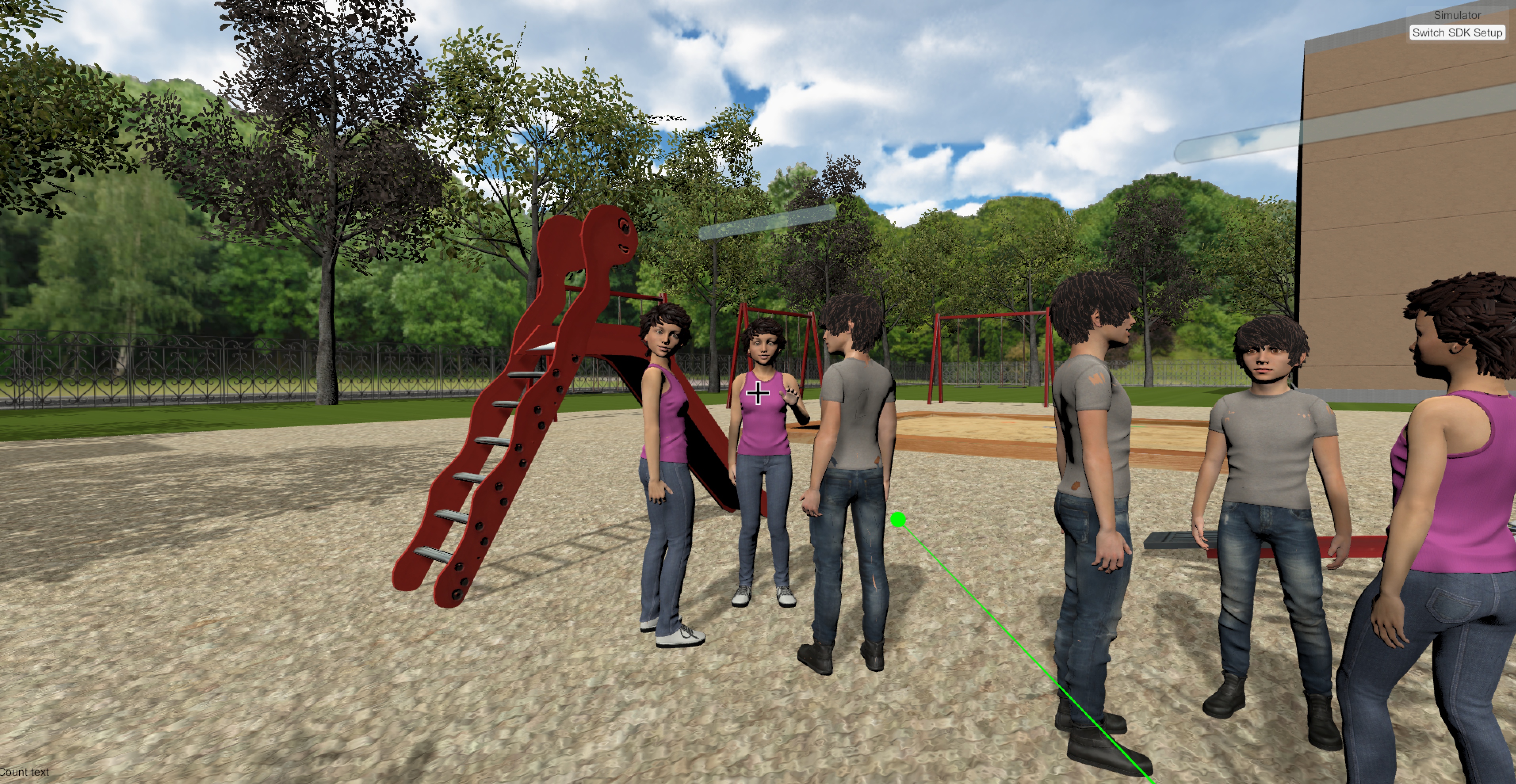 Ásdís Erna Guðmundsdóttir, Edit Ómarsdóttir, Þorkatla Sigurðardóttir
Ásdís Erna Guðmundsdóttir, Edit Ómarsdóttir, Þorkatla Sigurðardóttir
(2016) Inducing Response to Phobias using Virtual Reality (with Bjarni Halldórsson)
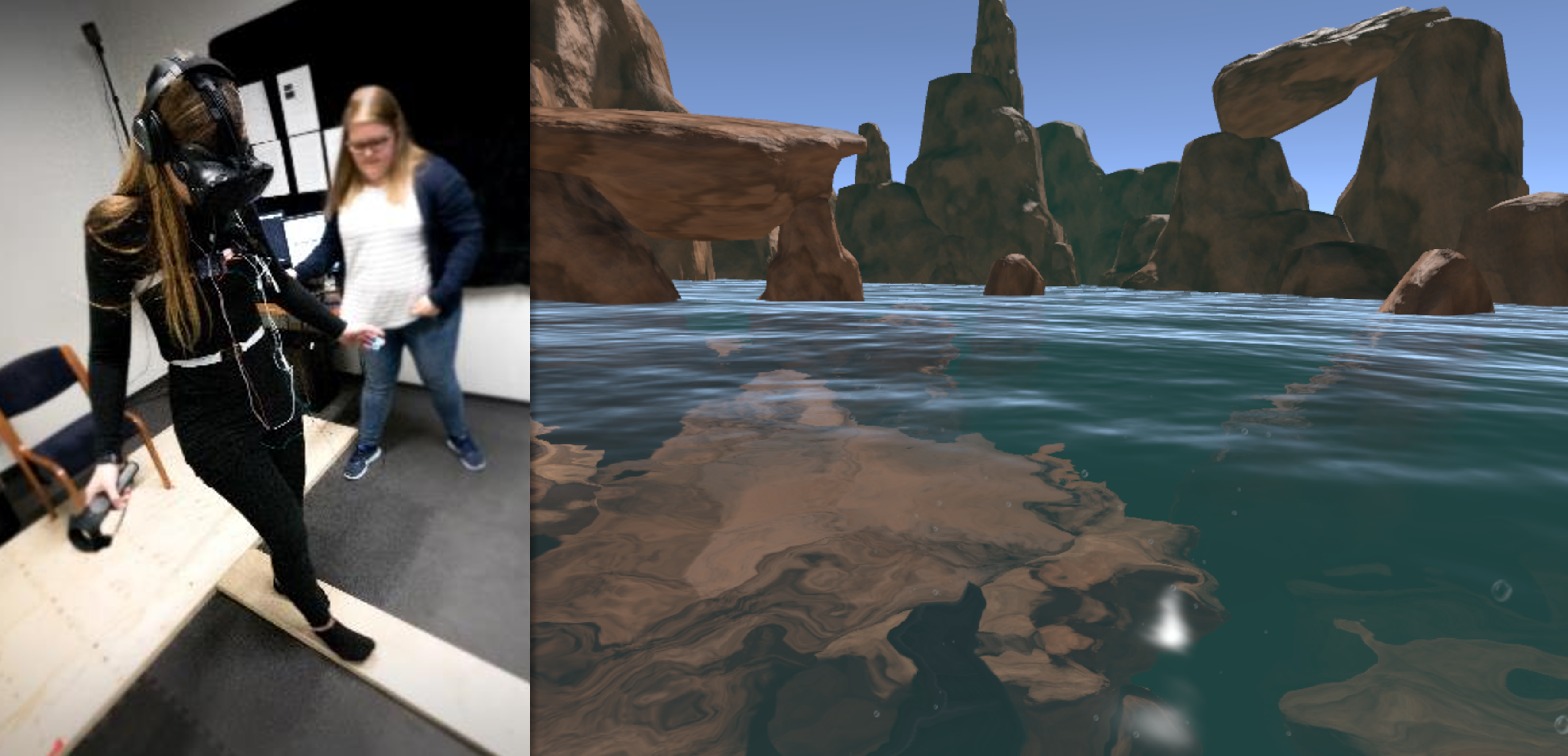 Ari Þórðarson, Gunnar Húni Björnsson and Hörður Már Hafsteinsson
Ari Þórðarson, Gunnar Húni Björnsson and Hörður Már Hafsteinsson
(2016) Virtual reality as a training tool for special education teachers (with Berglind Sveinbjörnsdóttir)
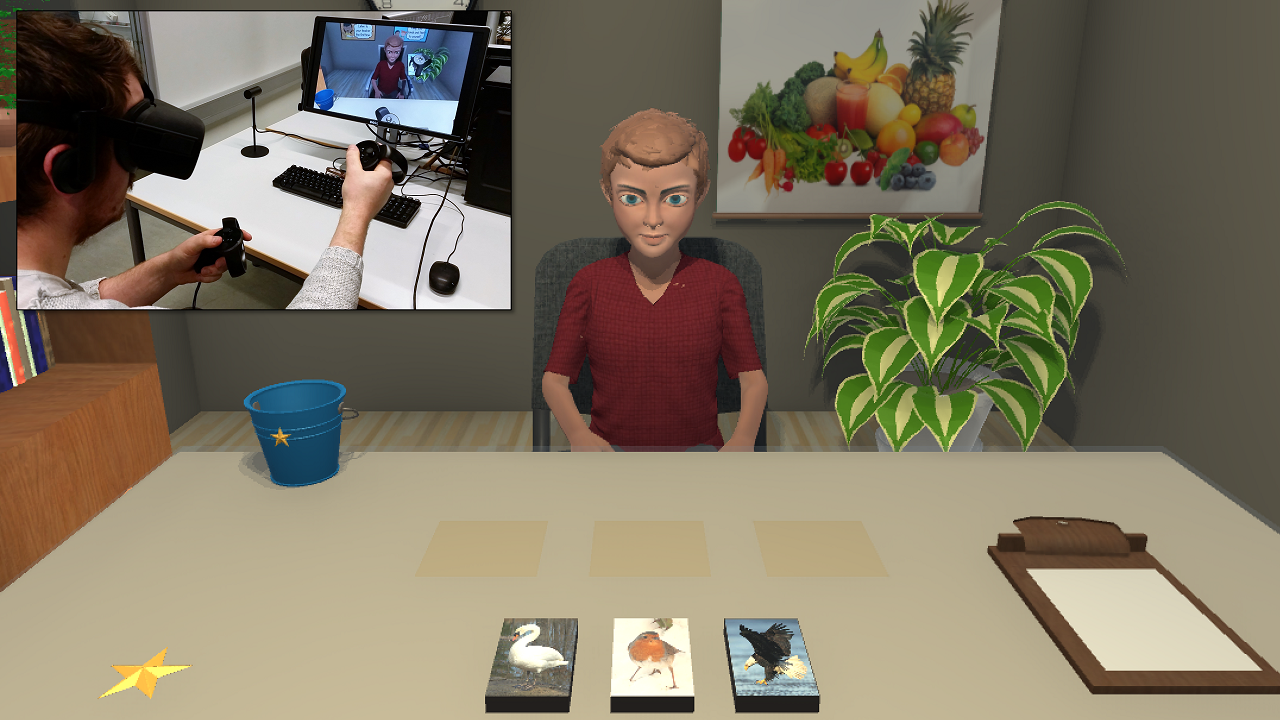 Tinna Þuríður Sigurðardóttir and Júlía Oddsdóttir
Tinna Þuríður Sigurðardóttir and Júlía Oddsdóttir
(2016) Automated Discrete Trial Training (with Berglind Sveinbjörnsdóttir)
Brynjar Ólafsson
(2014) The Effects of Leadership on the Visible Social Behaviour of Intelligent Agents
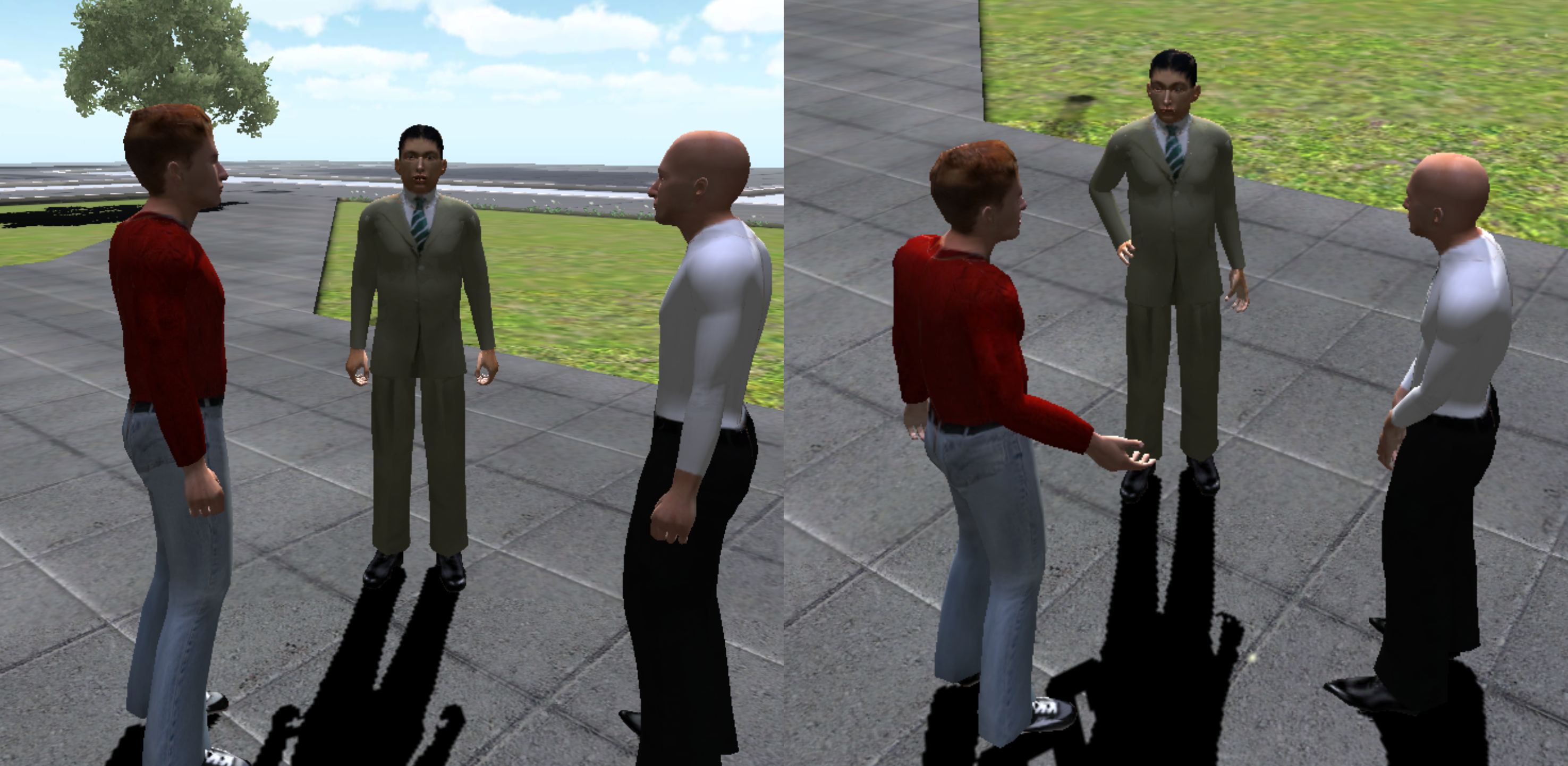 Hafdís Erla Helgadóttir
Hafdís Erla Helgadóttir
(2013) Speaking Daily Newspapers (with Blind Association)
Bjarni Egill Ögmundsson and Björn Alfreðsson
(2013) Optimizing expenditure on cycling roads using cyclists’ GPS data
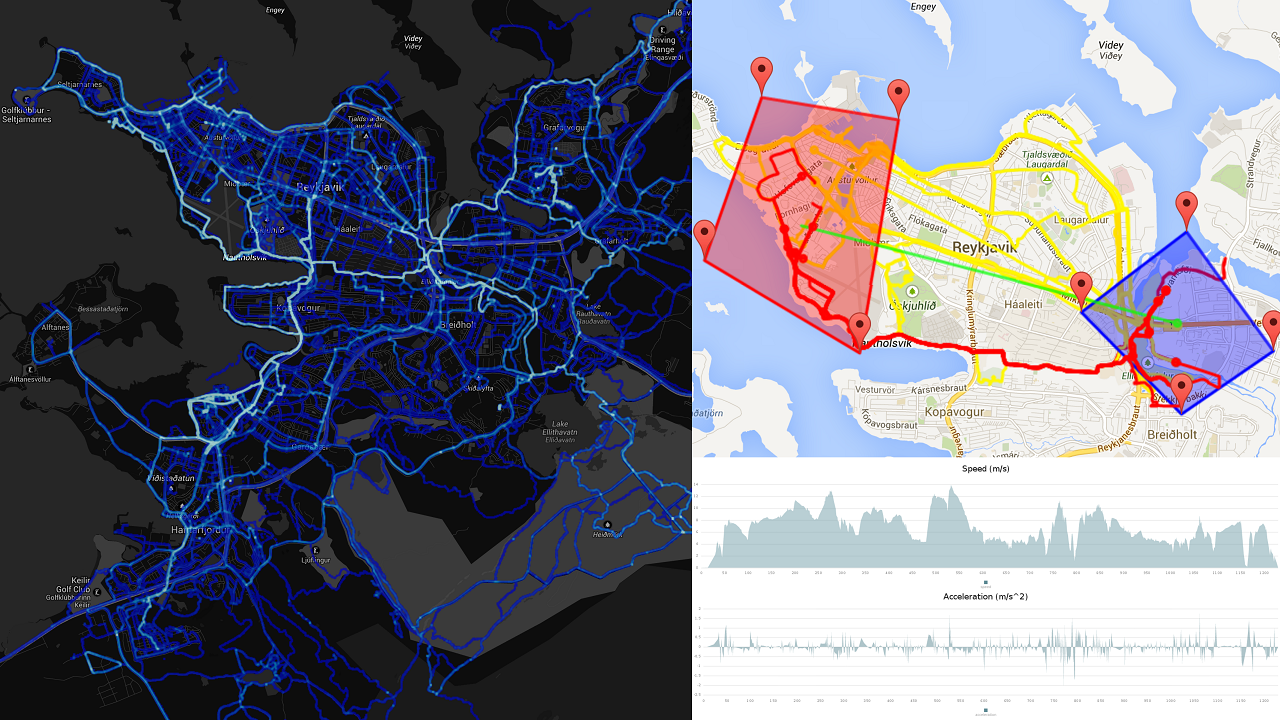 Ásgeir Jónasson, Hrafn Eiríksson, Ingólfur Eðvarðsson, Kári Helgason and Trausti Sæmundsson
Ásgeir Jónasson, Hrafn Eiríksson, Ingólfur Eðvarðsson, Kári Helgason and Trausti Sæmundsson
(2012) Interactive 3D Social Simulation of Reykjavik Downtown
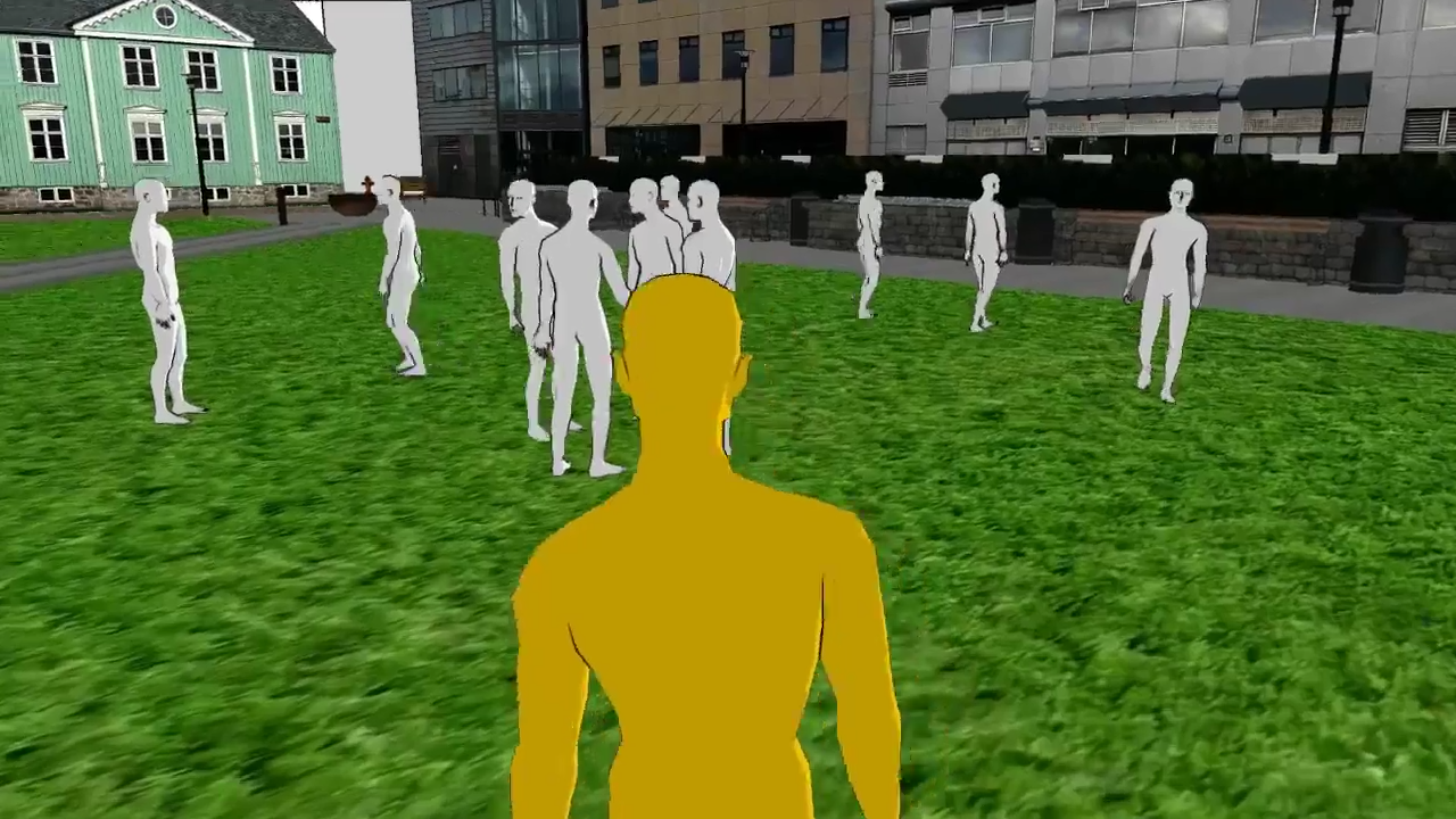 Hjálmar Leó Einarsson, Hlynur Örn Haraldsson, Stefán Brynjólfsson
Hjálmar Leó Einarsson, Hlynur Örn Haraldsson, Stefán Brynjólfsson
(2011) Web Environment for the Deployment and User Testing of Interactive Virtual Agents
 Gunnar Steinn Valgarðsson
Gunnar Steinn Valgarðsson
(2011) Emergent Virtual Stories
Elín Carstensdóttir
(2010) Autonomous Seat Selection for Virtual Agents
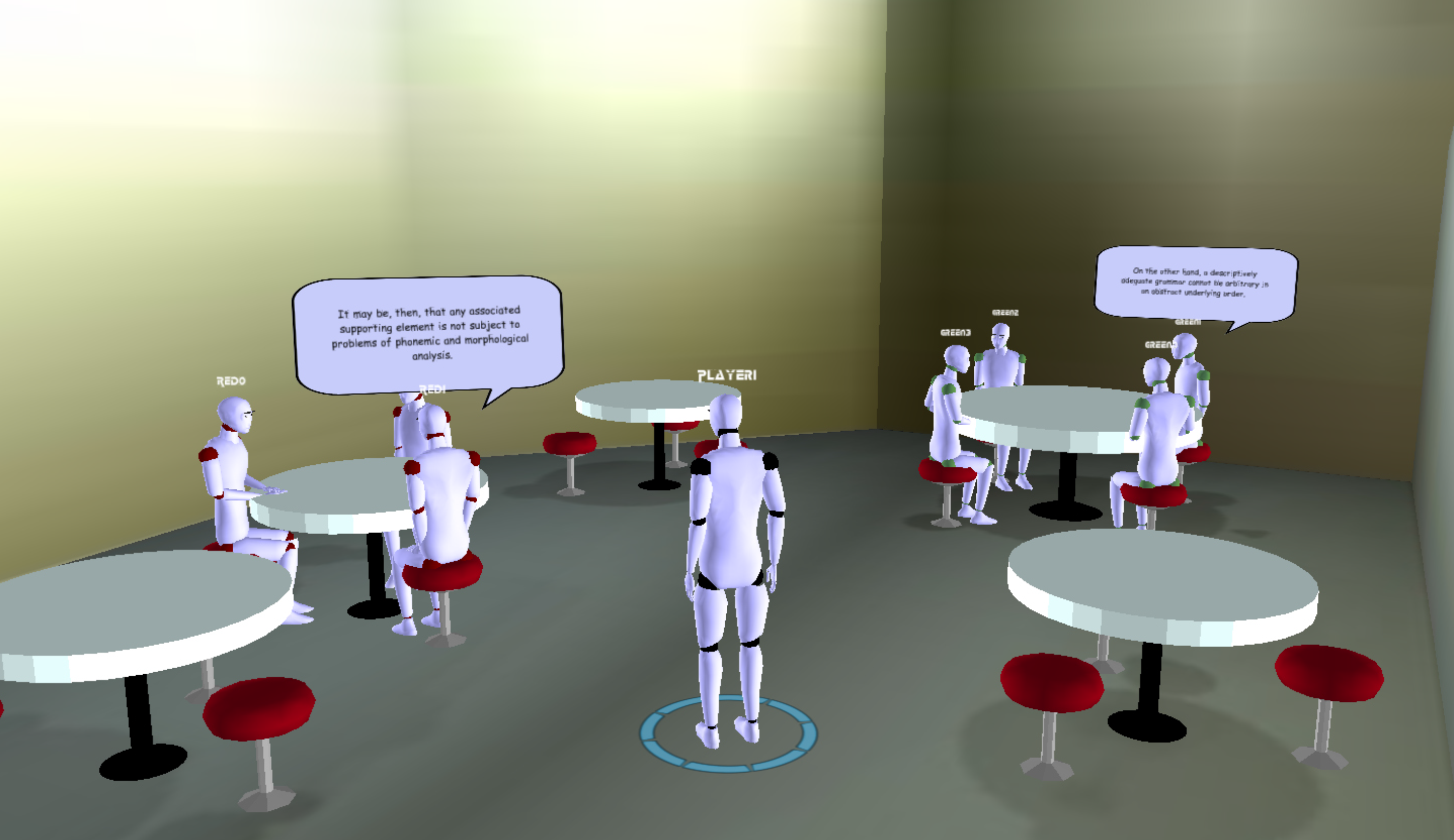 Kristín Guðmundsdóttir and Elín Carstensdóttir
Kristín Guðmundsdóttir and Elín Carstensdóttir
(2010) Icelandic Speech Recognition (with Jón Guðnason)
Jökull Jóhannsson and Einar Pétursson
(2009) The Automaded Virtual Reading Tutor (with Kristinn Thórisson)
Gunnar Steinn Valgarðsson
Papers
2025
 ‘It's all about the preparation’. Virtual reality courtroom for survivors of sexual violence: a case study Jónsdóttir, E. K., Konop, M., Antonsdóttir, H. F., Skúladóttir, H., Cardenas, P., Georgsdóttir, M. T., Thorisdottir, M.I., Valdimarsdóttir, H.B., Vilhjálmsson, H.H., Gudjonsson, G.H., Ásgeirsdóttir, B.B., Sigurvinsdottir, R. (2024). In Psychology, Crime & Law, 31(7), 773–788 [DOI]
‘It's all about the preparation’. Virtual reality courtroom for survivors of sexual violence: a case study Jónsdóttir, E. K., Konop, M., Antonsdóttir, H. F., Skúladóttir, H., Cardenas, P., Georgsdóttir, M. T., Thorisdottir, M.I., Valdimarsdóttir, H.B., Vilhjálmsson, H.H., Gudjonsson, G.H., Ásgeirsdóttir, B.B., Sigurvinsdottir, R. (2024). In Psychology, Crime & Law, 31(7), 773–788 [DOI]
2024
 Real-Time Musical Collaboration With a Probabilistic Model K. Johannsson, V. Shepardson, E. Hurtado, T. Magnusson and H. H. Vilhjálmsson. In the Proceedings of the International Conference on Content-Based Multimedia Indexing (CBMI), Reykjavik, Iceland, 2024, pp. 1-4 [DOI]
Real-Time Musical Collaboration With a Probabilistic Model K. Johannsson, V. Shepardson, E. Hurtado, T. Magnusson and H. H. Vilhjálmsson. In the Proceedings of the International Conference on Content-Based Multimedia Indexing (CBMI), Reykjavik, Iceland, 2024, pp. 1-4 [DOI]
 Modifying Gesture Style with Impression Words Jie Zeng, Yoshiki Takahashi, Yukiko I. Nakano, Tatsuya Sakato, and Hannes Högni Vilhjálmsson. 2024. In Proceedings of the 24th ACM International Conference on Intelligent Virtual Agents (IVA '24). Association for Computing Machinery, New York, NY, USA, Article 15, 1–9. [DOI]
Modifying Gesture Style with Impression Words Jie Zeng, Yoshiki Takahashi, Yukiko I. Nakano, Tatsuya Sakato, and Hannes Högni Vilhjálmsson. 2024. In Proceedings of the 24th ACM International Conference on Intelligent Virtual Agents (IVA '24). Association for Computing Machinery, New York, NY, USA, Article 15, 1–9. [DOI]
 Testifying in Court: Virtual Reality as a Preparation Strategy for Survivors of Sexual Violence in Iceland Hildur Fjóla Antonsdóttir, Erla Katrín Jónsdóttir, Margrét Tórshamar Georgsdóttir, Malena Írisardóttir Þórisdóttir, Hildur Skúladóttir, Magdalena Konop, Paola Cardenas, Hannes Högni Vilhjálmsson, Bryndís Björk Ásgeirsdóttir & Rannveig Sigurvinsdóttir. In International Criminolgy 4, 16–30 (2024). [DOI]
Testifying in Court: Virtual Reality as a Preparation Strategy for Survivors of Sexual Violence in Iceland Hildur Fjóla Antonsdóttir, Erla Katrín Jónsdóttir, Margrét Tórshamar Georgsdóttir, Malena Írisardóttir Þórisdóttir, Hildur Skúladóttir, Magdalena Konop, Paola Cardenas, Hannes Högni Vilhjálmsson, Bryndís Björk Ásgeirsdóttir & Rannveig Sigurvinsdóttir. In International Criminolgy 4, 16–30 (2024). [DOI]
2023
 A Virtual Reality Courtroom for Survivors of Sexual Violence: A Mixed-Method Pilot Study on Application Possibilities Sigurvinsdottir, R., Skúladóttir, H., Antonsdóttir, H. F., Cardenas, P., Georgsdóttir, M. T., Írisardóttir Þórisdóttir, M., Jónsdóttir, E. K., Konop, M., Valdimarsdóttir, H. B., Vilhjálmsson, H. H., & Ásgeirsdóttir, B. B. (2023). In Violence Against Women, 30(1), 249-274. [DOI]
A Virtual Reality Courtroom for Survivors of Sexual Violence: A Mixed-Method Pilot Study on Application Possibilities Sigurvinsdottir, R., Skúladóttir, H., Antonsdóttir, H. F., Cardenas, P., Georgsdóttir, M. T., Írisardóttir Þórisdóttir, M., Jónsdóttir, E. K., Konop, M., Valdimarsdóttir, H. B., Vilhjálmsson, H. H., & Ásgeirsdóttir, B. B. (2023). In Violence Against Women, 30(1), 249-274. [DOI]
2022
 Interaction in Social Space. Hannes Högni Vilhjálmsson. In Birgit Lugrin, Catherine Pelachaud, and David Traum (Eds.). 2022. The Handbook on Socially Interactive Agents: 20 years of Research on Embodied Conversational Agents, Intelligent Virtual Agents, and Social Robotics Volume 2: Interactivity, Platforms, Application (1st. ed.). ACM Books, Vol. 48. Association for Computing Machinery, New York, NY, USA. ACM Digital Library (Book Chapter)
Interaction in Social Space. Hannes Högni Vilhjálmsson. In Birgit Lugrin, Catherine Pelachaud, and David Traum (Eds.). 2022. The Handbook on Socially Interactive Agents: 20 years of Research on Embodied Conversational Agents, Intelligent Virtual Agents, and Social Robotics Volume 2: Interactivity, Platforms, Application (1st. ed.). ACM Books, Vol. 48. Association for Computing Machinery, New York, NY, USA. ACM Digital Library (Book Chapter)
 Augmented Virtuality Training for Special Education Teachers. Valentin Antoni, Felix Mauer, Odile Cesari, Christian Eichhorn and Hannes Högni Vilhjálmsson. In Proceedings of the Workshop on Serious VR-Applications, Simulations and Games VR Enabling Knowledge Gain for the User (VENUS) at the 21st IEEE International Symposium on Mixed and Augmented Reality, Mixed Reality and Virtual Reality, October 17-21, Singapore
Augmented Virtuality Training for Special Education Teachers. Valentin Antoni, Felix Mauer, Odile Cesari, Christian Eichhorn and Hannes Högni Vilhjálmsson. In Proceedings of the Workshop on Serious VR-Applications, Simulations and Games VR Enabling Knowledge Gain for the User (VENUS) at the 21st IEEE International Symposium on Mixed and Augmented Reality, Mixed Reality and Virtual Reality, October 17-21, Singapore
 Extending the menge crowd simulation framework: visual authoring in unity. Michelangelo Diamanti and Hannes Högni Vilhjálmsson. 2022. In Proceedings of the 22nd ACM International Conference on Intelligent Virtual Agents (IVA '22). ACM, New York, NY, USA. ACM Digital Library (Extended Abstract, Poster and Demo)
Extending the menge crowd simulation framework: visual authoring in unity. Michelangelo Diamanti and Hannes Högni Vilhjálmsson. 2022. In Proceedings of the 22nd ACM International Conference on Intelligent Virtual Agents (IVA '22). ACM, New York, NY, USA. ACM Digital Library (Extended Abstract, Poster and Demo)
 Do We Need to Be in Full Control of Our VR Avatars? Hannes Högni Vilhjálmsson. In Proceedings of the Workshop on the Symbiotic Society with Avatars: Social Acceptance, Ethics and Technologies at the 31st IEEE International Conference on Robot and Human Interacctive Communication (RO-MAN 2022), september 2, Napoli, Italy (Position Paper)
Do We Need to Be in Full Control of Our VR Avatars? Hannes Högni Vilhjálmsson. In Proceedings of the Workshop on the Symbiotic Society with Avatars: Social Acceptance, Ethics and Technologies at the 31st IEEE International Conference on Robot and Human Interacctive Communication (RO-MAN 2022), september 2, Napoli, Italy (Position Paper)
 The Power of Procedural Generation and AI For Quick But Engaging VR. Hannes H. Vilhjalmsson. In Proceedings of the "Once Upon a Time in the Future: Conference on Digital Promotion and Preservation of Heritage", PHIVE final seminar, 16th of June, University of Iceland, Reykjavik, Iceland (Abstract)
The Power of Procedural Generation and AI For Quick But Engaging VR. Hannes H. Vilhjalmsson. In Proceedings of the "Once Upon a Time in the Future: Conference on Digital Promotion and Preservation of Heritage", PHIVE final seminar, 16th of June, University of Iceland, Reykjavik, Iceland (Abstract)
2021
 Social Crowd Simulation: The Challenge of Fragmentation. Michelangelo Diamanti, Hannes H. Vilhjalmsson. In Proceedings of the 4th IEEE International Conference on Artificial Intelligence and Virtual Reality (AIVR), Workshop on Modeling and Animating Realistic Crowds and Humans (MARCH), Online, 16th of November, 2021
Social Crowd Simulation: The Challenge of Fragmentation. Michelangelo Diamanti, Hannes H. Vilhjalmsson. In Proceedings of the 4th IEEE International Conference on Artificial Intelligence and Virtual Reality (AIVR), Workshop on Modeling and Animating Realistic Crowds and Humans (MARCH), Online, 16th of November, 2021
 Integrating Video with Artificial Gesture Jóhann Ingi Skúlason, Jón Skeggi Helgason, Anna Sigridur Islind, Steinunn Gróa Sigurdardóttir, and Hannes Högni Vilhjálmsson. 2021. The Crossmodal Social Animation Workshop at the International Conference on Computer Vision (ICCV), Online, 11th - 17th October, 2021
Integrating Video with Artificial Gesture Jóhann Ingi Skúlason, Jón Skeggi Helgason, Anna Sigridur Islind, Steinunn Gróa Sigurdardóttir, and Hannes Högni Vilhjálmsson. 2021. The Crossmodal Social Animation Workshop at the International Conference on Computer Vision (ICCV), Online, 11th - 17th October, 2021
 Assessing the Disturbance from Overcrowding in Outdoor Nature Experiences. Claudio Pedica, Michelangelo Diamanti, and Hannes Högni Vilhjálmsson. 2021. In Extended Abstracts of the 2021 CHI Conference on Human Factors in Computing Systems (CHI EA '21). Association for Computing Machinery, New York, NY, USA, Article 58, 1–8. DOI:https://doi.org/10.1145/3411763.3443439
Assessing the Disturbance from Overcrowding in Outdoor Nature Experiences. Claudio Pedica, Michelangelo Diamanti, and Hannes Högni Vilhjálmsson. 2021. In Extended Abstracts of the 2021 CHI Conference on Human Factors in Computing Systems (CHI EA '21). Association for Computing Machinery, New York, NY, USA, Article 58, 1–8. DOI:https://doi.org/10.1145/3411763.3443439
 Social Anxiety, Fear of Negative Evaluation, and Distress in a Virtual Reality Environment. Rannveig Sigurvinsdottir, Karen Soring, Karen Kristinsdottir, Sveinn Gunnar Halfdanarson, Kamilla R. Johannsdottir, Hannes H. Vilhjalmsson and Heiddis B. Valdimarsdottir. 2021. Behaviour Change, 38(2), 109–118. Cambridge University Press.
Social Anxiety, Fear of Negative Evaluation, and Distress in a Virtual Reality Environment. Rannveig Sigurvinsdottir, Karen Soring, Karen Kristinsdottir, Sveinn Gunnar Halfdanarson, Kamilla R. Johannsdottir, Hannes H. Vilhjalmsson and Heiddis B. Valdimarsdottir. 2021. Behaviour Change, 38(2), 109–118. Cambridge University Press.
2020
 Working Group on Scenarios for Human-Agent and Human-Robot Groups. P. Alves-Oliveira, M. Foster, H. Gunes, S. Höhn, F. Kirstein, A. Marrella, M. Neerincx, M. Okada, A. Paiva, E. Sklar, H. Vilhjálmsson, in Dagstuhl Reports: Social Agents for Teamwork and Group Interactions (Dagstuhl Seminar 19411), E. Andre, A. Paiva, J. Shah and S. Sabanovic (Eds.) 9:10, pp 37-41, Schloss Dagstuhl--Leibniz-Zentrum fuer Informatik DROPS
Working Group on Scenarios for Human-Agent and Human-Robot Groups. P. Alves-Oliveira, M. Foster, H. Gunes, S. Höhn, F. Kirstein, A. Marrella, M. Neerincx, M. Okada, A. Paiva, E. Sklar, H. Vilhjálmsson, in Dagstuhl Reports: Social Agents for Teamwork and Group Interactions (Dagstuhl Seminar 19411), E. Andre, A. Paiva, J. Shah and S. Sabanovic (Eds.) 9:10, pp 37-41, Schloss Dagstuhl--Leibniz-Zentrum fuer Informatik DROPS
 Working Group on Social Behaviours for Group Interactions between Humans and Social Agents and Robots. E. André, D. Heylen, J. Kennedy, A. Paiva, C. Pelachaud, H. Vilhjálmsson, in Dagstuhl Reports: Social Agents for Teamwork and Group Interactions (Dagstuhl Seminar 19411), E. Andre, A. Paiva, J. Shah and S. Sabanovic (Eds.) 9:10, pp 37-41, Schloss Dagstuhl--Leibniz-Zentrum fuer Informatik DROPS
Working Group on Social Behaviours for Group Interactions between Humans and Social Agents and Robots. E. André, D. Heylen, J. Kennedy, A. Paiva, C. Pelachaud, H. Vilhjálmsson, in Dagstuhl Reports: Social Agents for Teamwork and Group Interactions (Dagstuhl Seminar 19411), E. Andre, A. Paiva, J. Shah and S. Sabanovic (Eds.) 9:10, pp 37-41, Schloss Dagstuhl--Leibniz-Zentrum fuer Informatik DROPS
2019
 Future Cities: Using virtual technology to design restorative residential neighborhoods. Pall Jakob Lindal, Terry Hartig, Kamilla R. Johannsdottir, Hannes Vilhjalmsson. International Conference on Environmental Psychology (ICEP) 2019, 4 Sept. – 6 Sept., Plymouth, UK. (Abstract)
Future Cities: Using virtual technology to design restorative residential neighborhoods. Pall Jakob Lindal, Terry Hartig, Kamilla R. Johannsdottir, Hannes Vilhjalmsson. International Conference on Environmental Psychology (ICEP) 2019, 4 Sept. – 6 Sept., Plymouth, UK. (Abstract)
 SoCueVR: Virtual Reality Game for Social Cue Detection Training. Ari Thordarson and Hannes Högni Vilhjálmsson. 2019. In Proceedings of the 19th ACM International Conference on Intelligent Virtual Agents (IVA '19). ACM, New York, NY, USA, 46-48. ACM Digital Library
SoCueVR: Virtual Reality Game for Social Cue Detection Training. Ari Thordarson and Hannes Högni Vilhjálmsson. 2019. In Proceedings of the 19th ACM International Conference on Intelligent Virtual Agents (IVA '19). ACM, New York, NY, USA, 46-48. ACM Digital Library
 Work in Progress Report: Virtual Courtroom to Prepare Victims of Sex Crimes for Court Proceedings. Helga Margrét Ólafsdóttir, Edit Ómarsdóttir, Hafdís Sæland, and Hannes Högni Vilhjálmsson. 2019. In Proceedings of the 19th ACM International Conference on Intelligent Virtual Agents (IVA '19). ACM, New York, NY, USA, 170-172. ACM Digital Library
Work in Progress Report: Virtual Courtroom to Prepare Victims of Sex Crimes for Court Proceedings. Helga Margrét Ólafsdóttir, Edit Ómarsdóttir, Hafdís Sæland, and Hannes Högni Vilhjálmsson. 2019. In Proceedings of the 19th ACM International Conference on Intelligent Virtual Agents (IVA '19). ACM, New York, NY, USA, 170-172. ACM Digital Library
 Virtual Discrete Trial Training for Teacher Trainees. Berglind Sveinbjörnsdóttir, Snorri Hjörvar Jóhannsson, Júlía Oddsdóttir, Tinna Þuríður Sigurðardóttir, Gunnar Ingi Valdimarsson, Hannes Högni Vilhjálmsson. Journal on Multimodal User Interfaces. Springer (Online January 2019). Springer Link
Virtual Discrete Trial Training for Teacher Trainees. Berglind Sveinbjörnsdóttir, Snorri Hjörvar Jóhannsson, Júlía Oddsdóttir, Tinna Þuríður Sigurðardóttir, Gunnar Ingi Valdimarsson, Hannes Högni Vilhjálmsson. Journal on Multimodal User Interfaces. Springer (Online January 2019). Springer Link
2018
 Study of Nine People in a Hallway: Some Simulation Challenges. Claudio Pedica and Hannes Högni Vilhjálmsson. In Proceedings of the 18th International Conference on Intelligent Virtual Agents (pp. 185–190). Sidney, Australia, November 2018. ACM Digital Library
Study of Nine People in a Hallway: Some Simulation Challenges. Claudio Pedica and Hannes Högni Vilhjálmsson. In Proceedings of the 18th International Conference on Intelligent Virtual Agents (pp. 185–190). Sidney, Australia, November 2018. ACM Digital Library
 Interpreting Social Commitment in a Simulated Theater. Daniel Veutgen, Aþena Ásgeirsdóttir, Guðrún Baldursdóttir, Sigrún Gissurardóttir, Gísli Guðmundsson, Valdimar Laenen, Marco Massetti, Joy Rossi, Tinna Sigurðardóttir, Leonardi Veroli and Hannes Högni Vilhjálmsson. In the Proceedings of the 18th International Conference on Inteligent Virtual Agents (pp. 289-294), Sidney, Australia, November 2018. ACM Digital Library
Interpreting Social Commitment in a Simulated Theater. Daniel Veutgen, Aþena Ásgeirsdóttir, Guðrún Baldursdóttir, Sigrún Gissurardóttir, Gísli Guðmundsson, Valdimar Laenen, Marco Massetti, Joy Rossi, Tinna Sigurðardóttir, Leonardi Veroli and Hannes Högni Vilhjálmsson. In the Proceedings of the 18th International Conference on Inteligent Virtual Agents (pp. 289-294), Sidney, Australia, November 2018. ACM Digital Library
 When a Virtual Agent is a Flawed Stimulus. Hannes Högni Vilhjálmsson. In Proceedings of the 1st Workshop on Methodology and/of Evaluation of IVAs. Sidney, Australia, November 2018. (Extended Abstract)
When a Virtual Agent is a Flawed Stimulus. Hannes Högni Vilhjálmsson. In Proceedings of the 1st Workshop on Methodology and/of Evaluation of IVAs. Sidney, Australia, November 2018. (Extended Abstract)
 Comparison of Teleportation and Fixed Track Driving in VR. Páll Jakob Líndal, Kamilla Rún Jóhannsdóttir, Unnar Kristjánsson, Nina Lensing, Anna Stuehmeier, Annika Wohlan, and Hannes Högni Vilhjálmsson. In Proceedings of the 10th International Conference on Virtual Worlds and Games for Serious Applications. Würzburg, Germany, 2018. IEEE Xplore
Comparison of Teleportation and Fixed Track Driving in VR. Páll Jakob Líndal, Kamilla Rún Jóhannsdóttir, Unnar Kristjánsson, Nina Lensing, Anna Stuehmeier, Annika Wohlan, and Hannes Högni Vilhjálmsson. In Proceedings of the 10th International Conference on Virtual Worlds and Games for Serious Applications. Würzburg, Germany, 2018. IEEE Xplore
 User Evaluations of Virtually Experiencing Mount Everest. Marta Lárusdóttir, David Thue, and Hannes Högni Vilhjálmsson. In Proceedings of the 7th International Working Conference on Human-Centered Software Engineering. Sophia Antipolis, France: Springer, 2018.
User Evaluations of Virtually Experiencing Mount Everest. Marta Lárusdóttir, David Thue, and Hannes Högni Vilhjálmsson. In Proceedings of the 7th International Working Conference on Human-Centered Software Engineering. Sophia Antipolis, France: Springer, 2018.
 Teaching Discrete Trial Training in a Virtual Reality Environment. Berglind Sveinbjörnsdóttir, Snorri Johannson, Asa Ingimarsdottir, and Hannes Högni Vilhjálmsson. In Proceedings of the ABAI 44th Annual Convention. San Diego, California, USA: ABAI, 2018. (Poster)
Teaching Discrete Trial Training in a Virtual Reality Environment. Berglind Sveinbjörnsdóttir, Snorri Johannson, Asa Ingimarsdottir, and Hannes Högni Vilhjálmsson. In Proceedings of the ABAI 44th Annual Convention. San Diego, California, USA: ABAI, 2018. (Poster)
2017
 Learners’ Expectations and Experiences in Virtual Reykjavik. Branislav Bédi, Birna Arnbjörnsdóttir and Hannes Högni Vilhjálmsson. In Proceedings of CALL in Context. pp 75-82. University of California, Berkeley, 7-9 July 2017.
Learners’ Expectations and Experiences in Virtual Reykjavik. Branislav Bédi, Birna Arnbjörnsdóttir and Hannes Högni Vilhjálmsson. In Proceedings of CALL in Context. pp 75-82. University of California, Berkeley, 7-9 July 2017.
2016
 Become your Avatar: Fast Skeletal Reconstruction from Sparse Data for Fully-tracked VR. Friðrik Aðalsteinn Friðriksson, Halldór S. Kristjánsson, Daníel Arnar Sigurðsson, David Thue and Hannes Högni Vilhjálmsson. In the ACM Eurographics Proceedings of ICAT-EGVE 2016. Arkansas, December 2016 (Demo)
Become your Avatar: Fast Skeletal Reconstruction from Sparse Data for Fully-tracked VR. Friðrik Aðalsteinn Friðriksson, Halldór S. Kristjánsson, Daníel Arnar Sigurðsson, David Thue and Hannes Högni Vilhjálmsson. In the ACM Eurographics Proceedings of ICAT-EGVE 2016. Arkansas, December 2016 (Demo)
 Virtual General Game Playing Agent. Hafdis Erla Helgadóttir, Svanhvít Jónsdóttir, Andri Már Sigurðsson, Stephan Schiffel, Hannes Högni Vilhjálmsson. In the Proceedings of the 16th International Conference on Inteligent Virtual Agents, Los Angeles, September 2016 (Poster)
Virtual General Game Playing Agent. Hafdis Erla Helgadóttir, Svanhvít Jónsdóttir, Andri Már Sigurðsson, Stephan Schiffel, Hannes Högni Vilhjálmsson. In the Proceedings of the 16th International Conference on Inteligent Virtual Agents, Los Angeles, September 2016 (Poster)
 Virtual Training for Discrete Trial Trainers. Júlía Oddsdóttir, Tinna Þuríður Sigurðardóttir, Kamilla Rún Jóhannsdóttir, Berglind Sveinbjörnsdóttir, Hannes Högni Vilhjálmsson. In the Proceedings of the Workshop on Graphical and Robotic Embodied Agents for Therapeutic Systems (GREATS16) at the 16th International Conference on Intelligent Virtual Agents, Los Angeles, September 2016
Virtual Training for Discrete Trial Trainers. Júlía Oddsdóttir, Tinna Þuríður Sigurðardóttir, Kamilla Rún Jóhannsdóttir, Berglind Sveinbjörnsdóttir, Hannes Högni Vilhjálmsson. In the Proceedings of the Workshop on Graphical and Robotic Embodied Agents for Therapeutic Systems (GREATS16) at the 16th International Conference on Intelligent Virtual Agents, Los Angeles, September 2016
 The Effects of Interpersonal Attitude of a Group of Agents on User’s Presence and Proxemics Behavior. Angelo Cafaro, Brian Ravenet, Magalie Ochs, Hannes Högni Vilhjálmsson, and Catherine Pelachaud. ACM Transactions on Interactive Intelligent Systems, 6:2 (July 2016), pp. 1-33
The Effects of Interpersonal Attitude of a Group of Agents on User’s Presence and Proxemics Behavior. Angelo Cafaro, Brian Ravenet, Magalie Ochs, Hannes Högni Vilhjálmsson, and Catherine Pelachaud. ACM Transactions on Interactive Intelligent Systems, 6:2 (July 2016), pp. 1-33
 First Impressions in Human-Agent Virtual Encounters. Angelo Cafaro, Hannes Högni Vilhjálmsson, and Timothy Bickmore. ACM Transactions on Computer-Human Interaction 23:4, Article 24 (August 2016) DOI
First Impressions in Human-Agent Virtual Encounters. Angelo Cafaro, Hannes Högni Vilhjálmsson, and Timothy Bickmore. ACM Transactions on Computer-Human Interaction 23:4, Article 24 (August 2016) DOI
 Testing the Restorative Potential of Future Urban Environments Using VR Technology - The Cities that Sustain Us Project. Pall Jakob Lindal, Hossein Miri, Unnar Kristjansson, Kamilla Run Johannsdottir, Terry Hartig, Hannes Hogni Vilhjalmsson. In the proceedings of the 24th Annual Conference of the International Association for People-Environment Studies (IAPS24), Lund/Alnarp, July 2016
Testing the Restorative Potential of Future Urban Environments Using VR Technology - The Cities that Sustain Us Project. Pall Jakob Lindal, Hossein Miri, Unnar Kristjansson, Kamilla Run Johannsdottir, Terry Hartig, Hannes Hogni Vilhjalmsson. In the proceedings of the 24th Annual Conference of the International Association for People-Environment Studies (IAPS24), Lund/Alnarp, July 2016
 Learning Icelandic Language and Culture in Virtual Reykjavik: Starting to Talk. Branislav Bédi, Birna Arnbjörnsdóttir, Hannes Högni Vilhjálmsson, Hafdís Erla Helgadóttir, Stefán Ólafsson, Elías Björgvinsson. In the proceedings of the 23rd EUROCALL Conference, Limassol, 24th-27th of August, 2016.
Learning Icelandic Language and Culture in Virtual Reykjavik: Starting to Talk. Branislav Bédi, Birna Arnbjörnsdóttir, Hannes Högni Vilhjálmsson, Hafdís Erla Helgadóttir, Stefán Ólafsson, Elías Björgvinsson. In the proceedings of the 23rd EUROCALL Conference, Limassol, 24th-27th of August, 2016.
2015
 Study of Nine People in a Hallway. C. Pedica, H. Vilhjálmsson, K. Kristinsson. In Proceedings of the ACM SIGGRAPH Conference Motion in Games, November 16th-18th, 2015, Paris, France [POSTER]
Study of Nine People in a Hallway. C. Pedica, H. Vilhjálmsson, K. Kristinsson. In Proceedings of the ACM SIGGRAPH Conference Motion in Games, November 16th-18th, 2015, Paris, France [POSTER]
 Starting a Conversation with Strangers: Explicit Announcement of Presence. S. Ólafsson, B. Bédi, H. Helgadóttir, H. Vilhjálmsson, B. Arinbjörnsdóttir. In Proceedings of the 3rd European Symposium on Multimodal Communication, September 17th-18th 2015, Dublin, Ireland
Starting a Conversation with Strangers: Explicit Announcement of Presence. S. Ólafsson, B. Bédi, H. Helgadóttir, H. Vilhjálmsson, B. Arinbjörnsdóttir. In Proceedings of the 3rd European Symposium on Multimodal Communication, September 17th-18th 2015, Dublin, Ireland
 Cities that Sustain Us: Using Virtual Reality to Test the Restorative Potential of Future Urban Environments. P. J. Lindal, H. Miri, K. R. Johannsdottir, T. Hartig, H. Vilhjalmsson. In Proceedings of the 11th Biennial Conference on Environmental Psychology, August 24th-26th 2015, Groningen, The Netherlands (Abstract)
Cities that Sustain Us: Using Virtual Reality to Test the Restorative Potential of Future Urban Environments. P. J. Lindal, H. Miri, K. R. Johannsdottir, T. Hartig, H. Vilhjalmsson. In Proceedings of the 11th Biennial Conference on Environmental Psychology, August 24th-26th 2015, Groningen, The Netherlands (Abstract)
2014
 Prediction in Social Path Following. C. Oliva and H. Vilhjálmsson. In Proceedings of the ACM SIGGRAPH Conference on Motion in Games, November 6-8, Los Angeles, CA.
Prediction in Social Path Following. C. Oliva and H. Vilhjálmsson. In Proceedings of the ACM SIGGRAPH Conference on Motion in Games, November 6-8, Los Angeles, CA.
 Representing Communicative Functions in SAIBA with a Unified Function Markup Language. Angelo Cafaro, Hannes Högni Vilhjálmsson, Timothy Bickmore, Dirk Heylen, and Catherine Pelachaud. In Proceedings of the 14th International Conference on Intelligent Virtual Agents, August 27-29, Boston, MA, Lecture Notes in Artificial Intelligence, 8637:81-94, 2014, Springer International Publishing Switzerland
Representing Communicative Functions in SAIBA with a Unified Function Markup Language. Angelo Cafaro, Hannes Högni Vilhjálmsson, Timothy Bickmore, Dirk Heylen, and Catherine Pelachaud. In Proceedings of the 14th International Conference on Intelligent Virtual Agents, August 27-29, Boston, MA, Lecture Notes in Artificial Intelligence, 8637:81-94, 2014, Springer International Publishing Switzerland
 Social Gatherings in Virtual Reykjavik. H. Vilhjálmsson, E. Björgvinsson, H. Helgadóttir, K. Kristinsson, S. Ólafsson, A. Cafaro, N. Krämer, J. Braier, P. Wegge, S. Youn, C. Pedica, B. Arnbjörnsdóttir, B. Bédi. Demo and Poster at the 14th International Conference on Intelligent Virtual Agents, August 27-29, Boston, MA
Social Gatherings in Virtual Reykjavik. H. Vilhjálmsson, E. Björgvinsson, H. Helgadóttir, K. Kristinsson, S. Ólafsson, A. Cafaro, N. Krämer, J. Braier, P. Wegge, S. Youn, C. Pedica, B. Arnbjörnsdóttir, B. Bédi. Demo and Poster at the 14th International Conference on Intelligent Virtual Agents, August 27-29, Boston, MA
 We Never Stop Behaving: The Challenge of Specifying and Integrating Continuous Behavior. H. Vilhjálmsson, E. Björgvinsson, H. Helgadóttir, S. Ólafsson. In Proceedings of the Workshop on Architectures and Standards for IVAs at the 14th International Conference on Intelligent Virtual Agents, August 27-29, Boston, MA
We Never Stop Behaving: The Challenge of Specifying and Integrating Continuous Behavior. H. Vilhjálmsson, E. Björgvinsson, H. Helgadóttir, S. Ólafsson. In Proceedings of the Workshop on Architectures and Standards for IVAs at the 14th International Conference on Intelligent Virtual Agents, August 27-29, Boston, MA
 First Impressions in Human-Agent Virtual Encounters. A. Cafaro and H. Vilhjálmsson. Poster at the London Virtual Social Interaction Workshop, UCL Institute of Cognitive Neuroscience, September 4-5, London UK
First Impressions in Human-Agent Virtual Encounters. A. Cafaro and H. Vilhjálmsson. Poster at the London Virtual Social Interaction Workshop, UCL Institute of Cognitive Neuroscience, September 4-5, London UK
 Automation of Avatar Behavior, Vilhjálmsson, H., in Tanenbaum, J., el-Nasr, M. S. and Nixon M. (Eds.): Non-Verbal Communications in Virtual Worlds. ETC Press (Carnegie Mellon University).
Automation of Avatar Behavior, Vilhjálmsson, H., in Tanenbaum, J., el-Nasr, M. S. and Nixon M. (Eds.): Non-Verbal Communications in Virtual Worlds. ETC Press (Carnegie Mellon University).
2013
 First Impressions in User-Agent Encounters: The Impact of an Agent's Nonverbal Behavior on Users' Relational Decisions. A. Cafaro, H. Vilhjálmsson, T. Bickmore, D. Heylen, D. Schulman. In Proceedings of the 12th International Conference on Autonomous Agents and Multiagent Systems (AAMAS'13). Saint Paul, MN, USA. May 2013. (extended abstract)
First Impressions in User-Agent Encounters: The Impact of an Agent's Nonverbal Behavior on Users' Relational Decisions. A. Cafaro, H. Vilhjálmsson, T. Bickmore, D. Heylen, D. Schulman. In Proceedings of the 12th International Conference on Autonomous Agents and Multiagent Systems (AAMAS'13). Saint Paul, MN, USA. May 2013. (extended abstract)
2012
 First Impressions: Users' Judgments of Virtual Agents' Personality and Interpersonal Attitude in First Encounters, A. Cafaro, H. Vilhjálmsson, T. Bickmore, D. Heylen, K. Jóhannsdóttir and G. Valgarðsson. In Proceedings of the 12th International Conference on Intelligent Virtual Agents, September 12-14, Santa Cruz, CA, Lecture Notes in Computer Science, 2012, Springer-Verlag, Berlin Heidelberg
First Impressions: Users' Judgments of Virtual Agents' Personality and Interpersonal Attitude in First Encounters, A. Cafaro, H. Vilhjálmsson, T. Bickmore, D. Heylen, K. Jóhannsdóttir and G. Valgarðsson. In Proceedings of the 12th International Conference on Intelligent Virtual Agents, September 12-14, Santa Cruz, CA, Lecture Notes in Computer Science, 2012, Springer-Verlag, Berlin Heidelberg
 Lifelike Virtual Characters using Behavior Trees for Social Territorial Intelligence, (Demo/Poster) C. Pedica and H. Vilhjalmsson. In Proceedings of ACM SIGGRAPH 2012. Los Angeles, August 5-9.[POSTER]
Lifelike Virtual Characters using Behavior Trees for Social Territorial Intelligence, (Demo/Poster) C. Pedica and H. Vilhjalmsson. In Proceedings of ACM SIGGRAPH 2012. Los Angeles, August 5-9.[POSTER]
 Almannaromur: An Open Icelandic Speech Corpus. Jón Guðnason, Oddur Kjartansson, Jökull Jóhannsson, Elín Carstensdóttir, Hannes H. Vilhjálmsson, Hrafn Loftsson, Sigrún Helgadóttir, Kristín Jóhannsdóttir and Eiríkur Rögnvaldsson. 2012. In Proceedings of the Third International Workshop on Spoken Language Technologies for Under-resourced languages (SLTU 2012). Cape Town, South Africa.
Almannaromur: An Open Icelandic Speech Corpus. Jón Guðnason, Oddur Kjartansson, Jökull Jóhannsson, Elín Carstensdóttir, Hannes H. Vilhjálmsson, Hrafn Loftsson, Sigrún Helgadóttir, Kristín Jóhannsdóttir and Eiríkur Rögnvaldsson. 2012. In Proceedings of the Third International Workshop on Spoken Language Technologies for Under-resourced languages (SLTU 2012). Cape Town, South Africa.
2011
 Where to Sit? The Study and Implementation of Seat Selection in Public Places,
Carstensdottir, E., Gudmundsdottir, K., Valgardsson, G. and Vilhjalmsson, H. (2011), in H. Vilhjalmsson (Eds.): Proceedings of the 11th International Conference on Intelligent Virtual Agents, September 15-17, Reykjavik, Iceland, Lecture Notes in Computer Science, 6895:48-54, Springer-Verlag, Berlin Heidelberg
Where to Sit? The Study and Implementation of Seat Selection in Public Places,
Carstensdottir, E., Gudmundsdottir, K., Valgardsson, G. and Vilhjalmsson, H. (2011), in H. Vilhjalmsson (Eds.): Proceedings of the 11th International Conference on Intelligent Virtual Agents, September 15-17, Reykjavik, Iceland, Lecture Notes in Computer Science, 6895:48-54, Springer-Verlag, Berlin Heidelberg
 Dynamic Planning for Agents in Games Using Social Norms and Emotions (Poster), Thrainsson, P. R., Petursson, A. L. and Vilhjalmsson, H. (2011) in H. Vilhjalmsson (Eds.): Proceedings of the 11th International Conference on Intelligent Virtual Agents, September 15-17, Reykjavik, Iceland, Lecture Notes in Computer Science, 6895:473-474, Springer-Verlag, Berlin Heidelberg
Dynamic Planning for Agents in Games Using Social Norms and Emotions (Poster), Thrainsson, P. R., Petursson, A. L. and Vilhjalmsson, H. (2011) in H. Vilhjalmsson (Eds.): Proceedings of the 11th International Conference on Intelligent Virtual Agents, September 15-17, Reykjavik, Iceland, Lecture Notes in Computer Science, 6895:473-474, Springer-Verlag, Berlin Heidelberg
 Nonverbal Expression of Turn Management in TV Interviews: A Cross-Cultural Study between Greek and Icelandic, Koutsombogera, M., Ammendrup, S. M., Vilhjálmsson, H. and Papageorgiou, H. (2011), in A. Esposito et al. (Eds.): COST 2102 Int. Training School 2010, Lecture Notes in Computer Science 6456:207-213, Springer-Verlag Berlin Heidelberg
Nonverbal Expression of Turn Management in TV Interviews: A Cross-Cultural Study between Greek and Icelandic, Koutsombogera, M., Ammendrup, S. M., Vilhjálmsson, H. and Papageorgiou, H. (2011), in A. Esposito et al. (Eds.): COST 2102 Int. Training School 2010, Lecture Notes in Computer Science 6456:207-213, Springer-Verlag Berlin Heidelberg
2010
 Spontaneous Avatar Behavior for Human Territoriality, Pedica, C. and Vilhjálmsson, H. (2010). Applied Artificial Intelligence, Volume 24 Issue 6, July 2010, 575-593
Taylor and Francis, Inc. Bristol, PA, USA
Spontaneous Avatar Behavior for Human Territoriality, Pedica, C. and Vilhjálmsson, H. (2010). Applied Artificial Intelligence, Volume 24 Issue 6, July 2010, 575-593
Taylor and Francis, Inc. Bristol, PA, USA
 Avatars in Conversation: The Importance of Simulating Territorial Behavior, Pedica, C., Vilhjálmsson, H. and Larusdottir, M. (2010), in Albeck et al. (Eds.): Proceedings of the 10th International Conference on Intelligent Virtual Agents, September 20-22, Philadelphia, PA. Lecture Notes in Computer Science, 2010, 6356: 336-342, Springer-Verlag, Berlin Heidelberg
Avatars in Conversation: The Importance of Simulating Territorial Behavior, Pedica, C., Vilhjálmsson, H. and Larusdottir, M. (2010), in Albeck et al. (Eds.): Proceedings of the 10th International Conference on Intelligent Virtual Agents, September 20-22, Philadelphia, PA. Lecture Notes in Computer Science, 2010, 6356: 336-342, Springer-Verlag, Berlin Heidelberg
2009
 Spontaneous Avatar Behavior for Human Territoriality, Pedica, C. and Vilhjálmsson, H. (2009), in Zs. Ruttkay et al. (Eds.): Proceedings of the 9th International Conference on Intelligent Virtual Agents, September 14-16, Amsterdam, The Netherlands. Lecture Notes in Artificial Intelligence, 5773: 344-357, Springer-Verlag, Berlin Heidelberg
Spontaneous Avatar Behavior for Human Territoriality, Pedica, C. and Vilhjálmsson, H. (2009), in Zs. Ruttkay et al. (Eds.): Proceedings of the 9th International Conference on Intelligent Virtual Agents, September 14-16, Amsterdam, The Netherlands. Lecture Notes in Artificial Intelligence, 5773: 344-357, Springer-Verlag, Berlin Heidelberg
 Animating Idle Gaze in Public Places, Cafaro, A., Gaito, R. and Vilhjálmsson, H. (2009) in Zs. Ruttkay et al. (Eds.): Proceedings of the 9th International Conference on Intelligent Virtual Agents, September 14-16, Amsterdam, The Netherlands. Lecture Notes in Artificial Intelligence, 5773: 250-256, Springer-Verlag, Berlin Heidelberg
Animating Idle Gaze in Public Places, Cafaro, A., Gaito, R. and Vilhjálmsson, H. (2009) in Zs. Ruttkay et al. (Eds.): Proceedings of the 9th International Conference on Intelligent Virtual Agents, September 14-16, Amsterdam, The Netherlands. Lecture Notes in Artificial Intelligence, 5773: 250-256, Springer-Verlag, Berlin Heidelberg
 Functional Description of Multimodal Acts: A Proposal, Thórisson, K.R. and Vilhjálmsson, H. (2009) in the proceedings of the 2nd Function Markup Language Workshop "Towards a Standard markup Langauge for Embodied Dialogue Acts" at AAMAS, Budapest, Hungary, 2009
Functional Description of Multimodal Acts: A Proposal, Thórisson, K.R. and Vilhjálmsson, H. (2009) in the proceedings of the 2nd Function Markup Language Workshop "Towards a Standard markup Langauge for Embodied Dialogue Acts" at AAMAS, Budapest, Hungary, 2009
 Representing Communicative Function and Behavior in Multimodal Communication, Vilhjálmsson, H. (2009), in A. Esposito et al. (Eds.): Multimodal Signals: Cognitive and Algorithmic Issues. Lecture Notes in Artificial Intelligence, 5398: 47-59, Springer-Verlag, Berlin Heidelberg
Representing Communicative Function and Behavior in Multimodal Communication, Vilhjálmsson, H. (2009), in A. Esposito et al. (Eds.): Multimodal Signals: Cognitive and Algorithmic Issues. Lecture Notes in Artificial Intelligence, 5398: 47-59, Springer-Verlag, Berlin Heidelberg
2008
 Social Perception and Steering for Online Avatars, Pedica, C. and Vilhjálmsson, H. (2008), in H. Prendinger et
al. (Eds.): Proceedings of the 8th International Conference on Intelligent Virtual Agents, September 1-3, Tokyo,
Japan, Lecture Notes in Artifcial Intelligence, 5208: 104-116, Springer-Verlag, Berlin Heidelberg
Social Perception and Steering for Online Avatars, Pedica, C. and Vilhjálmsson, H. (2008), in H. Prendinger et
al. (Eds.): Proceedings of the 8th International Conference on Intelligent Virtual Agents, September 1-3, Tokyo,
Japan, Lecture Notes in Artifcial Intelligence, 5208: 104-116, Springer-Verlag, Berlin Heidelberg
 The Next Step Towards a Functional Markup Language, Heylen, D., Kopp, S., Marsella, S., Pelachaud, C., Vilhjálmsson, H. (2008), in H. Prendinger et al. (Eds.): Proceedings of the 8th International Conference on Intelligent
Virtual Agents, September 1-3, Tokyo, Japan, Lecture Notes in Artifcial Intelligence, 5208: 270-280, Springer-
Verlag, Berlin Heidelberg
The Next Step Towards a Functional Markup Language, Heylen, D., Kopp, S., Marsella, S., Pelachaud, C., Vilhjálmsson, H. (2008), in H. Prendinger et al. (Eds.): Proceedings of the 8th International Conference on Intelligent
Virtual Agents, September 1-3, Tokyo, Japan, Lecture Notes in Artifcial Intelligence, 5208: 270-280, Springer-
Verlag, Berlin Heidelberg
 A Brief History of Function Representation from Gandalf to SAIBA, Vilhjálmsson, H. and Thórisson, K.R, in the proceedings of the 1st Function Markup Language Workshop at AAMAS, Portugal, June 12-16, 2008
A Brief History of Function Representation from Gandalf to SAIBA, Vilhjálmsson, H. and Thórisson, K.R, in the proceedings of the 1st Function Markup Language Workshop at AAMAS, Portugal, June 12-16, 2008
2007
 The Behavior Markup Language: Recent Developments and Challenges, Vilhjalmsson, H., Cantelmo, N., Cassell, J., Chafai, N., Kipp, M., Kopp, S., Mancini, M., Marsella, S., Marshall A., Pelachaud, C., Ruttkay Z., Thorisson, K., van Welbergen, H. and van der Werf, R. (2007) in C. Pelachaud et al. (Eds.): IVA 2007, LNAI 4722: 99-111, Springer-Verlag Berlin Heidelberg
The Behavior Markup Language: Recent Developments and Challenges, Vilhjalmsson, H., Cantelmo, N., Cassell, J., Chafai, N., Kipp, M., Kopp, S., Mancini, M., Marsella, S., Marshall A., Pelachaud, C., Ruttkay Z., Thorisson, K., van Welbergen, H. and van der Werf, R. (2007) in C. Pelachaud et al. (Eds.): IVA 2007, LNAI 4722: 99-111, Springer-Verlag Berlin Heidelberg
 Social Puppets: Towards Modular Social Animation for Agents and Avatars, Vilhjalmsson, H., Merchant, C. and Samtani, P. (2007) in D. Schuler (Ed.): Online Communities and Social Computing, HCII 2007, LNCS 4564: 192-201, Springer-Verlag Berlin Heidelberg
Social Puppets: Towards Modular Social Animation for Agents and Avatars, Vilhjalmsson, H., Merchant, C. and Samtani, P. (2007) in D. Schuler (Ed.): Online Communities and Social Computing, HCII 2007, LNCS 4564: 192-201, Springer-Verlag Berlin Heidelberg
2006
 Towards a Common Framework for Multimodal Generation in ECAs: The Behavior Markup Language, Kopp, S., Krenn, B., Marsella, S., Marshall, A., Pelachaud, C., Pirker, H., Thórisson, K., Vilhjalmsson, H. (2006) In the proceedings of the 6th International Conference on Intelligent Virtual Agents, August 21-23, Marina del Rey, CA
Towards a Common Framework for Multimodal Generation in ECAs: The Behavior Markup Language, Kopp, S., Krenn, B., Marsella, S., Marshall, A., Pelachaud, C., Pirker, H., Thórisson, K., Vilhjalmsson, H. (2006) In the proceedings of the 6th International Conference on Intelligent Virtual Agents, August 21-23, Marina del Rey, CA
Best Paper Nominee.
2005
 Serious Games for Language Learning: How Much Game, How Much AI?, W. L., Johnson, Vilhjalmsson, H. and Marsella, M. (2005), 12th International Conference on Artificial Intelligence in Education , July 18-22, Amsterdam, The Netherlands
Serious Games for Language Learning: How Much Game, How Much AI?, W. L., Johnson, Vilhjalmsson, H. and Marsella, M. (2005), 12th International Conference on Artificial Intelligence in Education , July 18-22, Amsterdam, The Netherlands
 Enhancing ITS instruction with integrated assessments of learner mood, motivation and gender (Poster), Beal, C., Shaw, E., Cui, Y., Lee, H., Vilhjalmsson, H., Qu, L. (2005), 12th International Conference on Artificial Intelligence in Education , July 18-22, Amsterdam, The Netherlands
Enhancing ITS instruction with integrated assessments of learner mood, motivation and gender (Poster), Beal, C., Shaw, E., Cui, Y., Lee, H., Vilhjalmsson, H., Qu, L. (2005), 12th International Conference on Artificial Intelligence in Education , July 18-22, Amsterdam, The Netherlands
 The Tactical Language Training System (Technical Demonstration), W. L., Johnson, Vilhjalmsson, H. and Samtani, P. (2005), The First Conference on Artificial Intelligence and Interactive Digital Entertainment, June 1-3, Marina del Rey, CA
The Tactical Language Training System (Technical Demonstration), W. L., Johnson, Vilhjalmsson, H. and Samtani, P. (2005), The First Conference on Artificial Intelligence and Interactive Digital Entertainment, June 1-3, Marina del Rey, CA
 Engendering Believable Communicative Behaviors in Synthetic Entities for Tactical Language Training: An Interim Report, Warwick, W. and Vilhjalmsson, H. (2005), Behavior Representation in Modeling and Simulation, May 16-19, Universal City, CA
Engendering Believable Communicative Behaviors in Synthetic Entities for Tactical Language Training: An Interim Report, Warwick, W. and Vilhjalmsson, H. (2005), Behavior Representation in Modeling and Simulation, May 16-19, Universal City, CA
 MissionEngine: Multi-system integration using Python in the Tactical Language Project, Vilhjalmsson, H. and Samtani, P. (2005), PyCon 2005, March 23-25, Washington, D.C.
MissionEngine: Multi-system integration using Python in the Tactical Language Project, Vilhjalmsson, H. and Samtani, P. (2005), PyCon 2005, March 23-25, Washington, D.C.
 Augmenting Online Conversation through Automated Discourse Tagging, Vilhjalmsson, H. (2005), 6th annual minitrack on Persistent Conversation at the 38th Hawaii International Conference on System Sciences, January 3-6, 2005, Hilton Waikoloa Village, Big Island, Hawaii, IEEE, 2005
Augmenting Online Conversation through Automated Discourse Tagging, Vilhjalmsson, H. (2005), 6th annual minitrack on Persistent Conversation at the 38th Hawaii International Conference on System Sciences, January 3-6, 2005, Hilton Waikoloa Village, Big Island, Hawaii, IEEE, 2005
Best Paper Nominee.
 Social Performance Framework, Vilhjalmsson, H. and Marsella, S., (2005), Workshop on Modular Construction of Human-Like Intelligence at the 20th National AAAI Conference on Artificial Intelligence, July 9th, Pittsburgh, PA
Social Performance Framework, Vilhjalmsson, H. and Marsella, S., (2005), Workshop on Modular Construction of Human-Like Intelligence at the 20th National AAAI Conference on Artificial Intelligence, July 9th, Pittsburgh, PA
2004
 Animating Conversation in Online Games, Vilhjalmsson, H. (2004), in M. Rauterberg (ed.), Entertainment Computing ICEC 2004, Lecture Notes in Computer Science 3166, pp. 139-150, Springer, 2004
Animating Conversation in Online Games, Vilhjalmsson, H. (2004), in M. Rauterberg (ed.), Entertainment Computing ICEC 2004, Lecture Notes in Computer Science 3166, pp. 139-150, Springer, 2004
 The DARWARS Tactical Language Training System, Johnson, W. L., Marsella, S., Vilhjalmsson, H. (2004), The Interservice/Industry Training, Simulation and Education Conference, 2004, Orlando, FL
The DARWARS Tactical Language Training System, Johnson, W. L., Marsella, S., Vilhjalmsson, H. (2004), The Interservice/Industry Training, Simulation and Education Conference, 2004, Orlando, FL
Best Paper Nominee.
 Tactical Language Training System: An Interim Report, Johnson, W. L., Beal, C., Fowles-Winkler, A., Lauper, U., Marsella, S., Narayanan, S., Papachristou, D., Vilhjálmsson, H. (2004), 7th International Conference on Intelligent Tutoring Systems, 2004, Maceio, Brasil
Tactical Language Training System: An Interim Report, Johnson, W. L., Beal, C., Fowles-Winkler, A., Lauper, U., Marsella, S., Narayanan, S., Papachristou, D., Vilhjálmsson, H. (2004), 7th International Conference on Intelligent Tutoring Systems, 2004, Maceio, Brasil
 Tactical Language Training System: Supporting the Rapid Acquisition of Foreign Language and Cultural Skills , Johnson, W. L., Choi, S., Marsella, S., Mote, N., Narayanan, S., Vilhjálmsson, H. (2004), Proceedings of InSTIL/ICALL - NLP and Speech Technologies in Advanced Language Learning Systems, June 17-19, Venice
Tactical Language Training System: Supporting the Rapid Acquisition of Foreign Language and Cultural Skills , Johnson, W. L., Choi, S., Marsella, S., Mote, N., Narayanan, S., Vilhjálmsson, H. (2004), Proceedings of InSTIL/ICALL - NLP and Speech Technologies in Advanced Language Learning Systems, June 17-19, Venice
 BEAT: the Behavior Expression Animation Toolkit, Cassell, J., Vilhjálmsson, H. and Bickmore, T. (2004), in Prendinger and Ishizuka (eds.), Life-Like Characters: Tools, Affective Functions, and Applications Embodied Conversational Agents. Springer, New York, NY, 2004.
BEAT: the Behavior Expression Animation Toolkit, Cassell, J., Vilhjálmsson, H. and Bickmore, T. (2004), in Prendinger and Ishizuka (eds.), Life-Like Characters: Tools, Affective Functions, and Applications Embodied Conversational Agents. Springer, New York, NY, 2004.
 Balanced Perception and Action in the Tactical Language Training System, Johnson, W. L., Marsella, S., Mote, N., Si, M., Vilhjalmsson, H., Wu, S. (2004), Balanced Perception and Action in ECAs in conjunction with AAMAS 2004, July 19-20, New York, New York
Balanced Perception and Action in the Tactical Language Training System, Johnson, W. L., Marsella, S., Mote, N., Si, M., Vilhjalmsson, H., Wu, S. (2004), Balanced Perception and Action in ECAs in conjunction with AAMAS 2004, July 19-20, New York, New York
2003
 Avatar Augmented Online Conversation, Ph.D. thesis, Media Arts and Sciences, Massachusetts Institute of Technology, Media Laboratory, Cambridge, MA
Avatar Augmented Online Conversation, Ph.D. thesis, Media Arts and Sciences, Massachusetts Institute of Technology, Media Laboratory, Cambridge, MA
2002
 MACK: Media lab Autonomous Conversational Kiosk, Cassell, J., Stocky, T., Bickmore, T., Gao, Y., Nakano, Y., Ryokai, K., Tversky, D., Vaucelle, C., Vilhjalmsson, H. (2002) , IMAGINA'02, Jan 12-15, Monte Carlo
MACK: Media lab Autonomous Conversational Kiosk, Cassell, J., Stocky, T., Bickmore, T., Gao, Y., Nakano, Y., Ryokai, K., Tversky, D., Vaucelle, C., Vilhjalmsson, H. (2002) , IMAGINA'02, Jan 12-15, Monte Carlo
 Levels of Detail for Crowds and Groups, O'Sullivan, C., Cassell, J., Vilhjalmsson. H., Dingliana, J., Dobbyn, S., McNamee, B., Peters, C. and Giang, T. (2002), Computer Graphics Forum 21(4):733-742
Levels of Detail for Crowds and Groups, O'Sullivan, C., Cassell, J., Vilhjalmsson. H., Dingliana, J., Dobbyn, S., McNamee, B., Peters, C. and Giang, T. (2002), Computer Graphics Forum 21(4):733-742
 Crowd and Group Simulation with Levels of Detail for Geometry, Motion and Conversational Behaviour, O'Sullivan, C., Cassell, J., Vilhjalmsson, H., Dobbyn, S., Peters, C., Leeson, W., Giang, T., Dingliana, J. (2002) , Eurographics-Irish Chapter Workshop on Computer Graphics, March 25-26, 2002, Dublin Ireland
Crowd and Group Simulation with Levels of Detail for Geometry, Motion and Conversational Behaviour, O'Sullivan, C., Cassell, J., Vilhjalmsson, H., Dobbyn, S., Peters, C., Leeson, W., Giang, T., Dingliana, J. (2002) , Eurographics-Irish Chapter Workshop on Computer Graphics, March 25-26, 2002, Dublin Ireland
2001
 BEAT: the Behavior Expression Animation Toolkit, Cassell, J., Vilhjálmsson, H., and Bickmore, (2001), Proceedings of ACM SIGGRAPH 2001, Los Angeles, August 12-17, p.477-486.
BEAT: the Behavior Expression Animation Toolkit, Cassell, J., Vilhjálmsson, H., and Bickmore, (2001), Proceedings of ACM SIGGRAPH 2001, Los Angeles, August 12-17, p.477-486.
 More Than Just a Pretty Face: Conversational Protocols and the Affordances of Embodiment, Cassell, J, Bickmore, T., Campbell, L., Vilhjalmsson, H., and Yan, H. (2001), Knowledge Based Systems 14: 55-64.
More Than Just a Pretty Face: Conversational Protocols and the Affordances of Embodiment, Cassell, J, Bickmore, T., Campbell, L., Vilhjalmsson, H., and Yan, H. (2001), Knowledge Based Systems 14: 55-64.
2000
 More Than Just a Pretty Face: Affordances of Embodiment, Cassell, J., Bickmore, T., Vilhjálmsson, H., and Yan, H. (2000). in Proceedings of 2000 International Conference on Intelligent User Interfaces, New Orleans, Louisiana, 2000.
More Than Just a Pretty Face: Affordances of Embodiment, Cassell, J., Bickmore, T., Vilhjálmsson, H., and Yan, H. (2000). in Proceedings of 2000 International Conference on Intelligent User Interfaces, New Orleans, Louisiana, 2000.
 Shared Reality: Physical Collaboration with a Virtual Peer, Cassell, J., Ananny, M., Basu, A., Bickmore, T., Chong, P., Mellis, D., Ryokai, K., Smith, J., Vilhjálmsson, H., Yan, H. (2000), ACM CHI 2000 Conference Proceedings, The Hague, The Netherlands, 2000.
Shared Reality: Physical Collaboration with a Virtual Peer, Cassell, J., Ananny, M., Basu, A., Bickmore, T., Chong, P., Mellis, D., Ryokai, K., Smith, J., Vilhjálmsson, H., Yan, H. (2000), ACM CHI 2000 Conference Proceedings, The Hague, The Netherlands, 2000.
1999
 Embodiment in Conversational Interfaces: Rea, Cassell, J., Bickmore, T., Billinghurst, M., Campbell, L., Chang, K., Vilhjálmsson, H., Yan, H. (1999), ACM CHI 99 Conference Proceedings, Pittsburgh, PA, 1999.
Embodiment in Conversational Interfaces: Rea, Cassell, J., Bickmore, T., Billinghurst, M., Campbell, L., Chang, K., Vilhjálmsson, H., Yan, H. (1999), ACM CHI 99 Conference Proceedings, Pittsburgh, PA, 1999.
 Requirements for an Architecture for Embodied Conversational Characters, Cassell, J., Vilhjálmsson, H., Chang, K., Bickmore, T., Campbell, L. and Yan, H. (1999). Computer Animation and Simulation '99 (Eurographics Series). Vienna, Austria: Springer Verlag.
Requirements for an Architecture for Embodied Conversational Characters, Cassell, J., Vilhjálmsson, H., Chang, K., Bickmore, T., Campbell, L. and Yan, H. (1999). Computer Animation and Simulation '99 (Eurographics Series). Vienna, Austria: Springer Verlag.
 Fully Embodied Conversational Avatars: Making Communicative Behaviors Autonomous, Cassell, J. and Vilhjálmsson, H. (1999). Autonomous Agents and Multi-Agent Systems 2(1): 45-64.
Fully Embodied Conversational Avatars: Making Communicative Behaviors Autonomous, Cassell, J. and Vilhjálmsson, H. (1999). Autonomous Agents and Multi-Agent Systems 2(1): 45-64.
 Conversation as a System Framework: Designing Embodied Conversational Agents, Cassell, J., Bickmore, T., Campbell, L., Vilhjálmsson, H., and Yan, H. (1999), in Cassell, J. et al. (eds.), Embodied Conversational Agents. MIT Press, Cambridge, MA, 1999.
Conversation as a System Framework: Designing Embodied Conversational Agents, Cassell, J., Bickmore, T., Campbell, L., Vilhjálmsson, H., and Yan, H. (1999), in Cassell, J. et al. (eds.), Embodied Conversational Agents. MIT Press, Cambridge, MA, 1999.
 Identity, Avatars and Embodiment, group discussion and presentations (1999), at a workshop on Research Issues in the Design of Online Communities at ACM CHI 99, Pittsburgh, PA, 1999
Identity, Avatars and Embodiment, group discussion and presentations (1999), at a workshop on Research Issues in the Design of Online Communities at ACM CHI 99, Pittsburgh, PA, 1999
1998
 BodyChat: Autonomous Communicative Behaviors in Avatars, Vilhjalmsson, H. and Cassell, J. (1998). Proceedings of ACM Second International Conference on Autonomous Agents, May 9-13, Minneapolis, Minnesota.
BodyChat: Autonomous Communicative Behaviors in Avatars, Vilhjalmsson, H. and Cassell, J. (1998). Proceedings of ACM Second International Conference on Autonomous Agents, May 9-13, Minneapolis, Minnesota.
Best Paper Award.
 An Architecture for Embodied Conversational Characters, Cassell, J., Bickmore, T., Billinghurst, M., Campbell, L., Chang, K., Vilhjálmsson, H., and Yan, H. (1998). Proceedings of the First Workshop on Embodied Conversational Characters, October 12-15, Tahoe City, California.
An Architecture for Embodied Conversational Characters, Cassell, J., Bickmore, T., Billinghurst, M., Campbell, L., Chang, K., Vilhjálmsson, H., and Yan, H. (1998). Proceedings of the First Workshop on Embodied Conversational Characters, October 12-15, Tahoe City, California.
1997
 Autonomous Communicative Behaviors in Avatars, M.S. thesis, Media Arts and Sciences, Massachusetts Institute of Technology, Media Laboratory. Cambridge, MA
Autonomous Communicative Behaviors in Avatars, M.S. thesis, Media Arts and Sciences, Massachusetts Institute of Technology, Media Laboratory. Cambridge, MA
1996
 Autonomous Communicative Behaviors in Avatars, Vilhjálmsson, H.H. (1996) (abstract) Proceedings of Lifelike Computer Characters '96. Utah, October 8-11, p.49.
Autonomous Communicative Behaviors in Avatars, Vilhjálmsson, H.H. (1996) (abstract) Proceedings of Lifelike Computer Characters '96. Utah, October 8-11, p.49.
Most "life-like" presentation award.
1993
 Sýndarveruleiki (eng. "Virtual Reality"), Vilhjálmsson, H.H. (1993). , Tölvumál: The journal of the Society for Information Processing, 18 (3): 13-15. Reykjavík, Iceland
Sýndarveruleiki (eng. "Virtual Reality"), Vilhjálmsson, H.H. (1993). , Tölvumál: The journal of the Society for Information Processing, 18 (3): 13-15. Reykjavík, Iceland
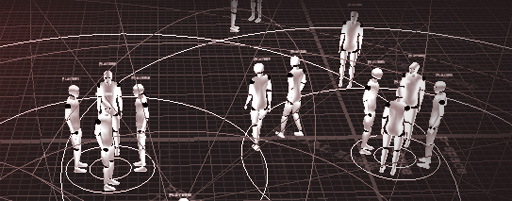
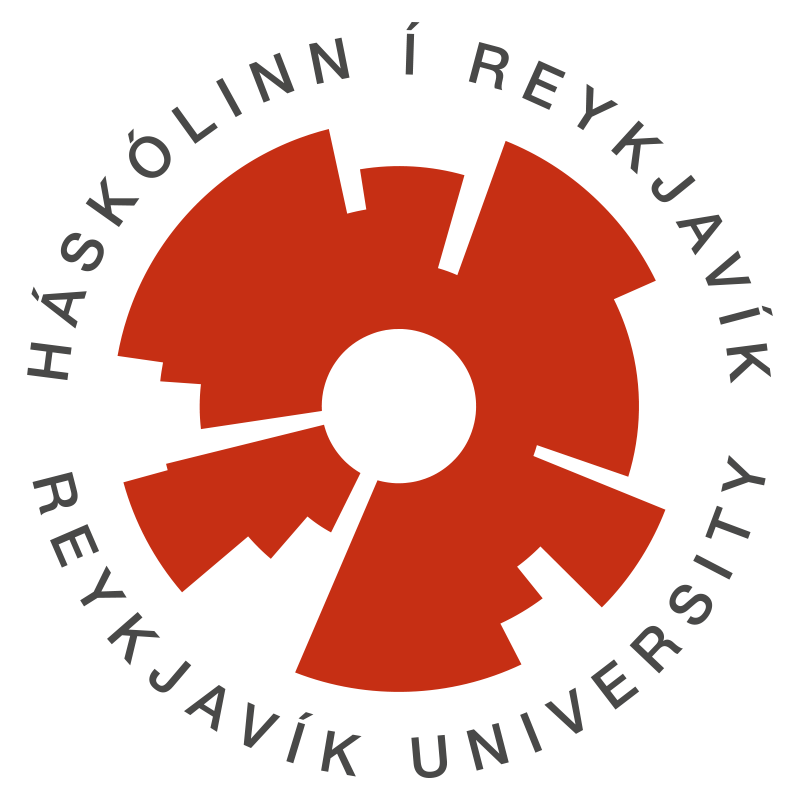
 The overall goal of the project is to support survivors of sexual violence (SVS) by using a virtual reality courtroom (VRC). Previous research has shown that some SVS may be reluctant to report their victimization to criminal justice authorities, at least in part because they fear going to court, where they will encounter a process and environment that are foreign to them, they will have to recount their difficult experience and because they will most likely have to face the perpetrator. SVS commonly experience distress when testifying as part of their case in court and such distress can interfere with their memory of the event. We therefore propose using VRC as a method of helping survivors who may be interested in reporting their experience to the criminal justice system but are worried about testifying in court. Lead by Rannveig Sigurvinsdóttir and Bryndís Björk Ásgeirsdóttir, Department of Psychology at RU
The overall goal of the project is to support survivors of sexual violence (SVS) by using a virtual reality courtroom (VRC). Previous research has shown that some SVS may be reluctant to report their victimization to criminal justice authorities, at least in part because they fear going to court, where they will encounter a process and environment that are foreign to them, they will have to recount their difficult experience and because they will most likely have to face the perpetrator. SVS commonly experience distress when testifying as part of their case in court and such distress can interfere with their memory of the event. We therefore propose using VRC as a method of helping survivors who may be interested in reporting their experience to the criminal justice system but are worried about testifying in court. Lead by Rannveig Sigurvinsdóttir and Bryndís Björk Ásgeirsdóttir, Department of Psychology at RU The aim of this project is to develop and publish an open source software framework for Spoken Dialogue Systems (SDS) in Icelandic with initial applications to automating telephone answering services and providing information for websites. The main components of an SDS are: 1) Automatic Speech Recognition (ASR), that converts the user’s voice to text; 2) Natural Language Understanding (NLU), that, for example, determines the intent of the user; 3) Dialogue Manager, which determines which action or response to take based on the voice command/query and/or information and policies of the system; 4) Natural Language Generation (NLG), that builds a text feedback; and 5) Text-to-Speech (TTS), that converts the text to voice feedback for the user. These modules will be developed or adapted for Icelandic during the project. Many components of these modules are already in development within the LT Programme for Icelandic, and thus the project will both benefit from and contribute to the LT Programme. To demonstrate the open SDS framework, two real-world use cases will be implemented and tested in collaboration with two partners from industry and public service. The project thus has a strong connection to both research and application development in Language Technology for Icelandic.
The aim of this project is to develop and publish an open source software framework for Spoken Dialogue Systems (SDS) in Icelandic with initial applications to automating telephone answering services and providing information for websites. The main components of an SDS are: 1) Automatic Speech Recognition (ASR), that converts the user’s voice to text; 2) Natural Language Understanding (NLU), that, for example, determines the intent of the user; 3) Dialogue Manager, which determines which action or response to take based on the voice command/query and/or information and policies of the system; 4) Natural Language Generation (NLG), that builds a text feedback; and 5) Text-to-Speech (TTS), that converts the text to voice feedback for the user. These modules will be developed or adapted for Icelandic during the project. Many components of these modules are already in development within the LT Programme for Icelandic, and thus the project will both benefit from and contribute to the LT Programme. To demonstrate the open SDS framework, two real-world use cases will be implemented and tested in collaboration with two partners from industry and public service. The project thus has a strong connection to both research and application development in Language Technology for Icelandic. Fatigue as a result of stress, workload and sleep problems, poses a serious risk to air traffic control (ATC) operations. The objective of the project is to develop a reliable fatigue risk management framework (FRMF) for reducing the risk of fatigue induced performance errors. A multidimensional approach is used where fatigue monitoring is tailored to each individual ATC operator and integrated with fatigue intervention methods. The project will go beyond existing projects by classifying bio-signals (symptoms of fatigue) within the context of relevant causal information for each individual such as sleep habits, personality, cognitive capacity and mental health. The FRMF will use the context information for each individual operator for both enhanced online monitoring of fatigue and for properly calibrating fatigue intervention methods. A final prototype of FRMF will be tested in a simulated ATC field environment using virtual reality (VR) technology. A serious limitation to the existing methods is a lack of rigorous empirical testing in the field. VR offers an effective way to conduct in-the-field testing, allowing for environmental control and safe testing.Lead by Kamilla Rún Jóhannsdóttir, Department of Psychology at RU
Fatigue as a result of stress, workload and sleep problems, poses a serious risk to air traffic control (ATC) operations. The objective of the project is to develop a reliable fatigue risk management framework (FRMF) for reducing the risk of fatigue induced performance errors. A multidimensional approach is used where fatigue monitoring is tailored to each individual ATC operator and integrated with fatigue intervention methods. The project will go beyond existing projects by classifying bio-signals (symptoms of fatigue) within the context of relevant causal information for each individual such as sleep habits, personality, cognitive capacity and mental health. The FRMF will use the context information for each individual operator for both enhanced online monitoring of fatigue and for properly calibrating fatigue intervention methods. A final prototype of FRMF will be tested in a simulated ATC field environment using virtual reality (VR) technology. A serious limitation to the existing methods is a lack of rigorous empirical testing in the field. VR offers an effective way to conduct in-the-field testing, allowing for environmental control and safe testing.Lead by Kamilla Rún Jóhannsdóttir, Department of Psychology at RU With rapidly increasing urban populations worldwide, questions about how to serve
psychological and social needs in urban design and planning have become increasingly acute. Cities that Sustain Us (CiSuUs) is an ongoing international project that offers a new ideological, methodological and technological approach to encourage psychological and social sustainable urban development. By applying the latest Virtual Reality technology, the project focuses on studying the psychological interaction between people and urban environments, in order to improve the urban quality. The new CiSuUs product offering is in two parts, building on the results of the project so far: 1) A powerful and accessible combination of software and visual display equipment, the VRPsychLab, that helps researchers build, configure and run psychological studies, with capture of affective, cognitive and physiological data using multiple methods; and 2) Consultancy to architects, planners, builders, stakeholders, authorities, and other relevant actors on how to make more psychologically and socially sustainable urban environments, resulting in better-informed decision making, lower risks of design and planning failures, and more efficient use of funds.
With rapidly increasing urban populations worldwide, questions about how to serve
psychological and social needs in urban design and planning have become increasingly acute. Cities that Sustain Us (CiSuUs) is an ongoing international project that offers a new ideological, methodological and technological approach to encourage psychological and social sustainable urban development. By applying the latest Virtual Reality technology, the project focuses on studying the psychological interaction between people and urban environments, in order to improve the urban quality. The new CiSuUs product offering is in two parts, building on the results of the project so far: 1) A powerful and accessible combination of software and visual display equipment, the VRPsychLab, that helps researchers build, configure and run psychological studies, with capture of affective, cognitive and physiological data using multiple methods; and 2) Consultancy to architects, planners, builders, stakeholders, authorities, and other relevant actors on how to make more psychologically and socially sustainable urban environments, resulting in better-informed decision making, lower risks of design and planning failures, and more efficient use of funds. We propose to push the boundaries in modeling and synthesis of social character behavior by enriching the state-of-the-art with socio-territorial reasoning and spatial knowledge. Our approach aims to make digital characters more believable as well as deepen our understanding of human social behavior. As characters become more believable, interaction with them becomes more natural and the stories they populate more effective. Fundamental components for character automation include a navigation system and an animation system. While these components may produce natural movement they ignore social interaction, resulting in motion that is out of place when multiple characters occupy a space. We will wrap these two components in a third one that mimics how people reason about social space. The approach is based on the qualitative representation of space as described by theories of human territories, f-formation and proxemics. The work builds on our successful platform for reactive social intelligence and specifically addresses outstanding challenges: (1) Territorial Motion Interface, (2) Arbitration of Conflicting Socio-Territorial Movement, (3) Synchronization and Temporal Reasoning and (4) Representing and Reasoning about Context. Our methodology includes iterative design, fast prototyping, and subject evaluations of results. TELECOM ParisTech, MIT and Sólfar will be close collaborators, contributing expertise and applying the
results.
We propose to push the boundaries in modeling and synthesis of social character behavior by enriching the state-of-the-art with socio-territorial reasoning and spatial knowledge. Our approach aims to make digital characters more believable as well as deepen our understanding of human social behavior. As characters become more believable, interaction with them becomes more natural and the stories they populate more effective. Fundamental components for character automation include a navigation system and an animation system. While these components may produce natural movement they ignore social interaction, resulting in motion that is out of place when multiple characters occupy a space. We will wrap these two components in a third one that mimics how people reason about social space. The approach is based on the qualitative representation of space as described by theories of human territories, f-formation and proxemics. The work builds on our successful platform for reactive social intelligence and specifically addresses outstanding challenges: (1) Territorial Motion Interface, (2) Arbitration of Conflicting Socio-Territorial Movement, (3) Synchronization and Temporal Reasoning and (4) Representing and Reasoning about Context. Our methodology includes iterative design, fast prototyping, and subject evaluations of results. TELECOM ParisTech, MIT and Sólfar will be close collaborators, contributing expertise and applying the
results.
 Psychological factors are often neglected in environmental design and planning processes initiating dissatisfying and unsustainable urban development. To encourage more humane and sustainable urban development, better approaches must be implemented. They can build on the vast scientific literature in environmental psychology and new technological solutions. Computer and virtual reality technology, where people can interact directly with a high quality, virtual environment in controlled settings, opens up new opportunities for people-environment studies. However, the level of computer expertise required to build, configure and carry out studies utilizing the technology seems to be an obstacle. In the "Cities that Sustain Us" project we bridged the gap with a powerful software to run VR-based environmental studies. In this project “Cities that Sustain Us 2: Creating Virtual Futures”, we plan further developments of the VR-based approach while applying it to real-world planning projects.
Psychological factors are often neglected in environmental design and planning processes initiating dissatisfying and unsustainable urban development. To encourage more humane and sustainable urban development, better approaches must be implemented. They can build on the vast scientific literature in environmental psychology and new technological solutions. Computer and virtual reality technology, where people can interact directly with a high quality, virtual environment in controlled settings, opens up new opportunities for people-environment studies. However, the level of computer expertise required to build, configure and carry out studies utilizing the technology seems to be an obstacle. In the "Cities that Sustain Us" project we bridged the gap with a powerful software to run VR-based environmental studies. In this project “Cities that Sustain Us 2: Creating Virtual Futures”, we plan further developments of the VR-based approach while applying it to real-world planning projects.  The world’s rapid population growth is concentrating in cities, raising concerns about environmental, economic and social sustainability. The compact city has been proposed as a promising urban form to increase sustainability, but empirical work has not supported the link between urban density and sustainability. A possible explanation might be the common neglect of psychological factors in design and planning processes. The restorative environmental design approach (RED) suggests applying knowledge about basic human needs for restoration, which is the renewal of psychological, physical and social resources that individuals use to meet everyday demands. Guided by RED, virtual reality (VR) where humans can be placed inside high-quality interactive rendering of a configurable urban environment, can be the tool needed to evaluate restorative quality in future designs. The aim of this project is to reinforce the foundation of RED and apply it for future development of an existing low dense neighborhood in Reykjavik using a new instrumented VR laboratory. We propose three studies that answer the following key questions: (1) Are the restorative effects measured in a virtual environment indicative of the restorative effects of a corresponding real environment? (2) Can we estimate the restorative impact of specific environmental design measures? (3) Can we use those design measures to densify an existing urban environment with low density and low restorative potential?
The world’s rapid population growth is concentrating in cities, raising concerns about environmental, economic and social sustainability. The compact city has been proposed as a promising urban form to increase sustainability, but empirical work has not supported the link between urban density and sustainability. A possible explanation might be the common neglect of psychological factors in design and planning processes. The restorative environmental design approach (RED) suggests applying knowledge about basic human needs for restoration, which is the renewal of psychological, physical and social resources that individuals use to meet everyday demands. Guided by RED, virtual reality (VR) where humans can be placed inside high-quality interactive rendering of a configurable urban environment, can be the tool needed to evaluate restorative quality in future designs. The aim of this project is to reinforce the foundation of RED and apply it for future development of an existing low dense neighborhood in Reykjavik using a new instrumented VR laboratory. We propose three studies that answer the following key questions: (1) Are the restorative effects measured in a virtual environment indicative of the restorative effects of a corresponding real environment? (2) Can we estimate the restorative impact of specific environmental design measures? (3) Can we use those design measures to densify an existing urban environment with low density and low restorative potential? The objective of this project is to simultaneously advance the state of the art in technology for virtual language training environments and bring the latest
methods of language and culture learning to the instruction of Icelandic. We propose a new technology that builds on advanced systems for spoken language training being developed at
The objective of this project is to simultaneously advance the state of the art in technology for virtual language training environments and bring the latest
methods of language and culture learning to the instruction of Icelandic. We propose a new technology that builds on advanced systems for spoken language training being developed at  In most social virtual environments such as Second Life or World of Warcraft, where users are represented by graphical avatars, the expression of communicative intent and social behavior relies on explicit user input such as by picking "wave" from a menu or inserting emoticons into chat text. This approach is fine for deliberate acts, but to portray continuous and relevant social presence through appropriate nonverbal behavior, it is impossible to rely on user micro-management. In the same way that avatars autonomously animate walk cycles and physical collisions when told to traverse virtual terrain, they need to automate spontaneous social cues such as gaze and posture to reveal the nature of their social situation. We are building tools that explore the automation of social behavior in avatars and agents based on theories of social interaction. For example, we built
In most social virtual environments such as Second Life or World of Warcraft, where users are represented by graphical avatars, the expression of communicative intent and social behavior relies on explicit user input such as by picking "wave" from a menu or inserting emoticons into chat text. This approach is fine for deliberate acts, but to portray continuous and relevant social presence through appropriate nonverbal behavior, it is impossible to rely on user micro-management. In the same way that avatars autonomously animate walk cycles and physical collisions when told to traverse virtual terrain, they need to automate spontaneous social cues such as gaze and posture to reveal the nature of their social situation. We are building tools that explore the automation of social behavior in avatars and agents based on theories of social interaction. For example, we built  PhD Project of Michelangelo Diamanti (Graduated Spring 2023)
PhD Project of Michelangelo Diamanti (Graduated Spring 2023) PhD Project of Angelo Cafaro (Graduated Spring 2014)
PhD Project of Angelo Cafaro (Graduated Spring 2014) M. Sc. Thesis of Kjartan Már Andersen (Graduated Fall 2025 - 30 ECTS
M. Sc. Thesis of Kjartan Már Andersen (Graduated Fall 2025 - 30 ECTS M. Sc. Thesis of Saul Omar Vilchez Sullca (Graduated Fall 2024 - 60 ECTS)
M. Sc. Thesis of Saul Omar Vilchez Sullca (Graduated Fall 2024 - 60 ECTS) M. Sc. Thesis of Francesco Moschella (Graduated Fall 2024 - 30 ECTS)
M. Sc. Thesis of Francesco Moschella (Graduated Fall 2024 - 30 ECTS) M. Sc. Thesis of Anna Franziska Horne (Graduated Spring 2023 - 30 ECTS)
M. Sc. Thesis of Anna Franziska Horne (Graduated Spring 2023 - 30 ECTS) M. Sc. Thesis of Karl Jóhann Jóhansson (Graduated Spring 2023 - 30 ECTS)
M. Sc. Thesis of Karl Jóhann Jóhansson (Graduated Spring 2023 - 30 ECTS) M. Sc. Thesis of Elías Ingi Björgvinsson (Graduated Spring 2022 - 30 ECTS)
M. Sc. Thesis of Elías Ingi Björgvinsson (Graduated Spring 2022 - 30 ECTS) M. Sc. Thesis of Emil Þór Emilsson (Graduated Spring 2022 - 60 ECTS)
M. Sc. Thesis of Emil Þór Emilsson (Graduated Spring 2022 - 60 ECTS) M. Sc. Thesis of Valentin Aurel Antoni (Co-Supervision - Graduated from TU Munchen Fall 2021 - 30 ECTS)
M. Sc. Thesis of Valentin Aurel Antoni (Co-Supervision - Graduated from TU Munchen Fall 2021 - 30 ECTS)
 M. Sc. Thesis of Dario Rizzo (Graduated Winter 2020 - 30 ECTS)
M. Sc. Thesis of Dario Rizzo (Graduated Winter 2020 - 30 ECTS) M.Sc. Thesis of Unnar Kristjánsson (Graduated Spring 2019 - 60 ECTS)
M.Sc. Thesis of Unnar Kristjánsson (Graduated Spring 2019 - 60 ECTS) M.Sc. Thesis of Hörður Már Hafsteinsson (Graduated Spring 2019 - 60 ECTS)
M.Sc. Thesis of Hörður Már Hafsteinsson (Graduated Spring 2019 - 60 ECTS) M.Sc. Thesis of Ari Þórðarson (Graduated Spring 2018 - 30 ECTS)
M.Sc. Thesis of Ari Þórðarson (Graduated Spring 2018 - 30 ECTS) M.Sc. Thesis of Guðrún Inga Baldursdóttir (Graduated Spring 2018 - 30 ECTS)
M.Sc. Thesis of Guðrún Inga Baldursdóttir (Graduated Spring 2018 - 30 ECTS) M.Sc. Thesis of Marco Massetti, Joy Rossi and Leonardo Veroli (Graduated Fall 2017 - 30 ECTS)
M.Sc. Thesis of Marco Massetti, Joy Rossi and Leonardo Veroli (Graduated Fall 2017 - 30 ECTS) M.Sc. Thesis of Brynjar Ólafsson (Graduated Spring 2017 - 60 ECTS)
M.Sc. Thesis of Brynjar Ólafsson (Graduated Spring 2017 - 60 ECTS) M.Sc. Thesis Project of Ásgeir Jónasson (Graduated Spring 2015 - 30 ECTS)
M.Sc. Thesis Project of Ásgeir Jónasson (Graduated Spring 2015 - 30 ECTS) M.Sc. Thesis Project of Karl Valdimar Kristinsson (Graduated Spring 2015 - 30 ECTS)
M.Sc. Thesis Project of Karl Valdimar Kristinsson (Graduated Spring 2015 - 30 ECTS) M.A. in Language Technology Thesis Project of Stefán Ólafsson (Jointly with University of Iceland) (Graduated Spring 2015 - 30 ECTS)
M.A. in Language Technology Thesis Project of Stefán Ólafsson (Jointly with University of Iceland) (Graduated Spring 2015 - 30 ECTS)
 M.Sc. Thesis Project of Francesco Lilli (Graduated Spring 2012 - 30 ECTS)
M.Sc. Thesis Project of Francesco Lilli (Graduated Spring 2012 - 30 ECTS) M.Sc. Thesis Project of David Sorrentino (Graduated Spring 2012 - 30 ECTS)
M.Sc. Thesis Project of David Sorrentino (Graduated Spring 2012 - 30 ECTS) M.Sc. Thesis Project of Andrea Monacchi (Graduated Spring 2012 - 30 ECTS)
M.Sc. Thesis Project of Andrea Monacchi (Graduated Spring 2012 - 30 ECTS)
 M.Sc. Thesis Project of Alfredo Conte (Graduated from University of Camerino Spring 2012 - 30 ECTS)
M.Sc. Thesis Project of Alfredo Conte (Graduated from University of Camerino Spring 2012 - 30 ECTS)
 M.Sc. Thesis Project of Lorenzo Scagnetti (Graduated Winter 2011/12 - 30 ECTS)
M.Sc. Thesis Project of Lorenzo Scagnetti (Graduated Winter 2011/12 - 30 ECTS)
 M.Sc. Thesis Project of Sigrún María Ammendrup (Graduated Summer 2011 - 30 ECTS)
M.Sc. Thesis Project of Sigrún María Ammendrup (Graduated Summer 2011 - 30 ECTS)
 M.Sc. Thesis of Palli Thráinsson (Graduated Spring 2011 - 60 ECTS)
M.Sc. Thesis of Palli Thráinsson (Graduated Spring 2011 - 60 ECTS)
 M.Sc. Thesis Project of Carmine Oliva (Graduated Spring 2011 - 30 ECTS)
M.Sc. Thesis Project of Carmine Oliva (Graduated Spring 2011 - 30 ECTS)
 M.Sc. Thesis Project of Raffaele Gaito (Graduated Spring from Salerno University 2010 - 30 ECTS)
M.Sc. Thesis Project of Raffaele Gaito (Graduated Spring from Salerno University 2010 - 30 ECTS)
 M.Sc. Thesis of Claudio Pedica (Graduated Spring 2009 - 60 ECTS)
M.Sc. Thesis of Claudio Pedica (Graduated Spring 2009 - 60 ECTS)
 M.Sc. Thesis Project of Angelo Cafaro, (Graduated from Salerno University Spring 2009 - 30 ECTS)
M.Sc. Thesis Project of Angelo Cafaro, (Graduated from Salerno University Spring 2009 - 30 ECTS)
































